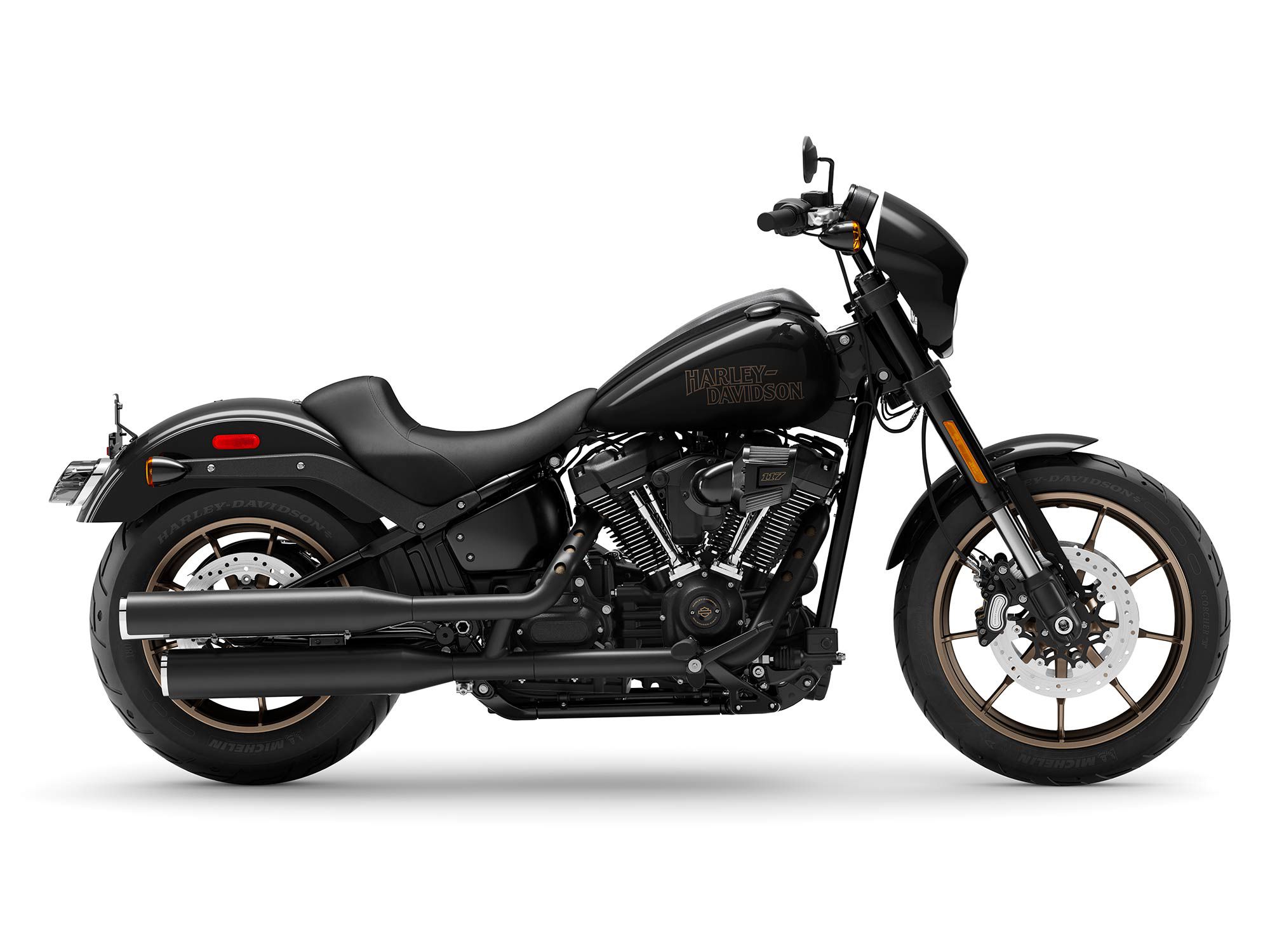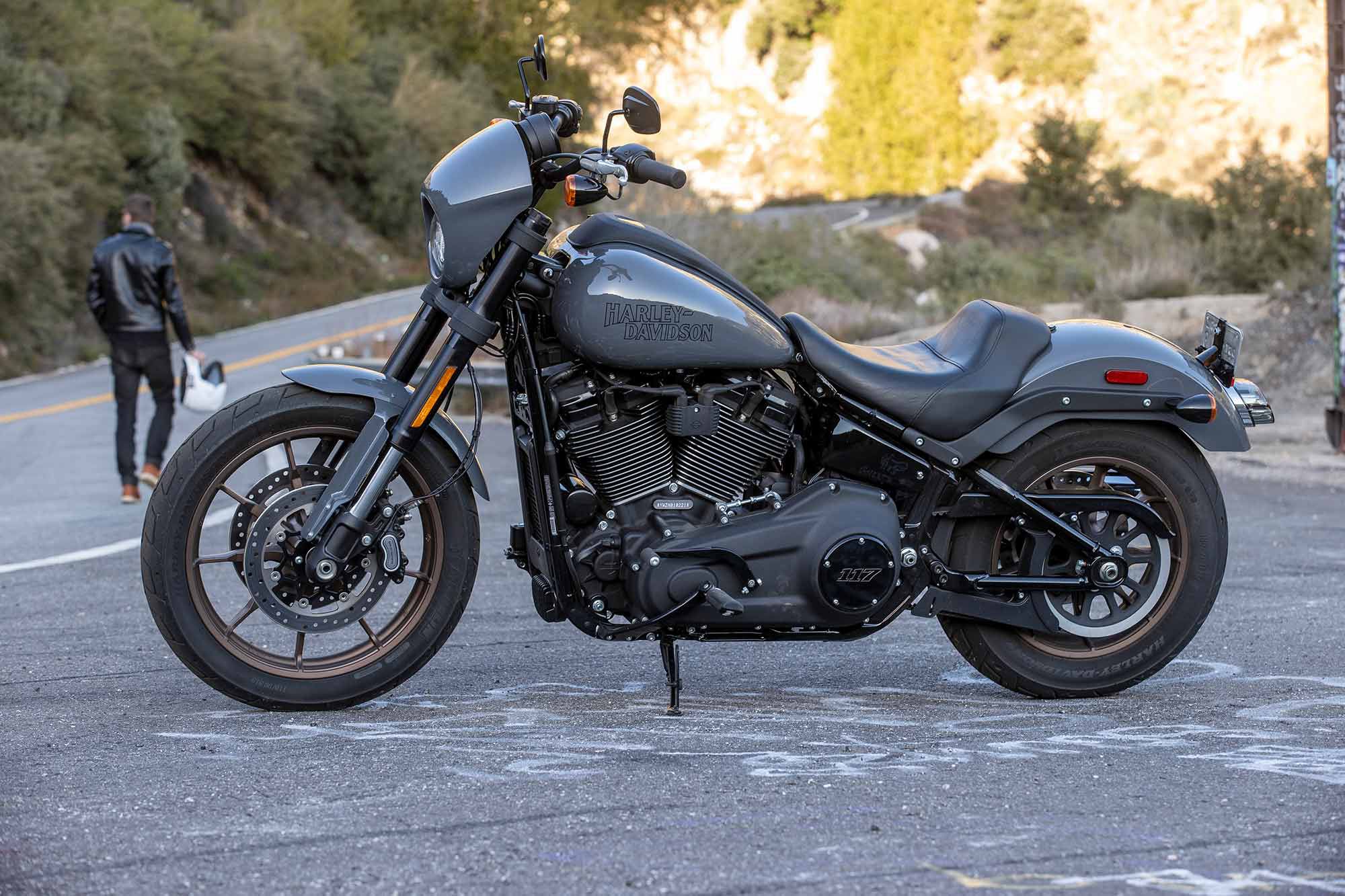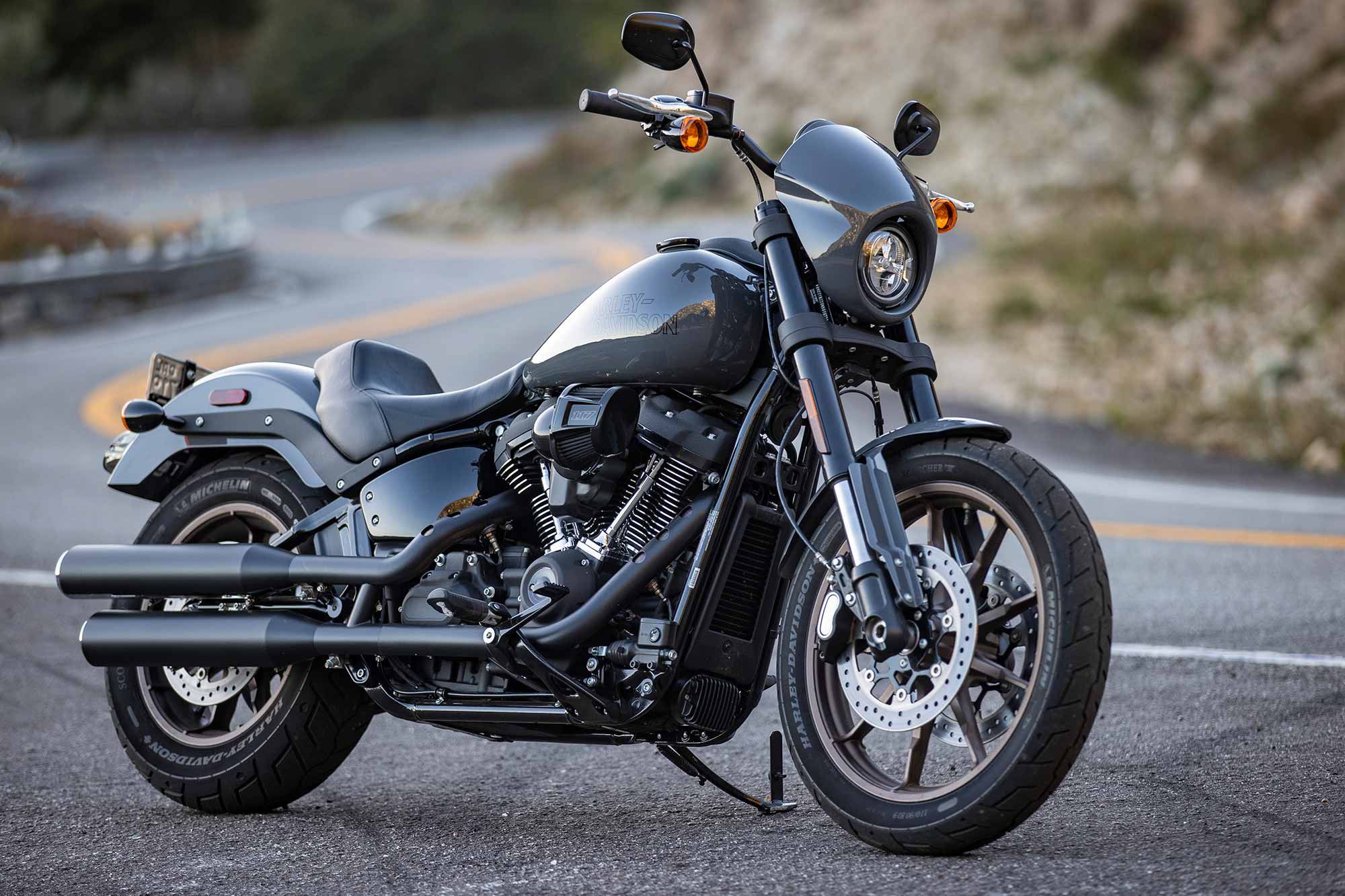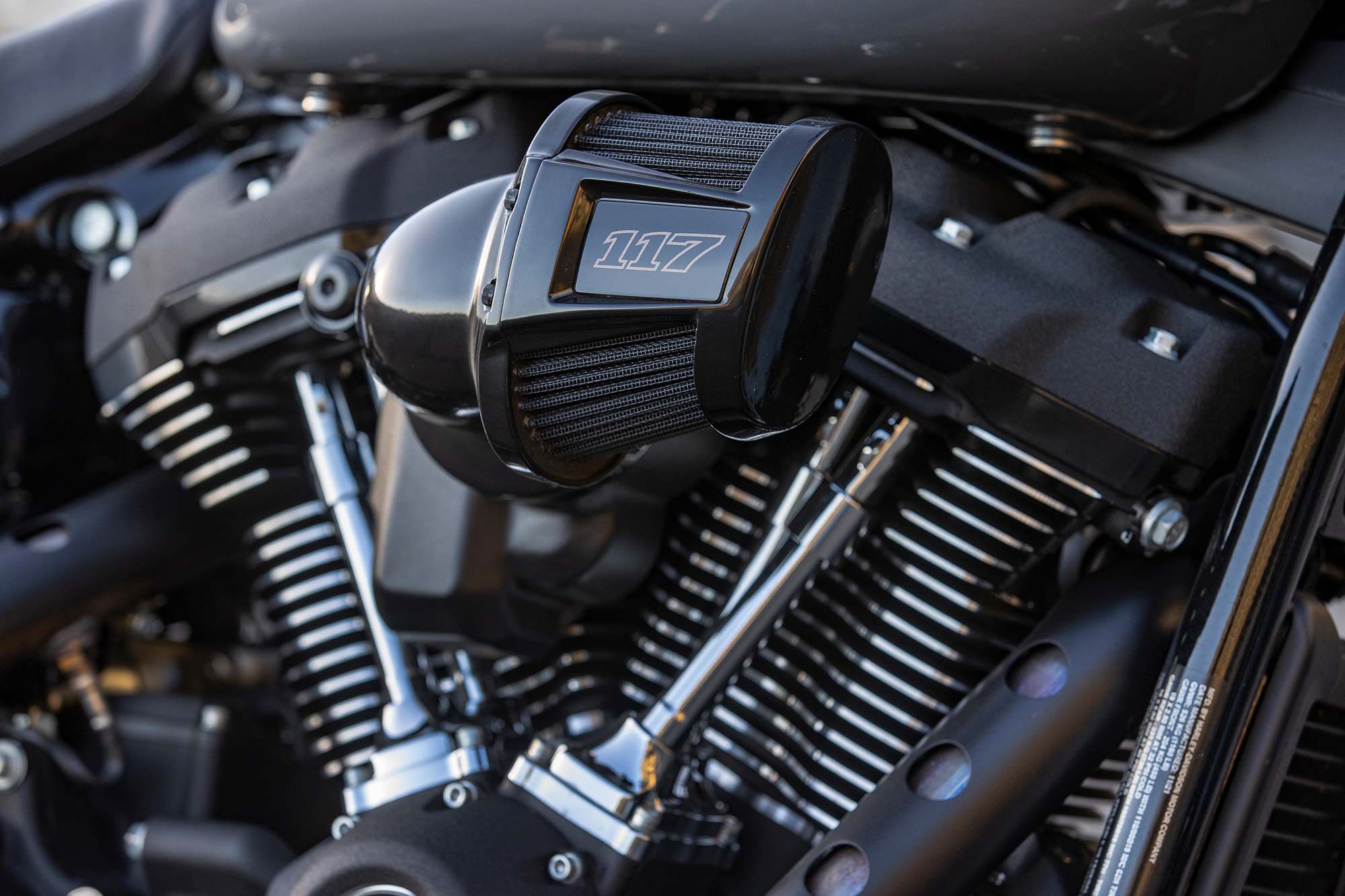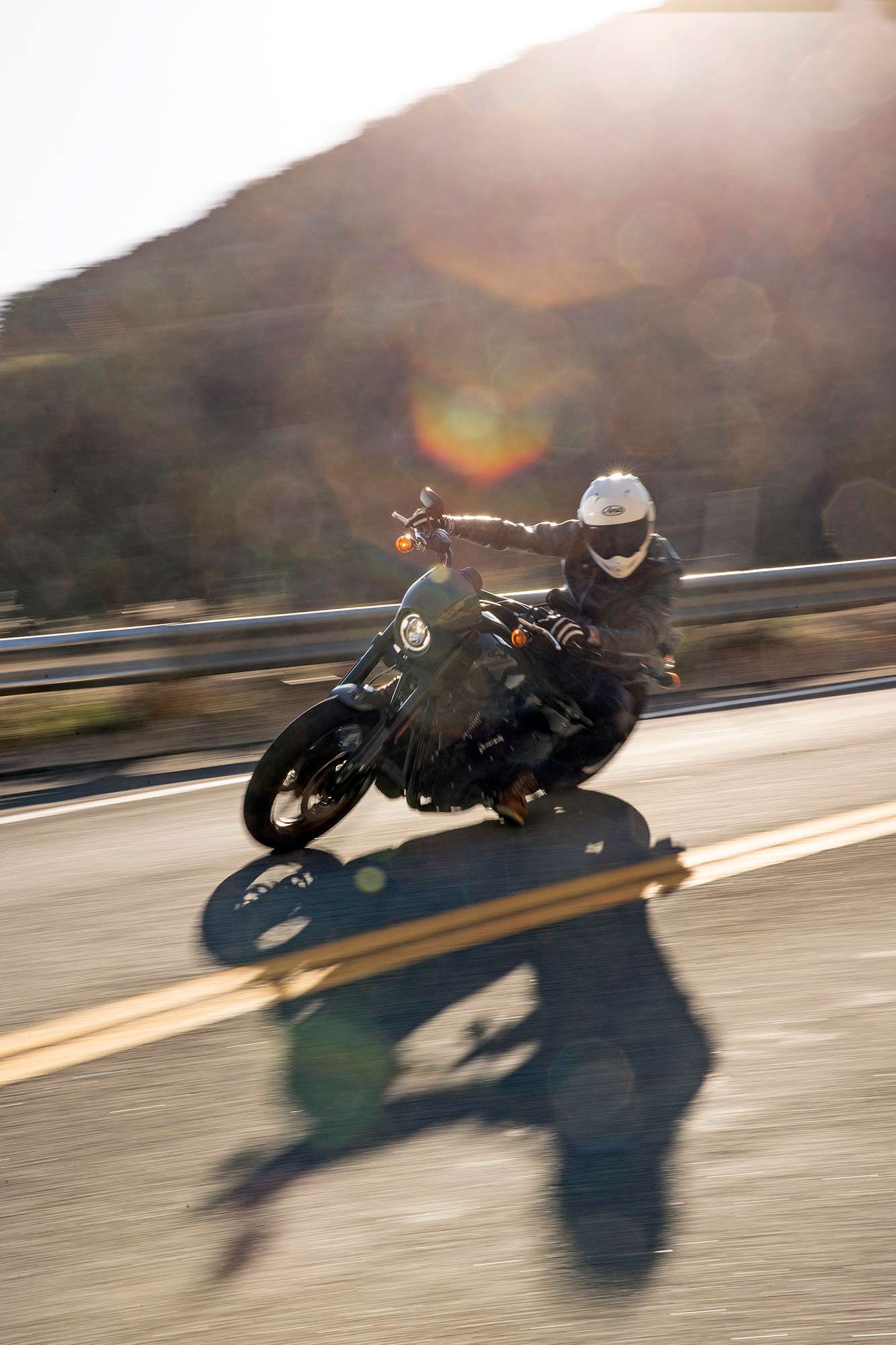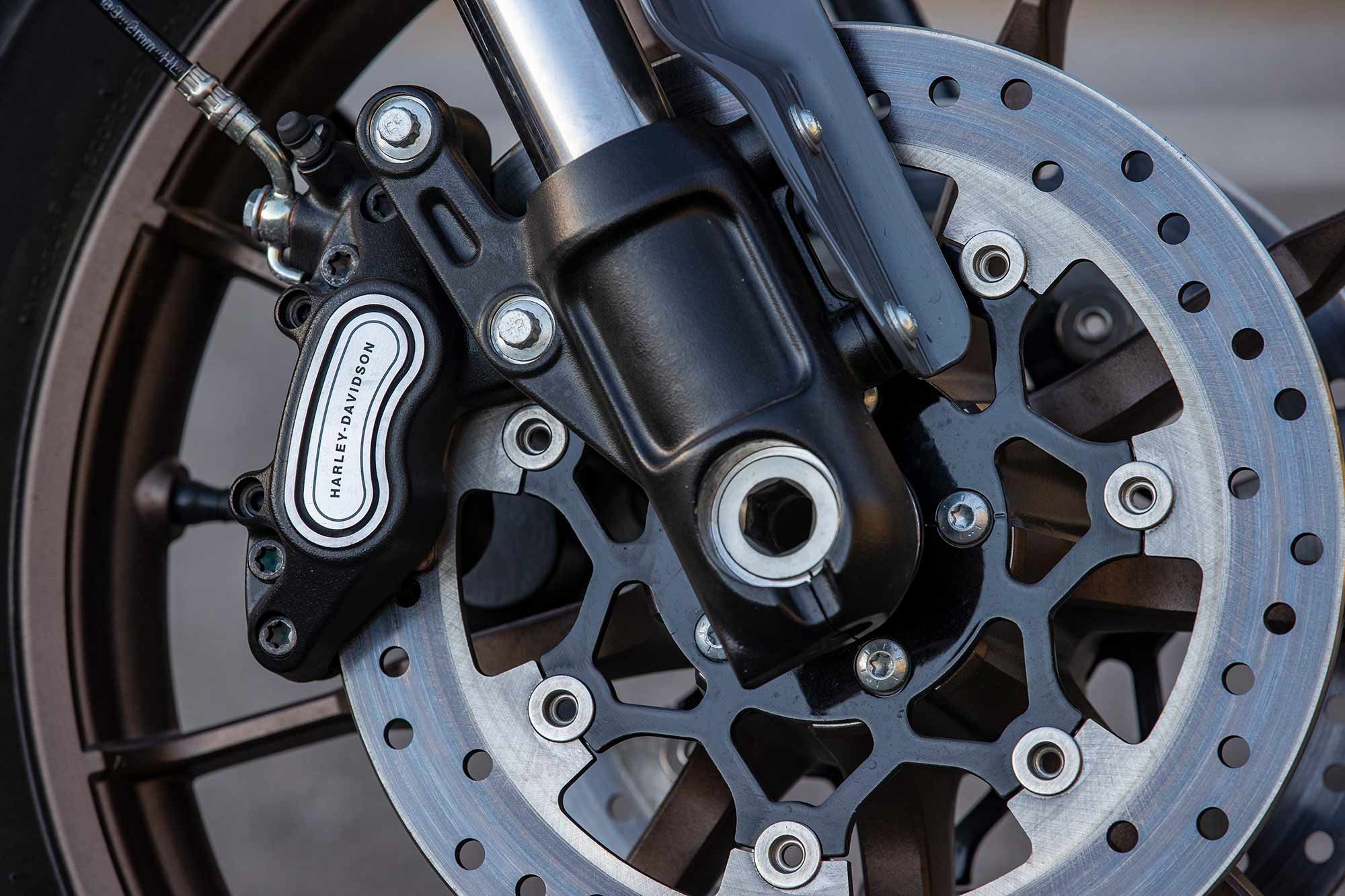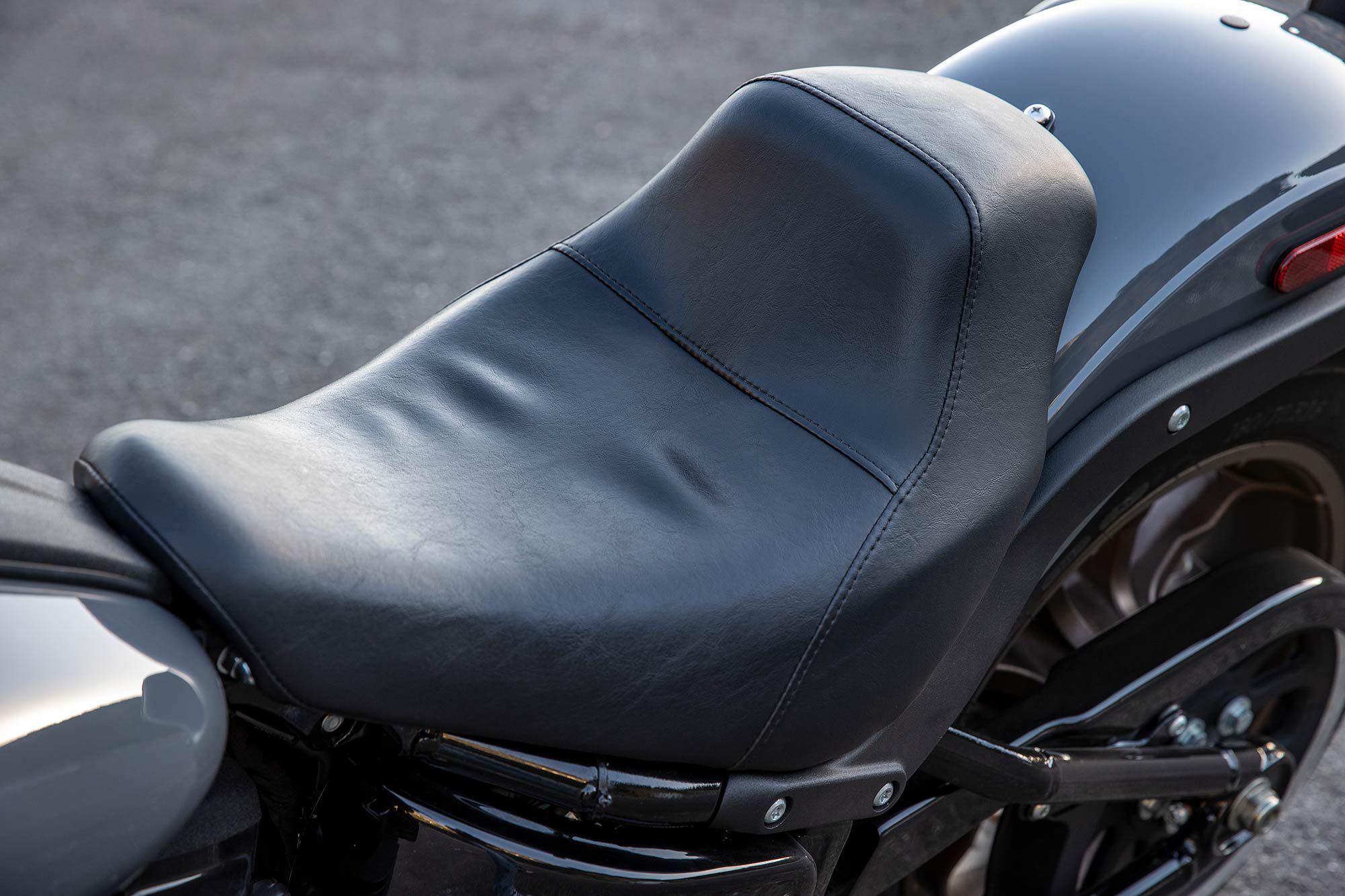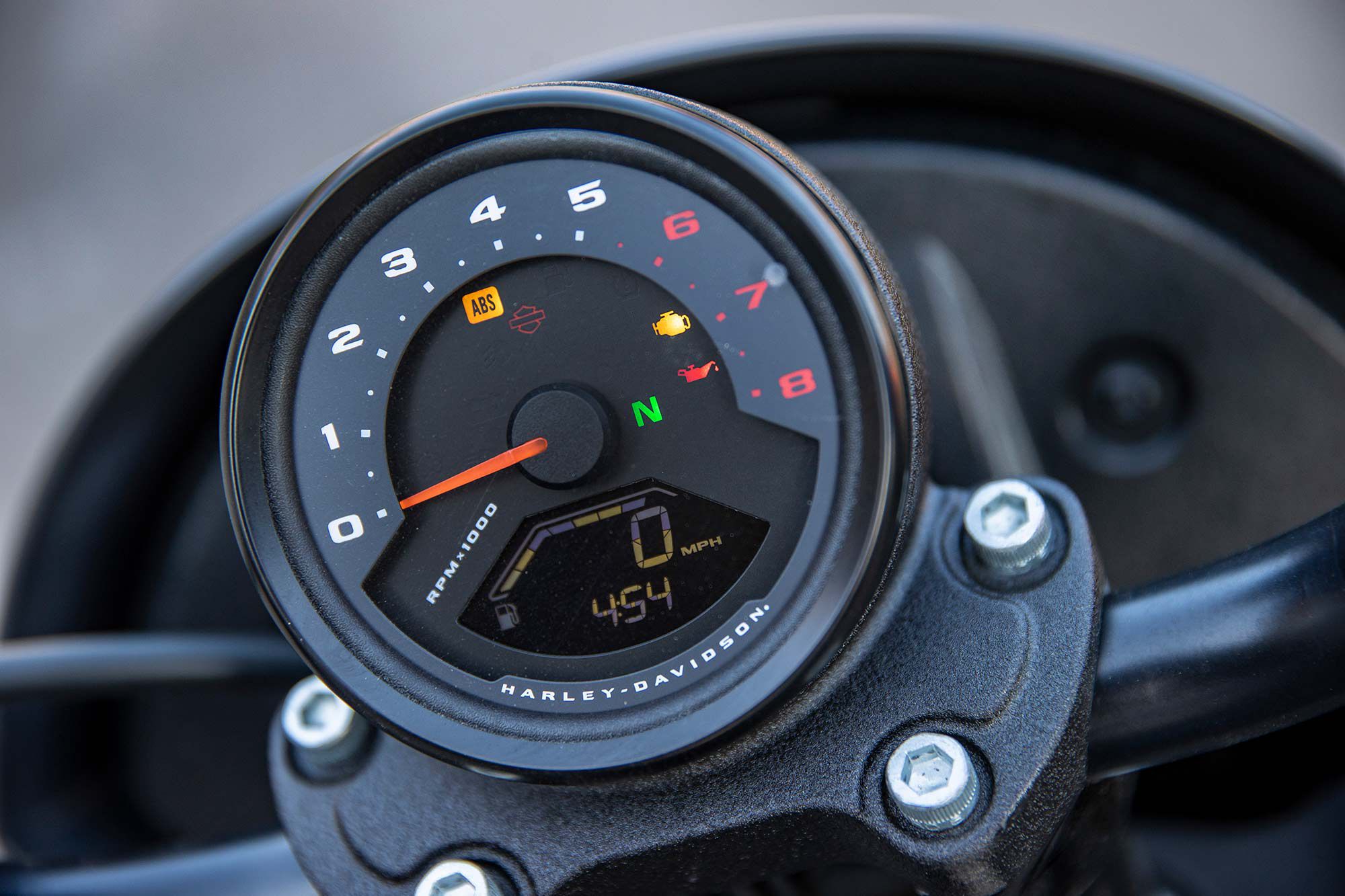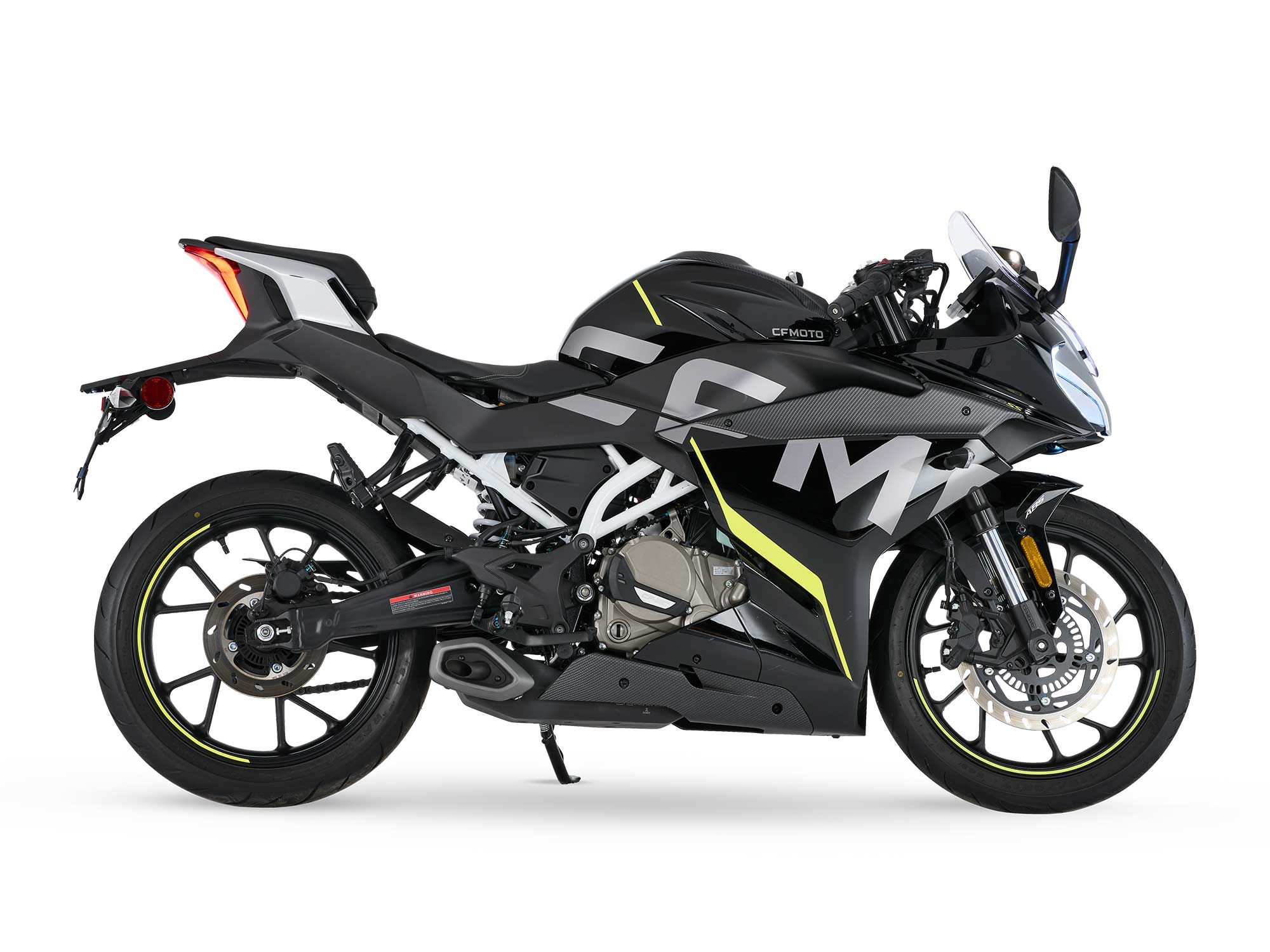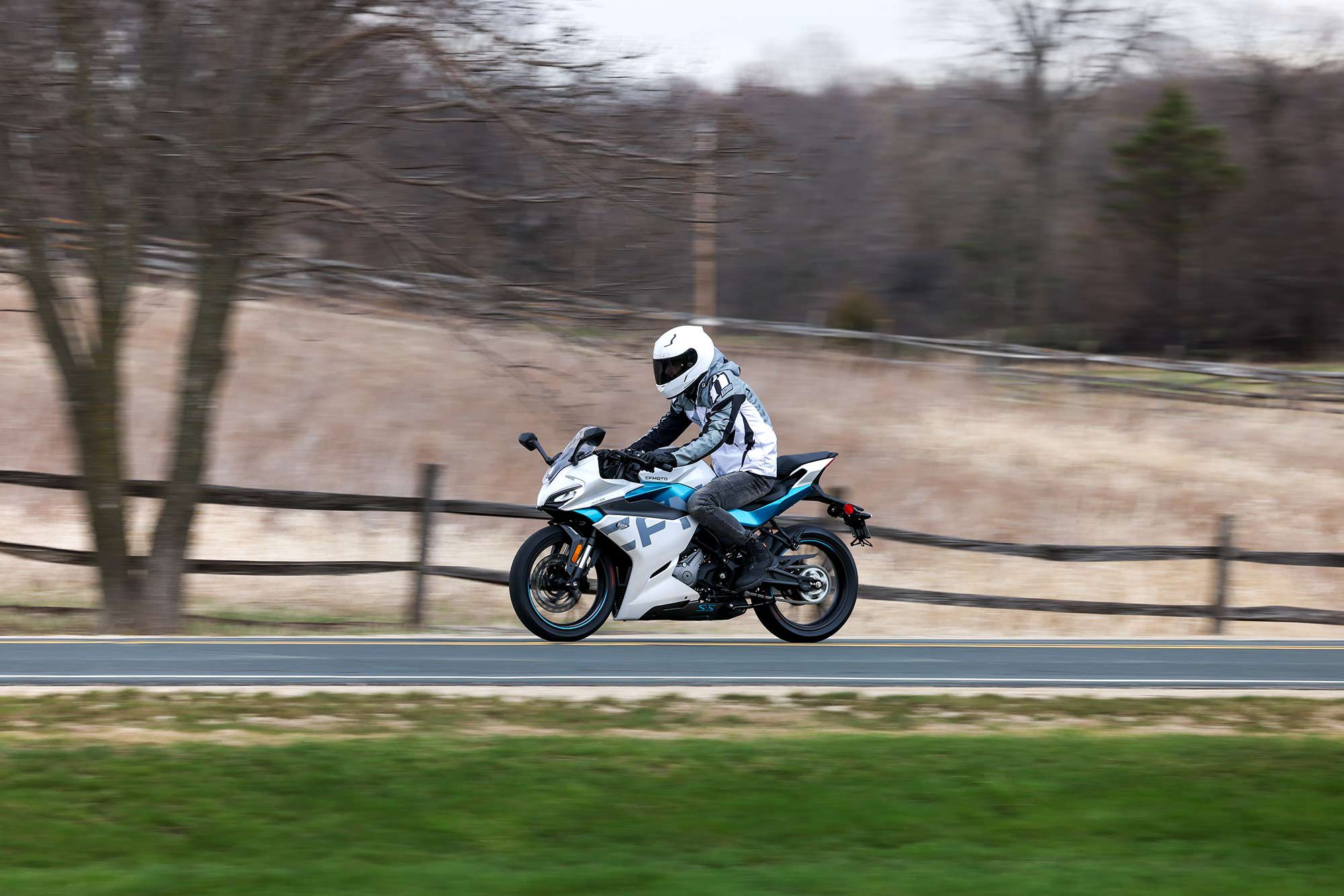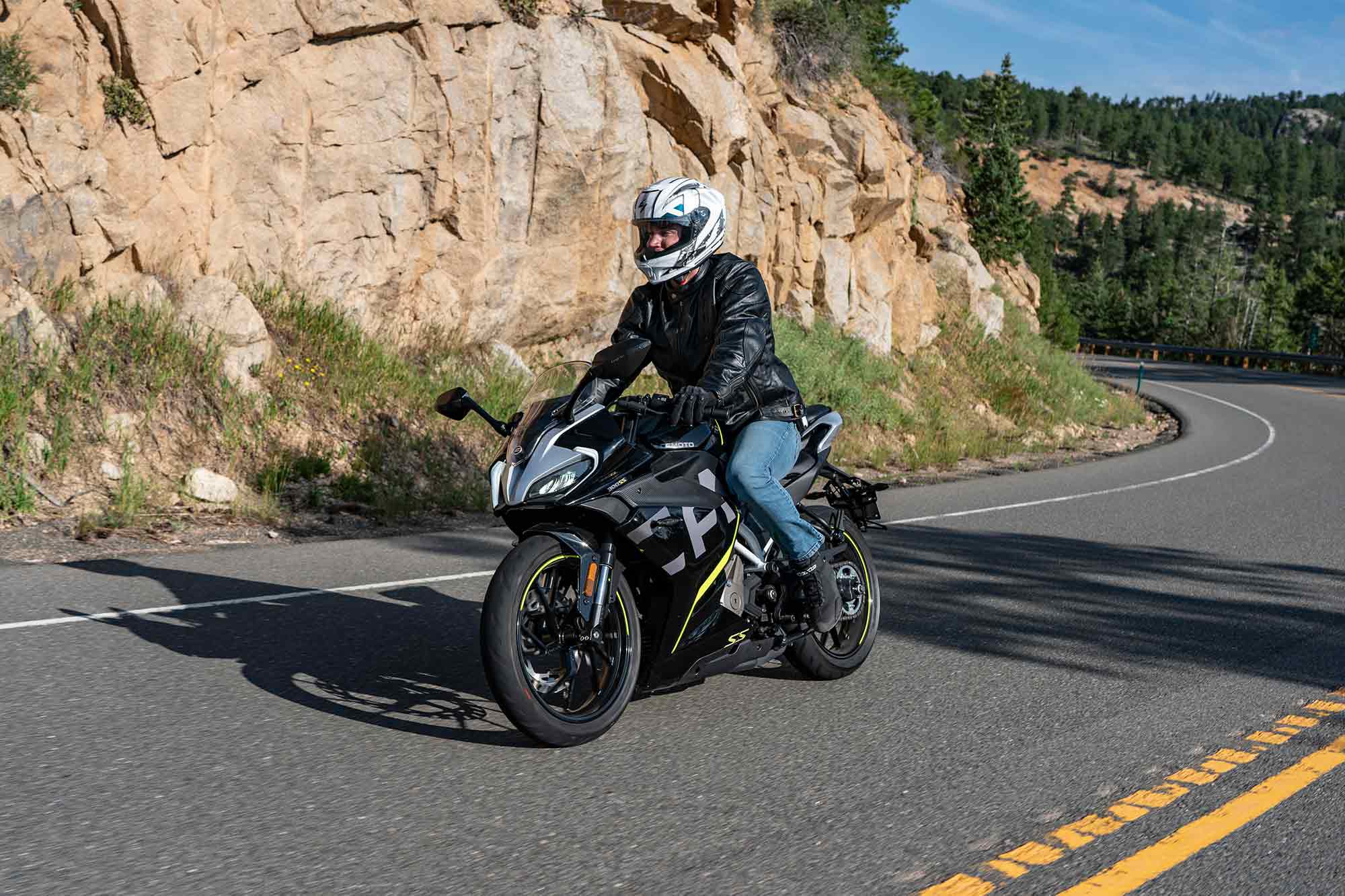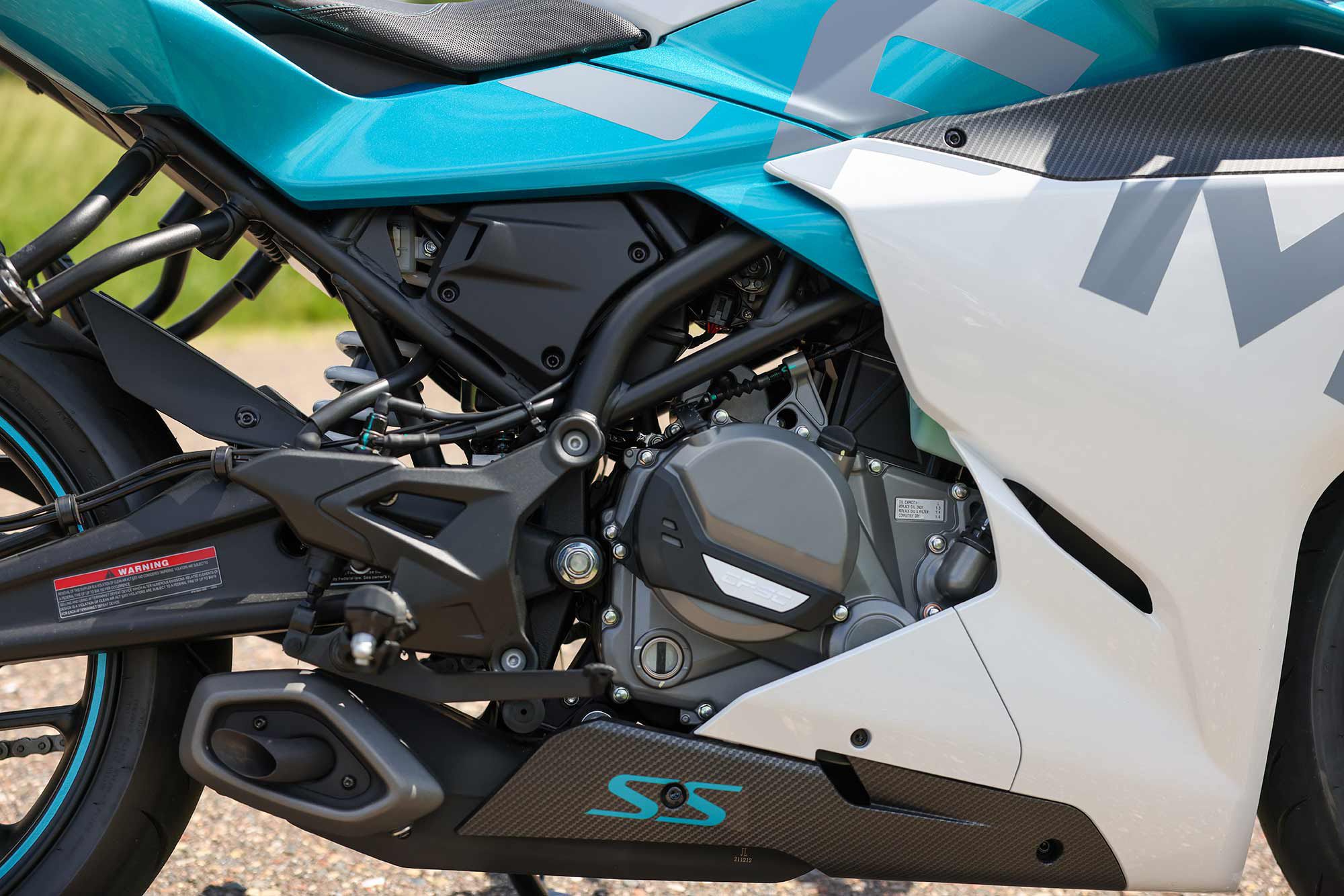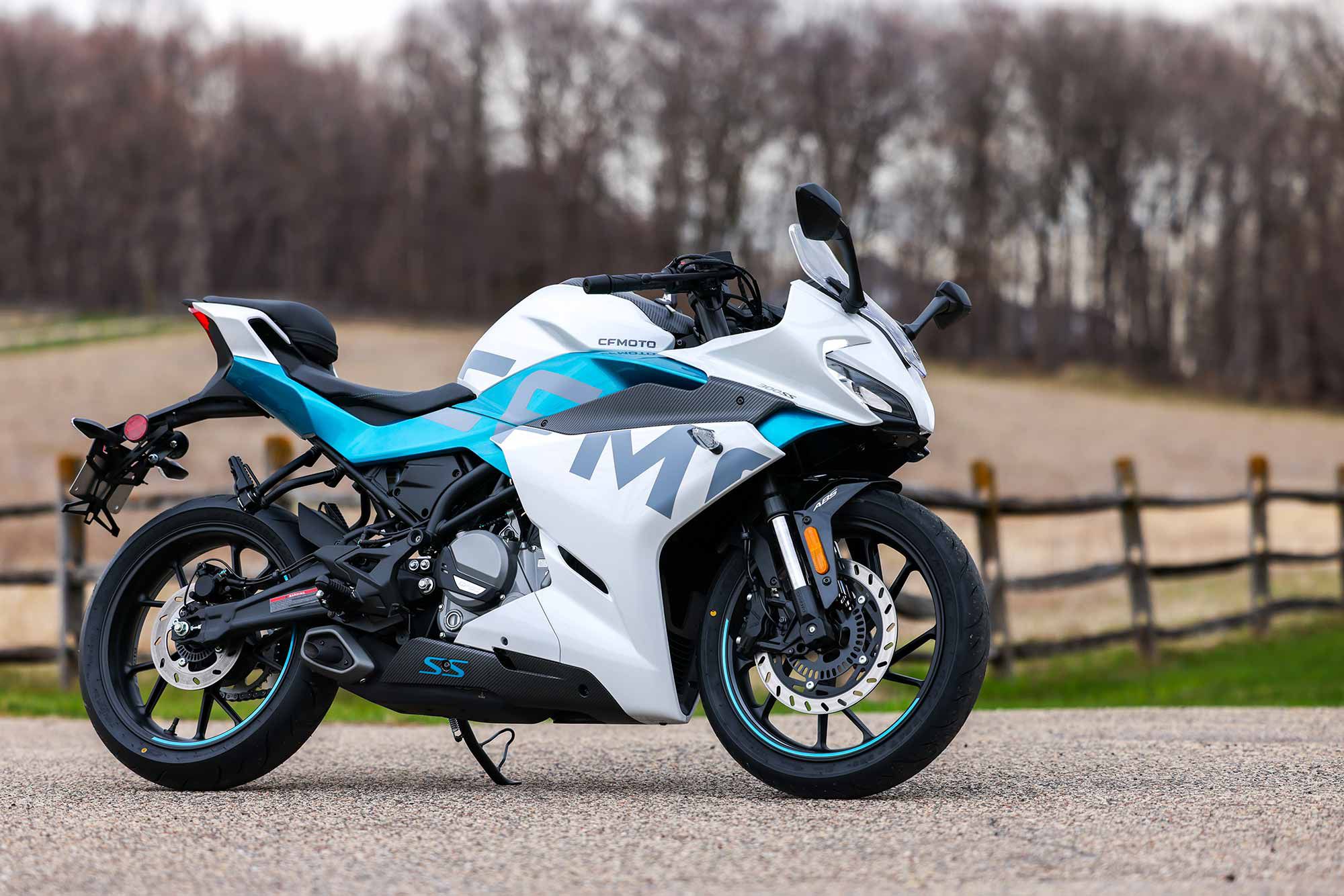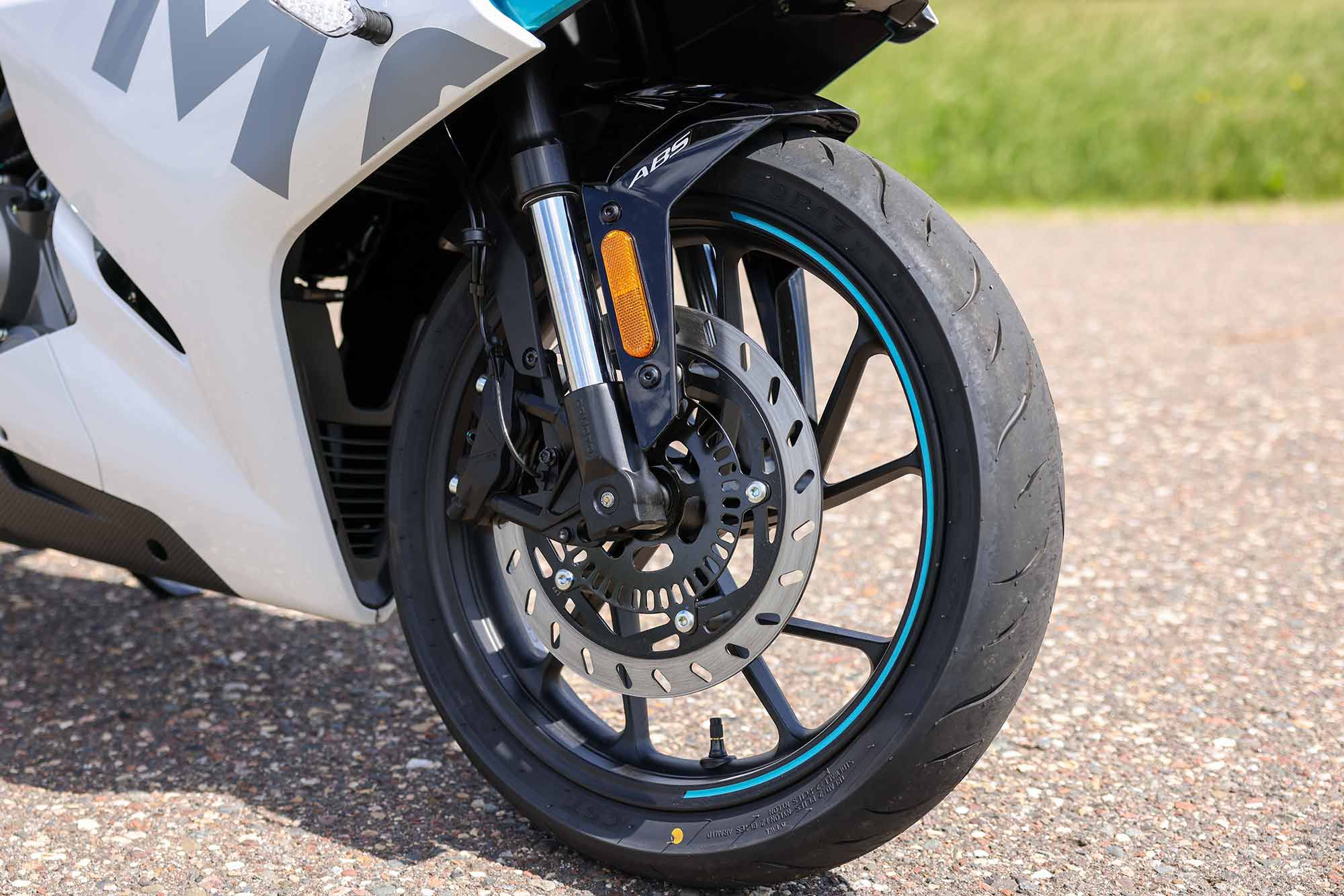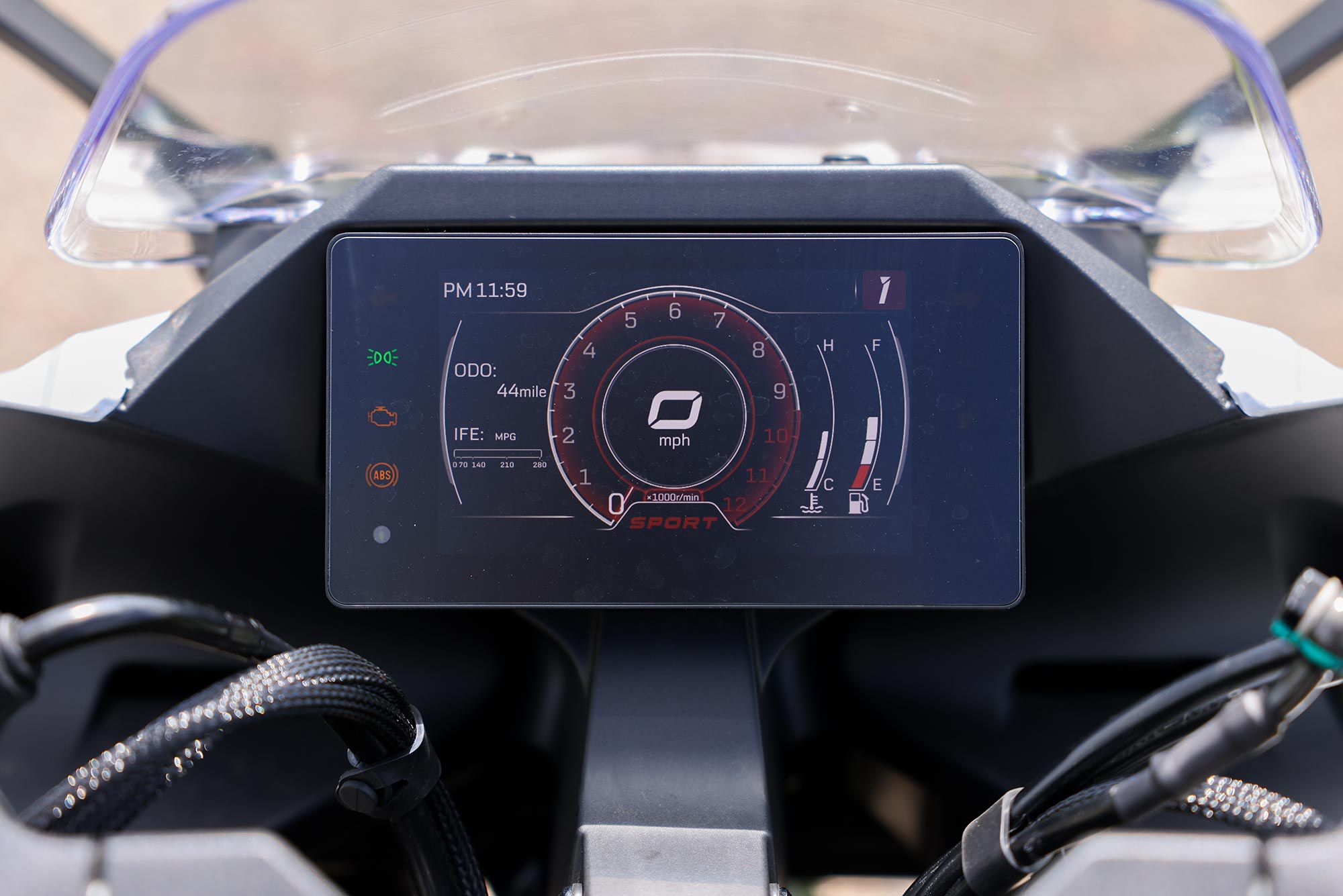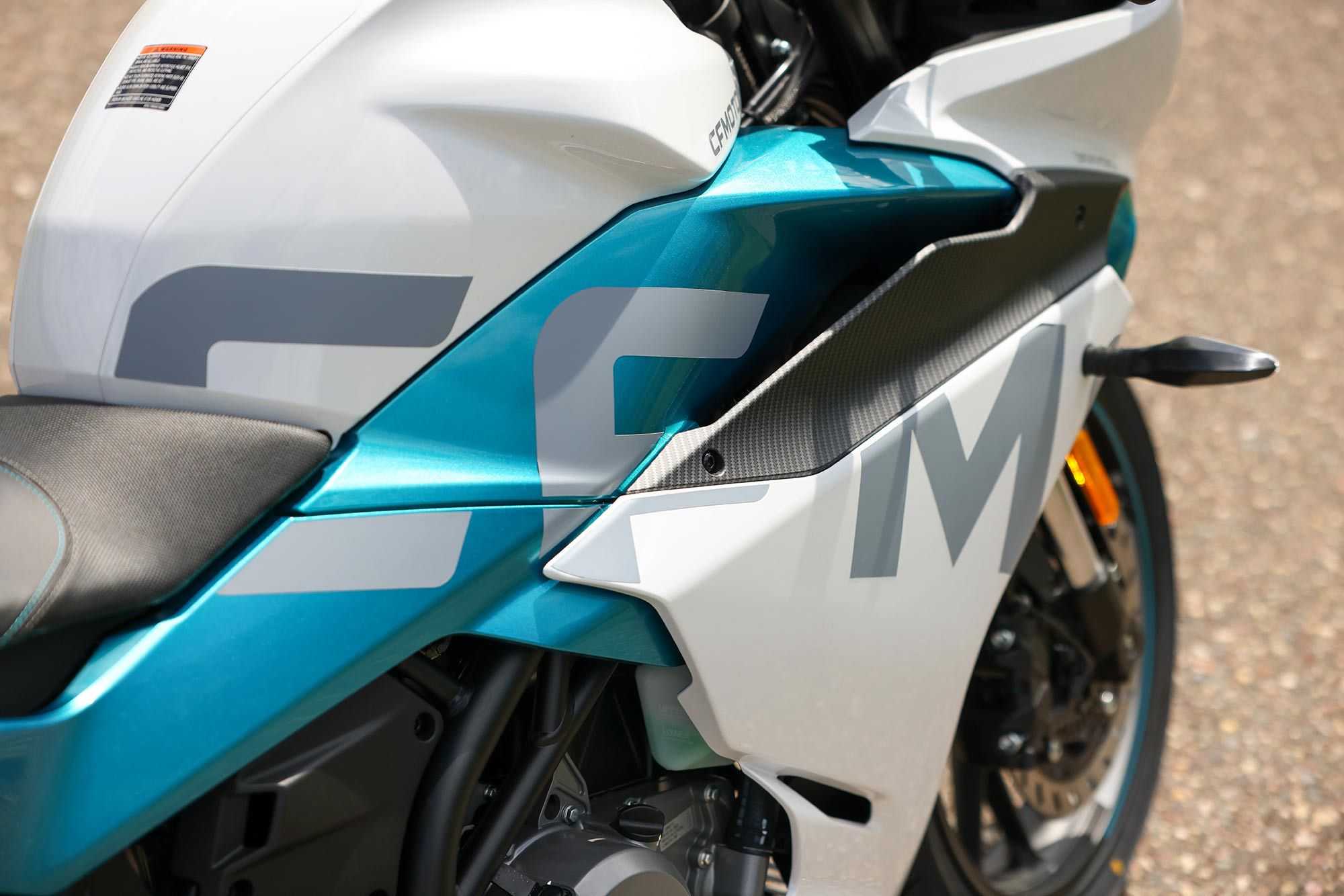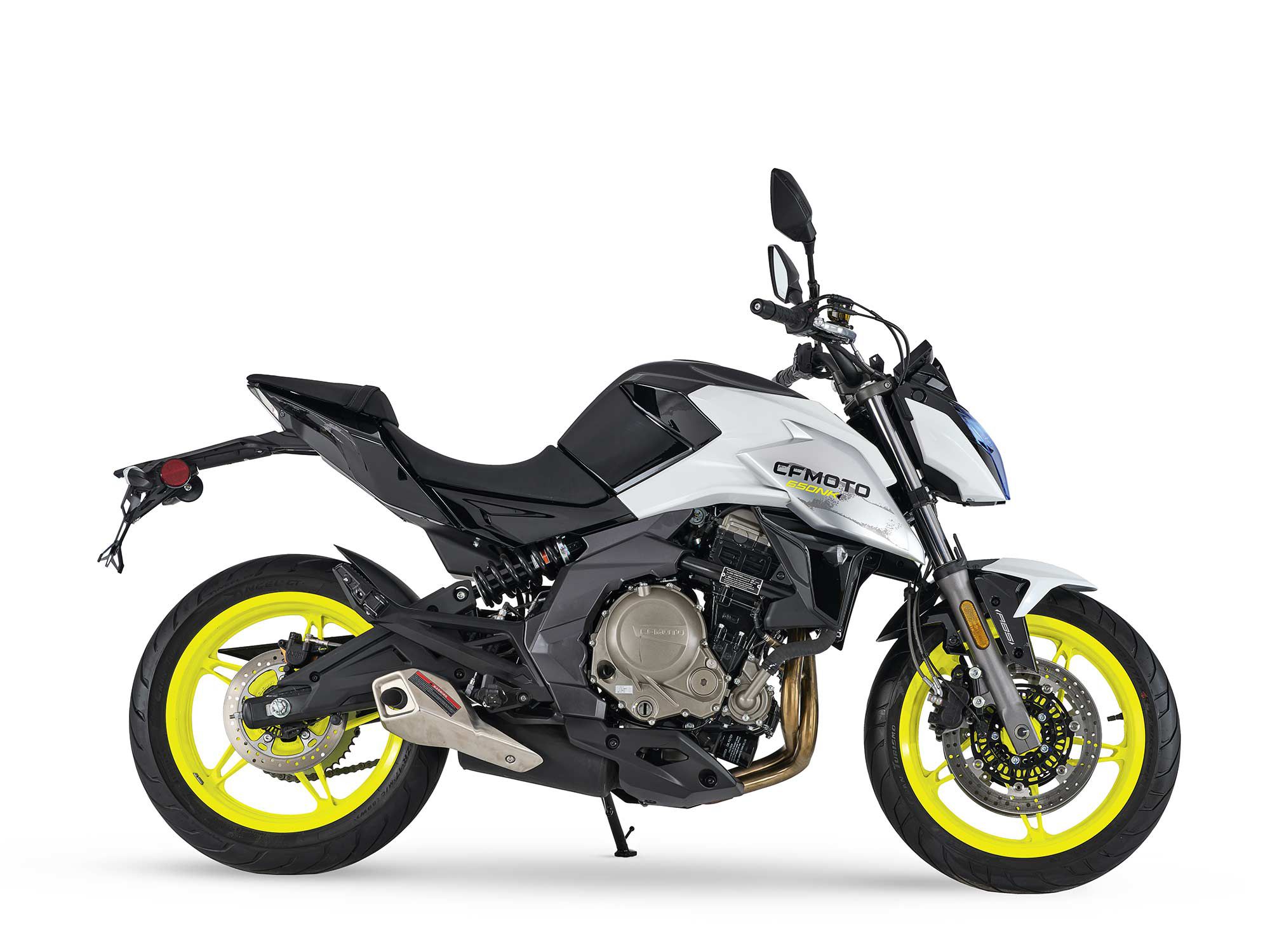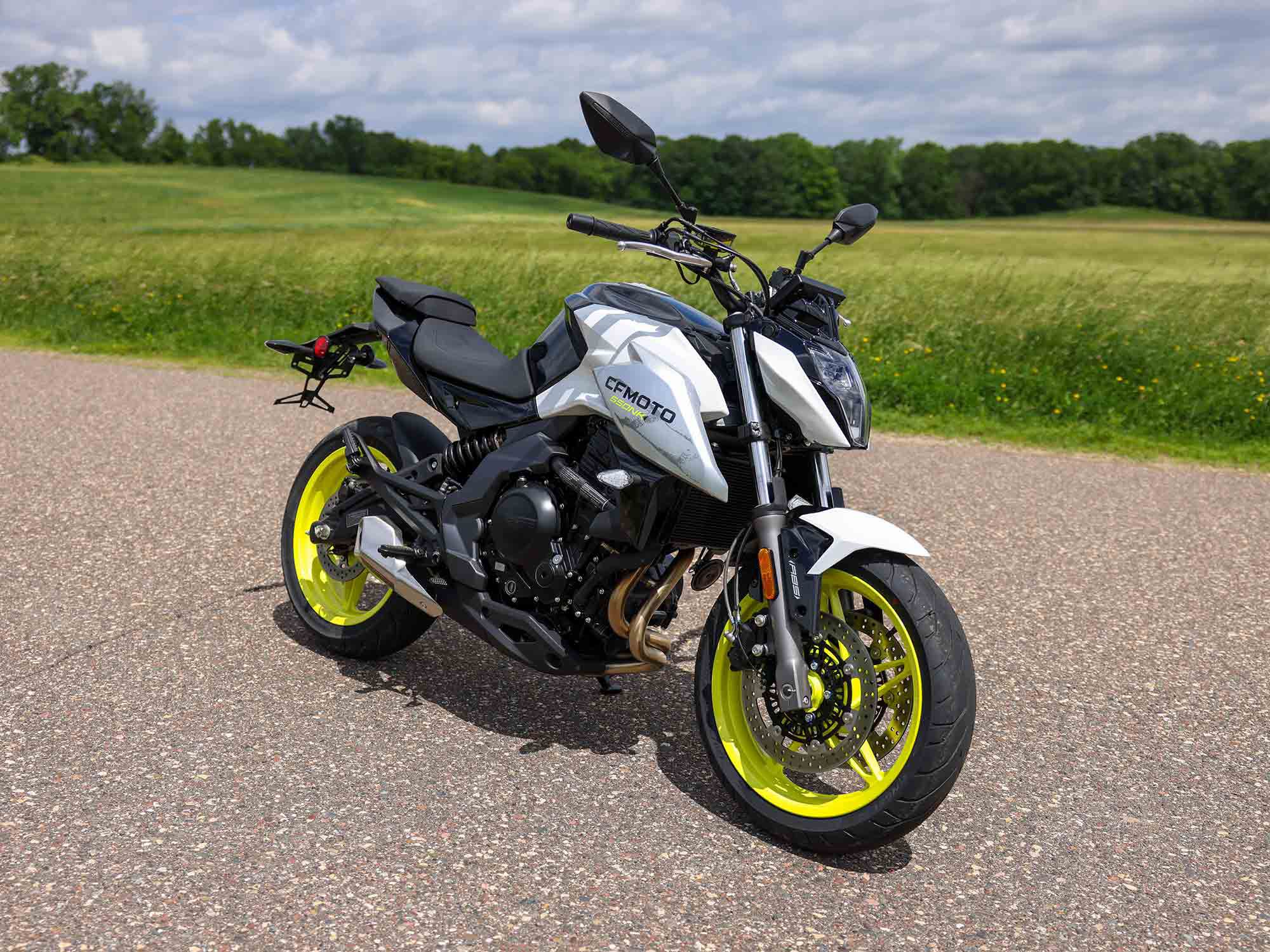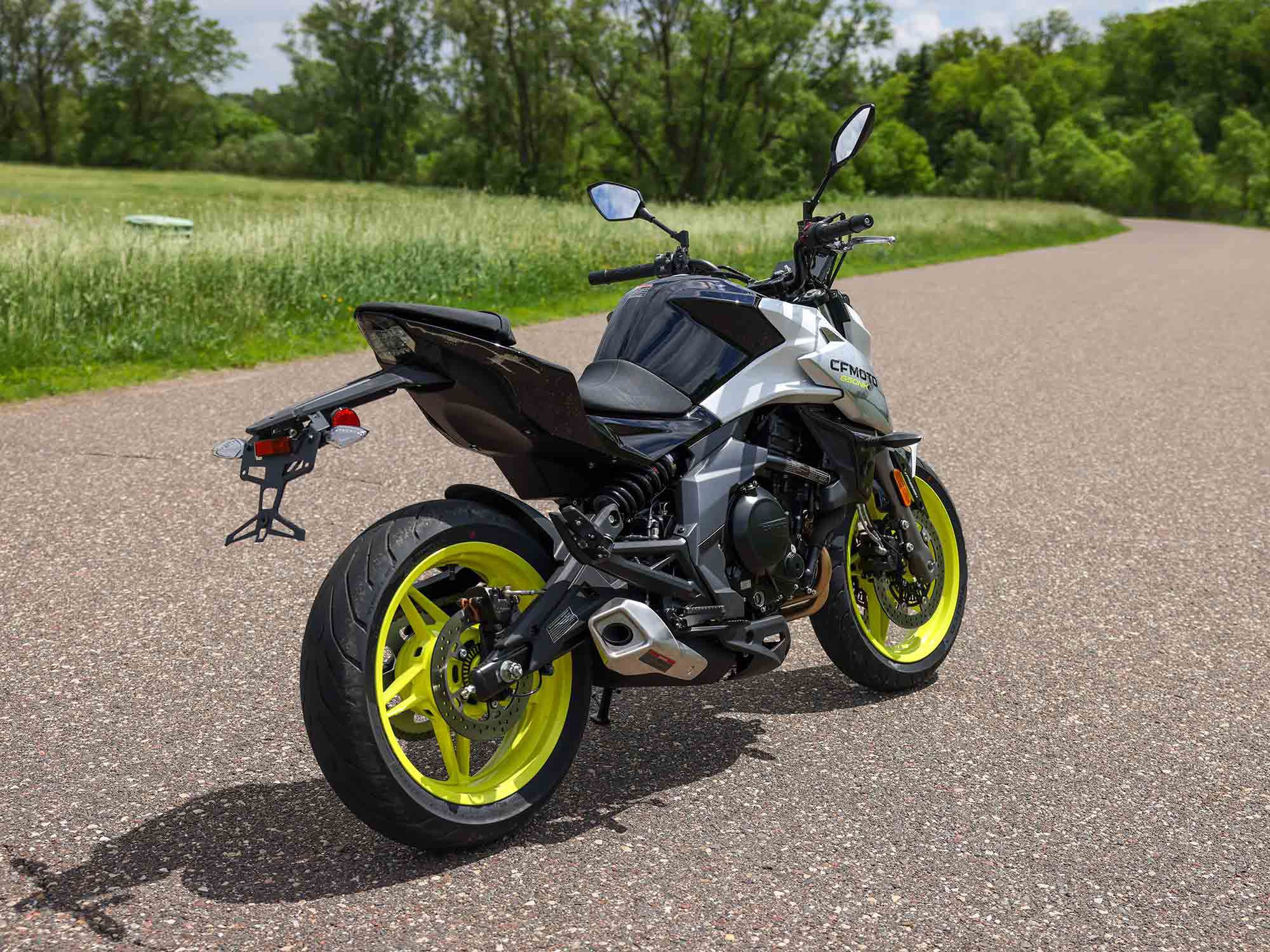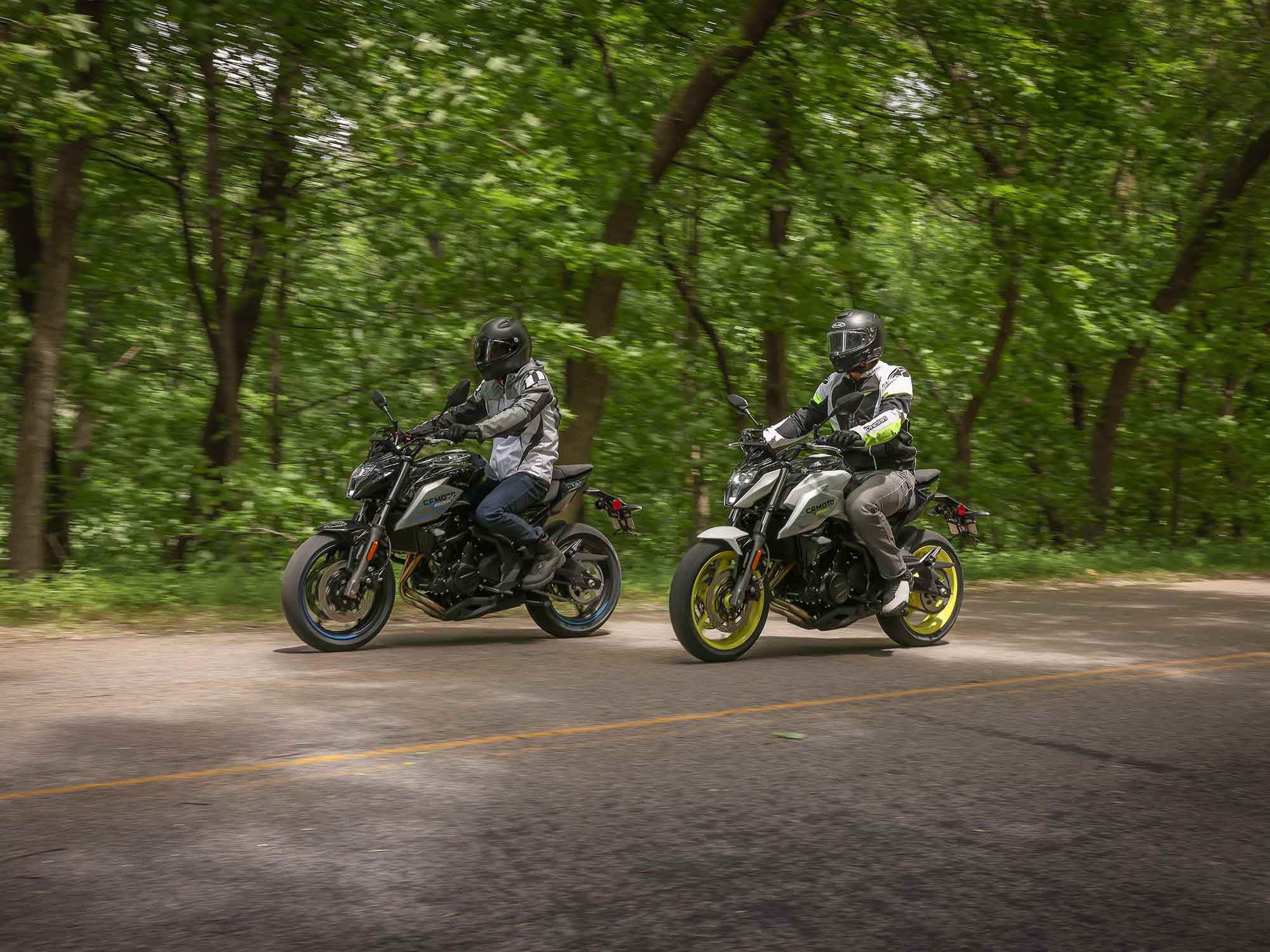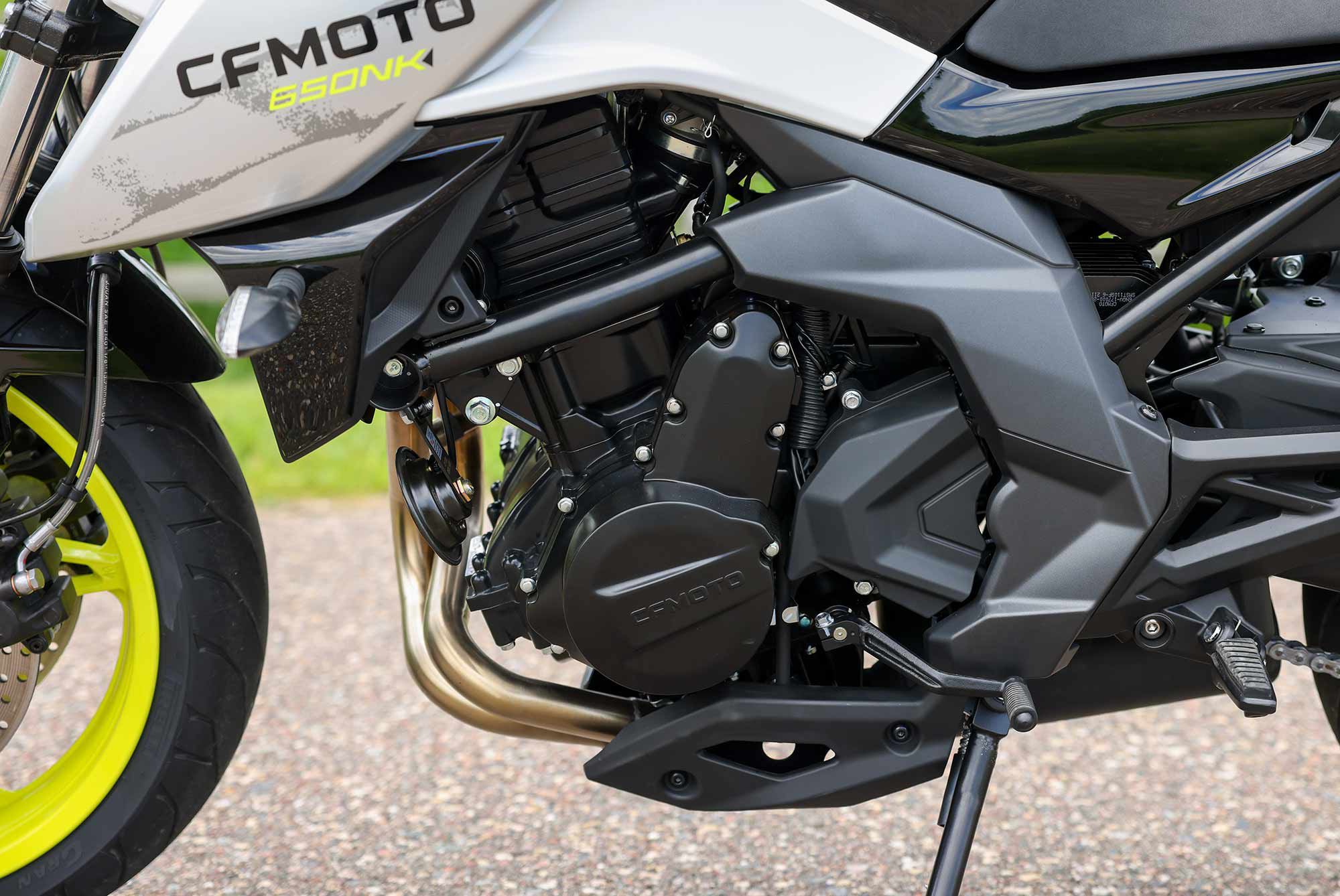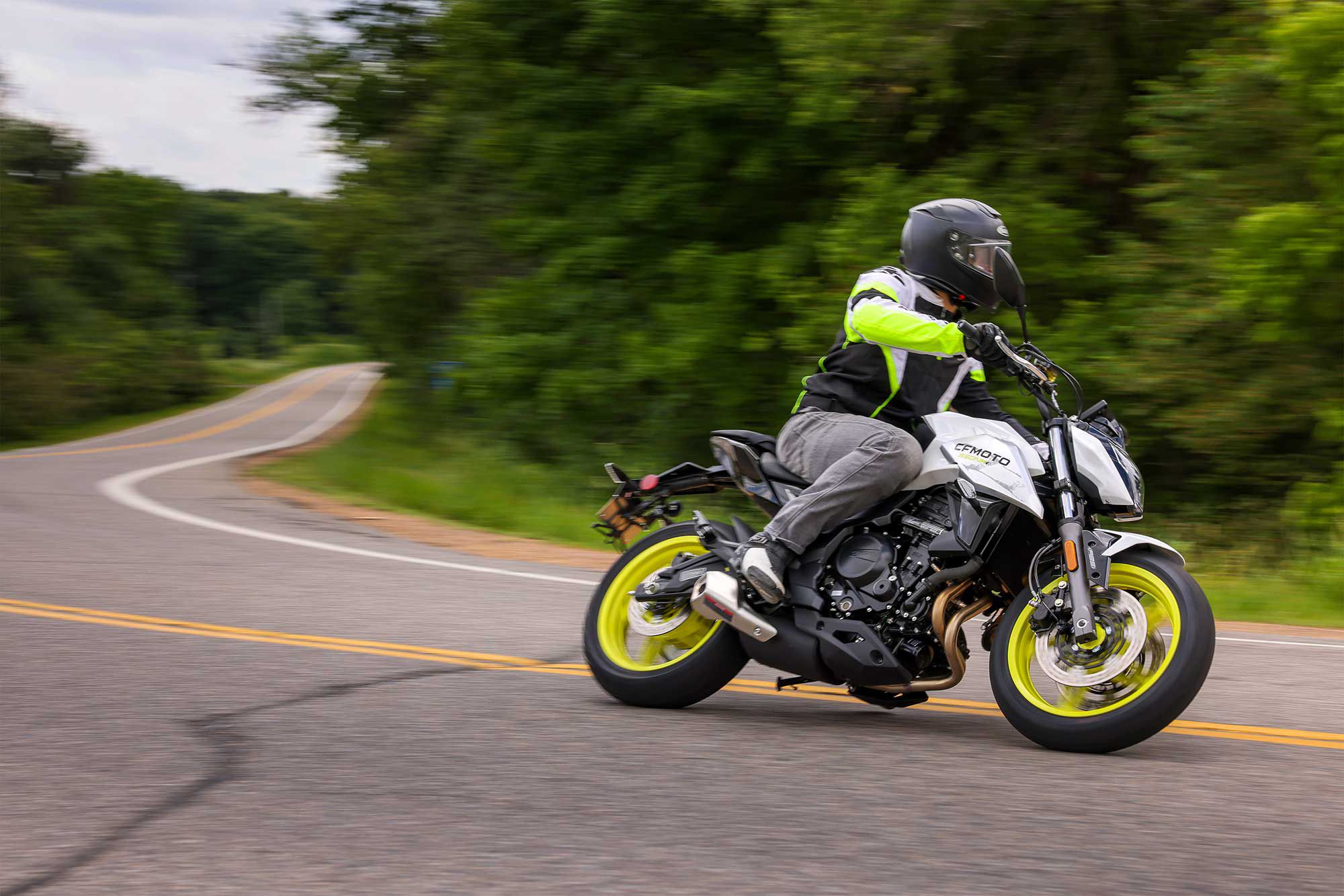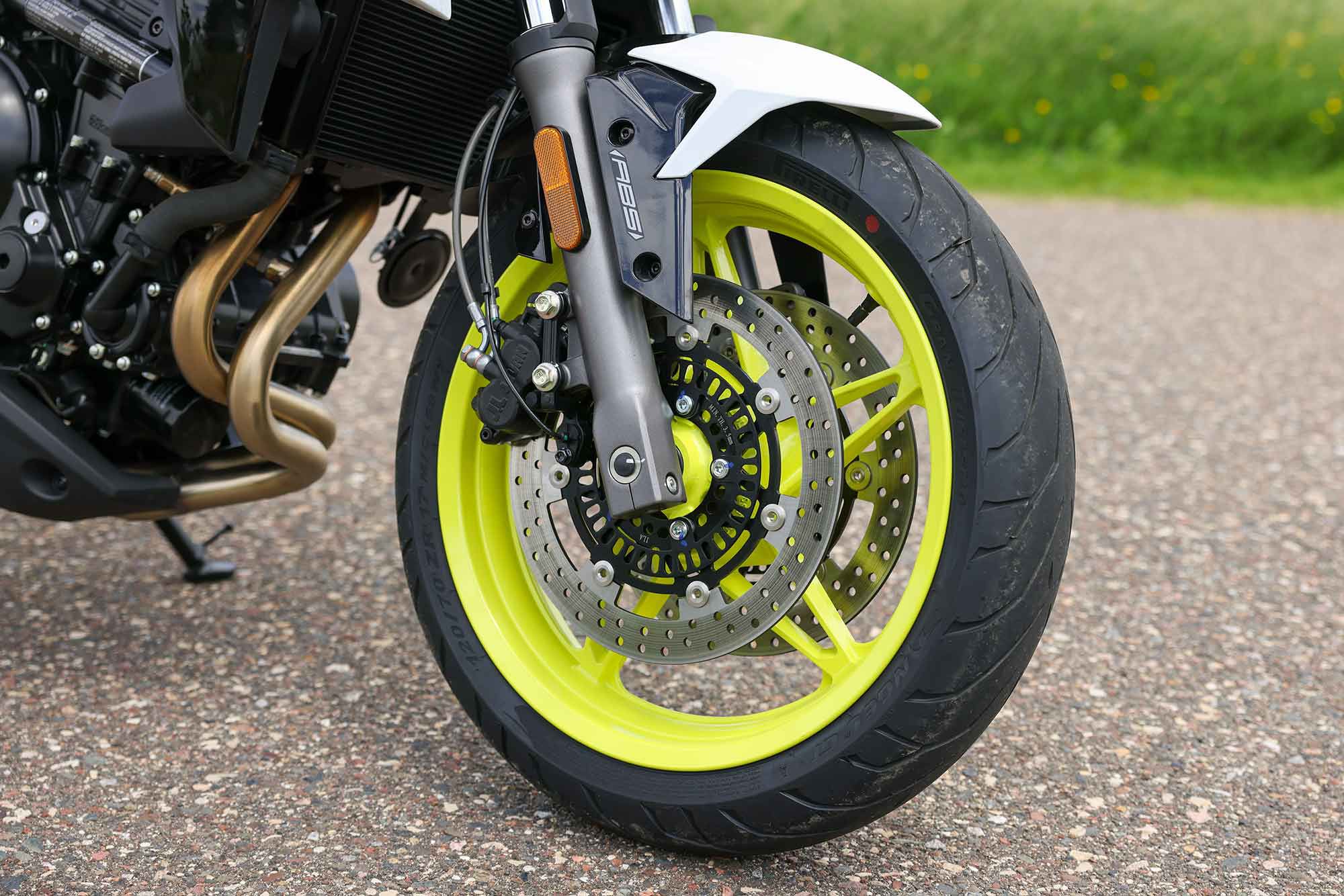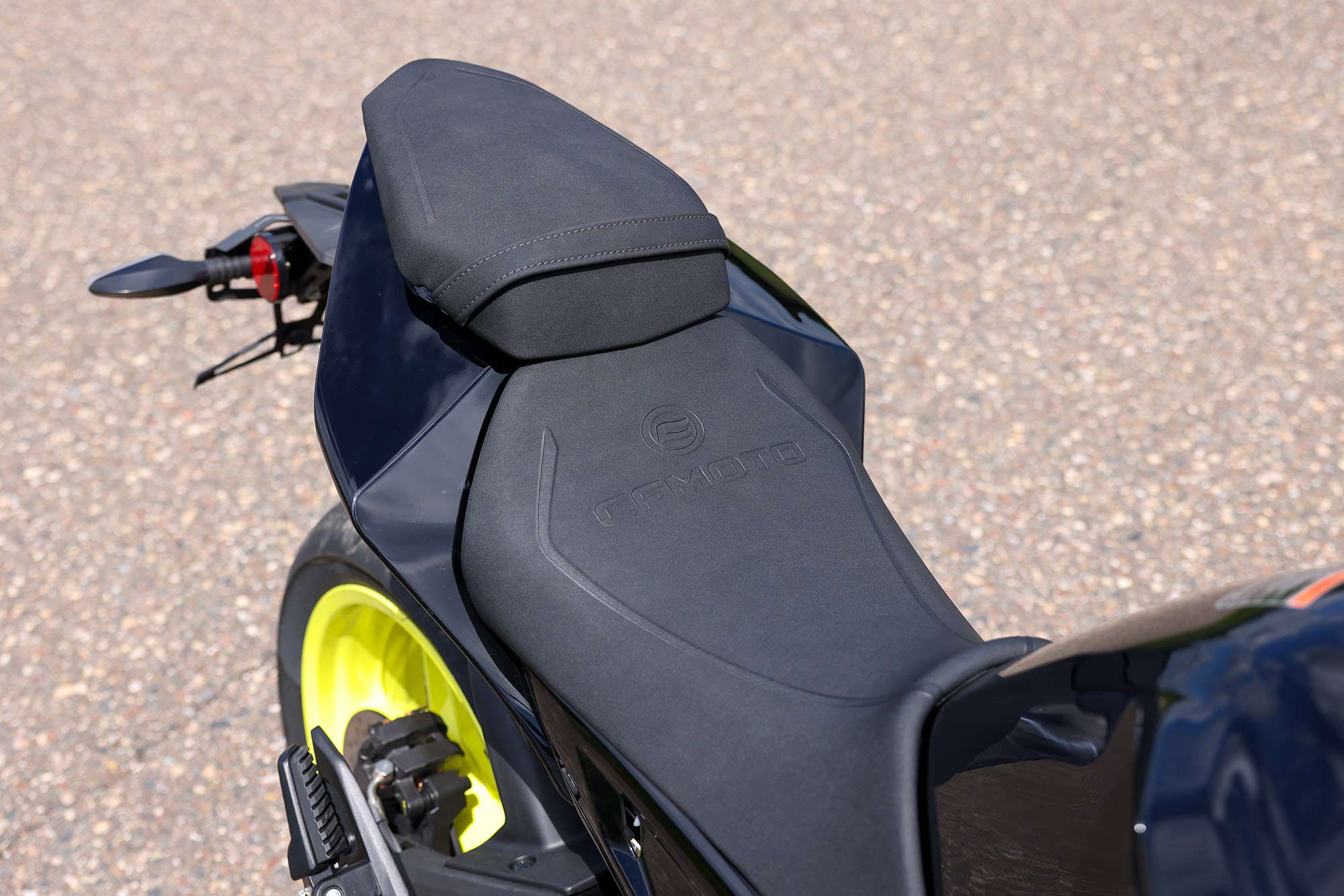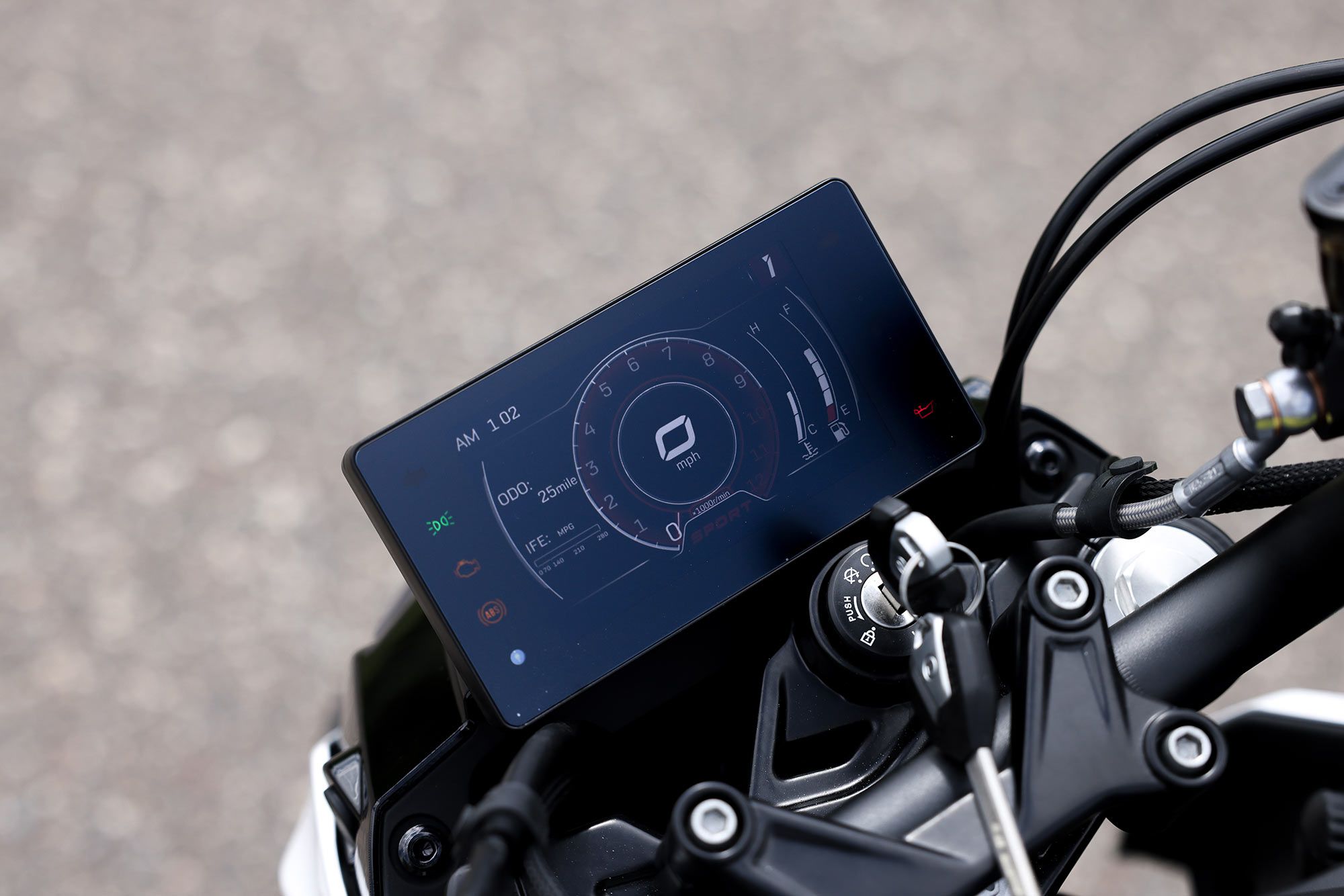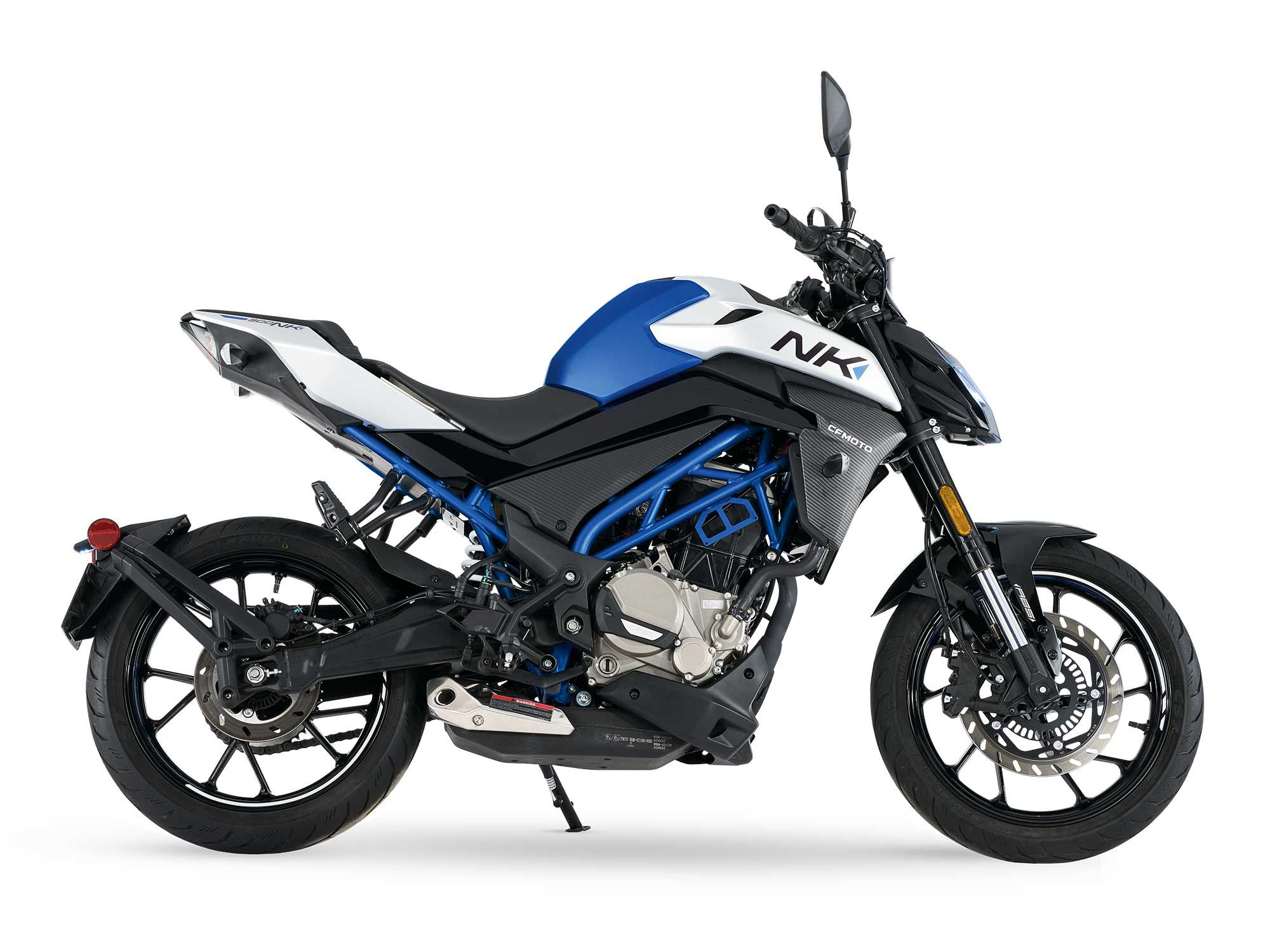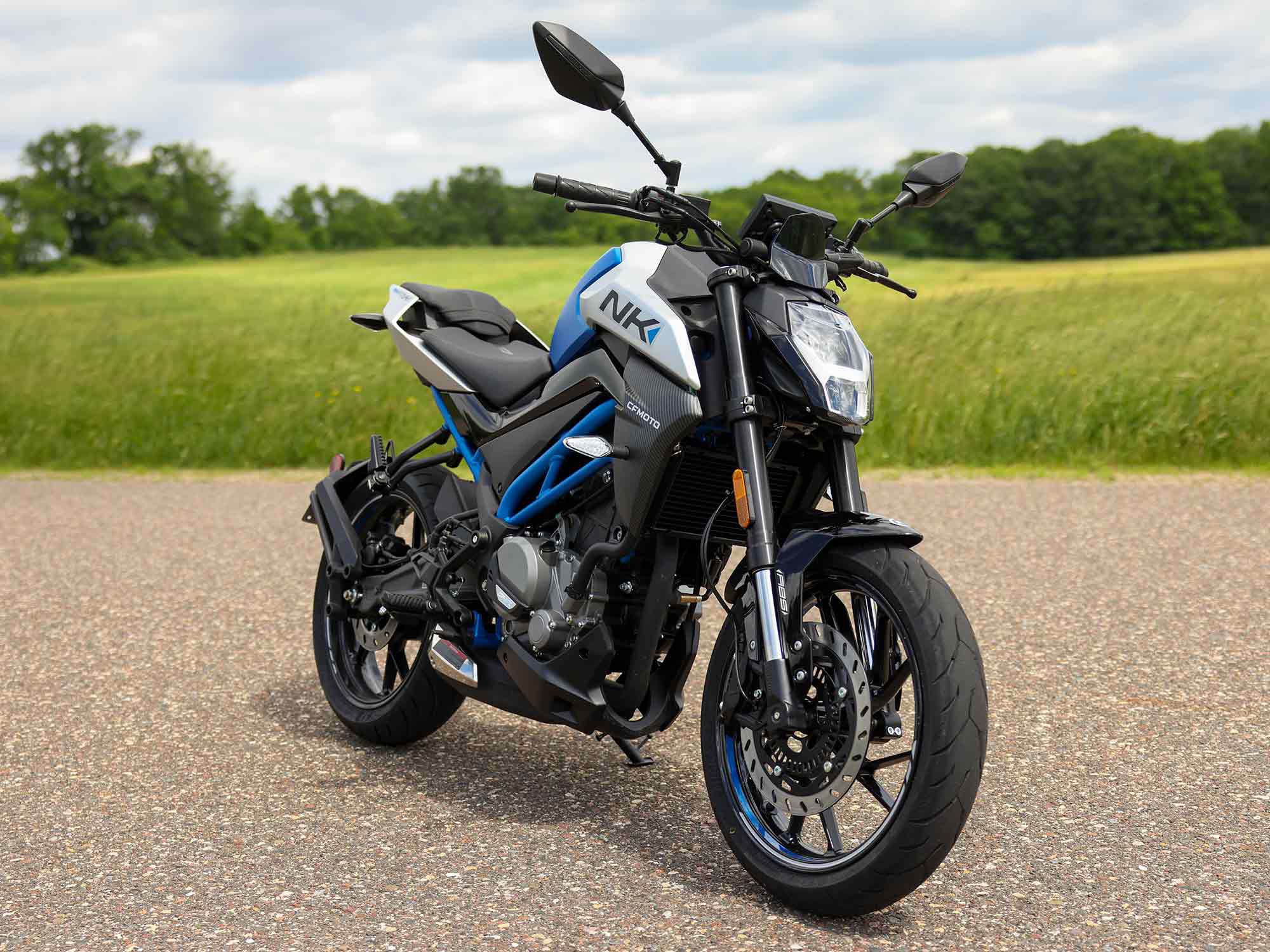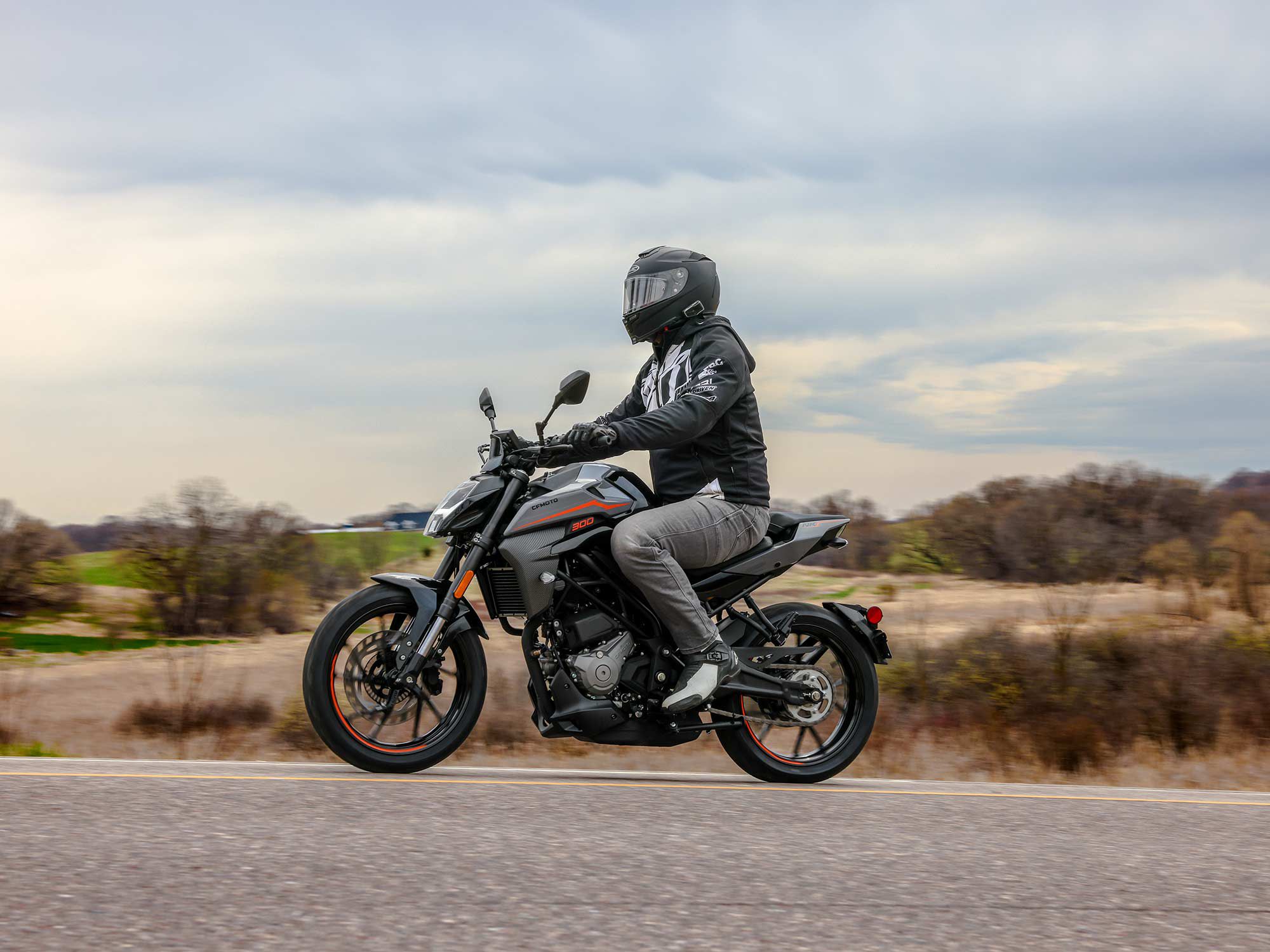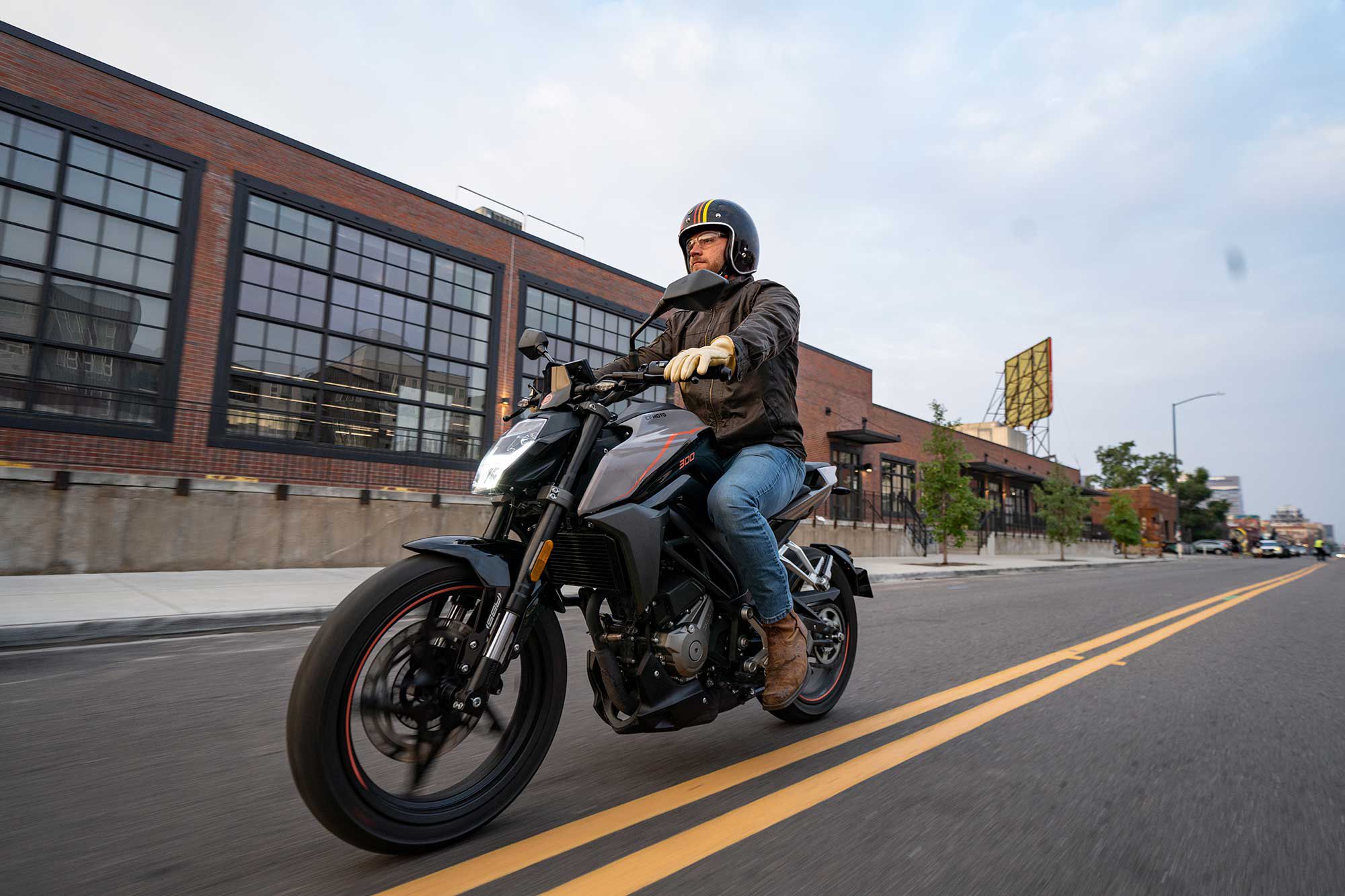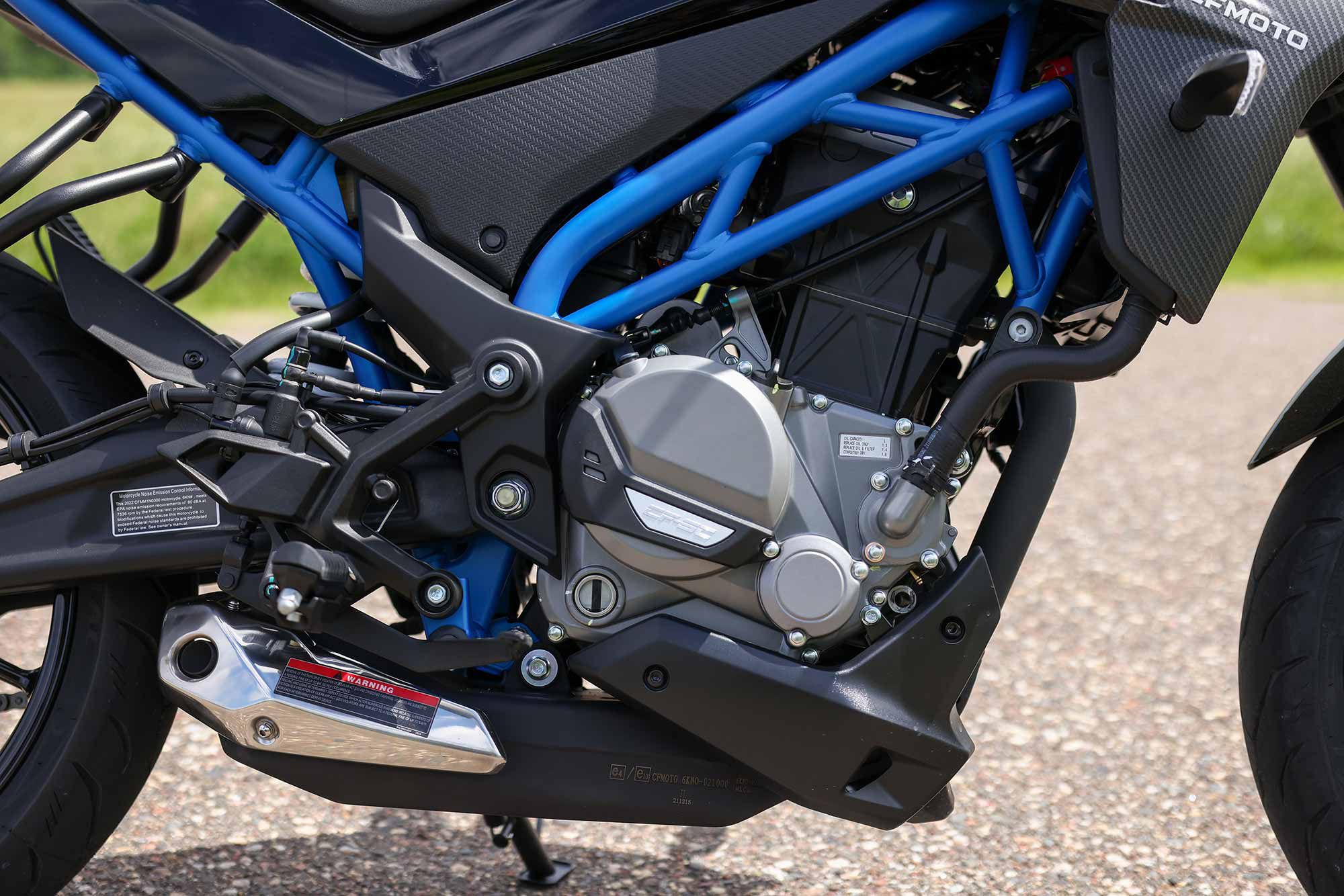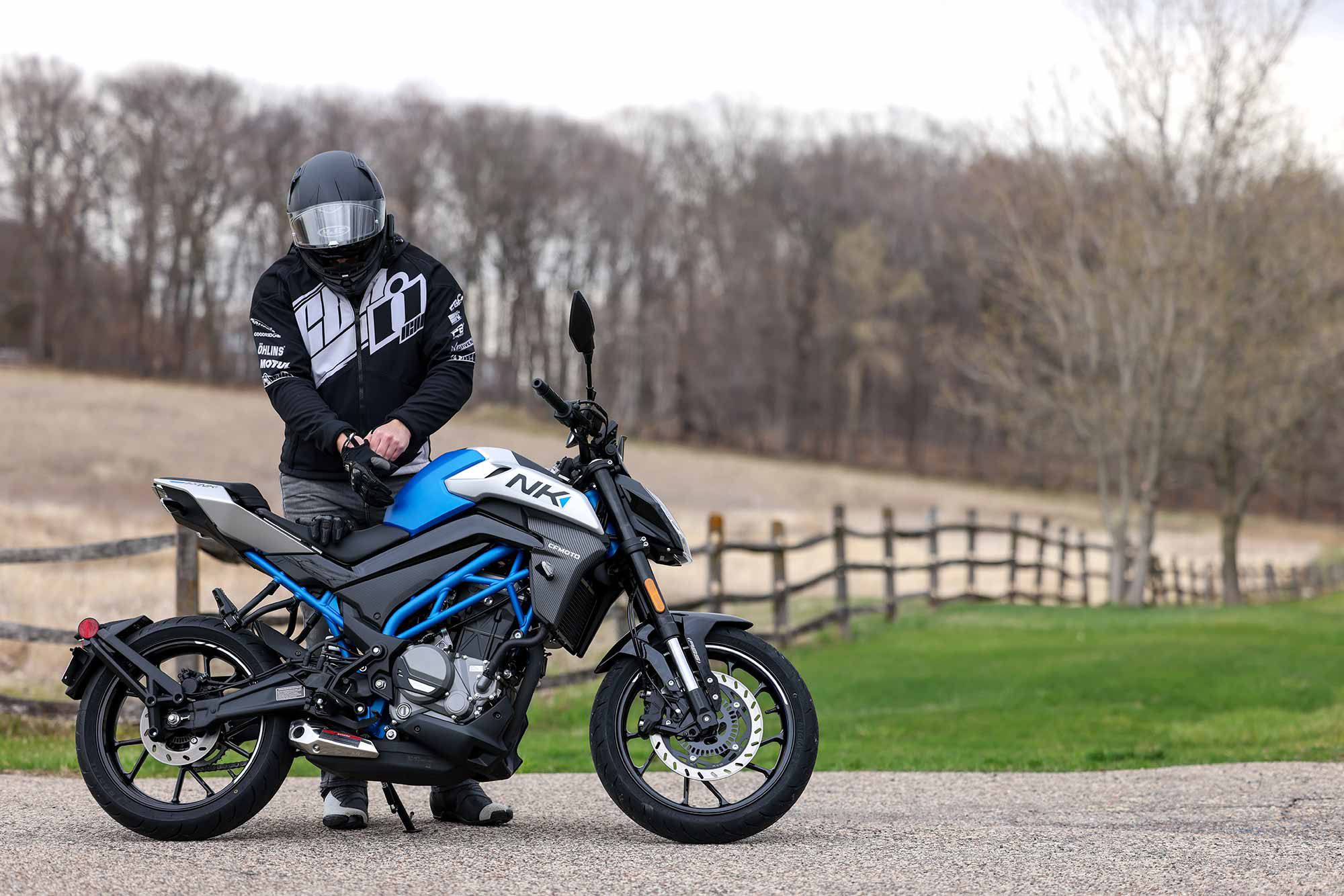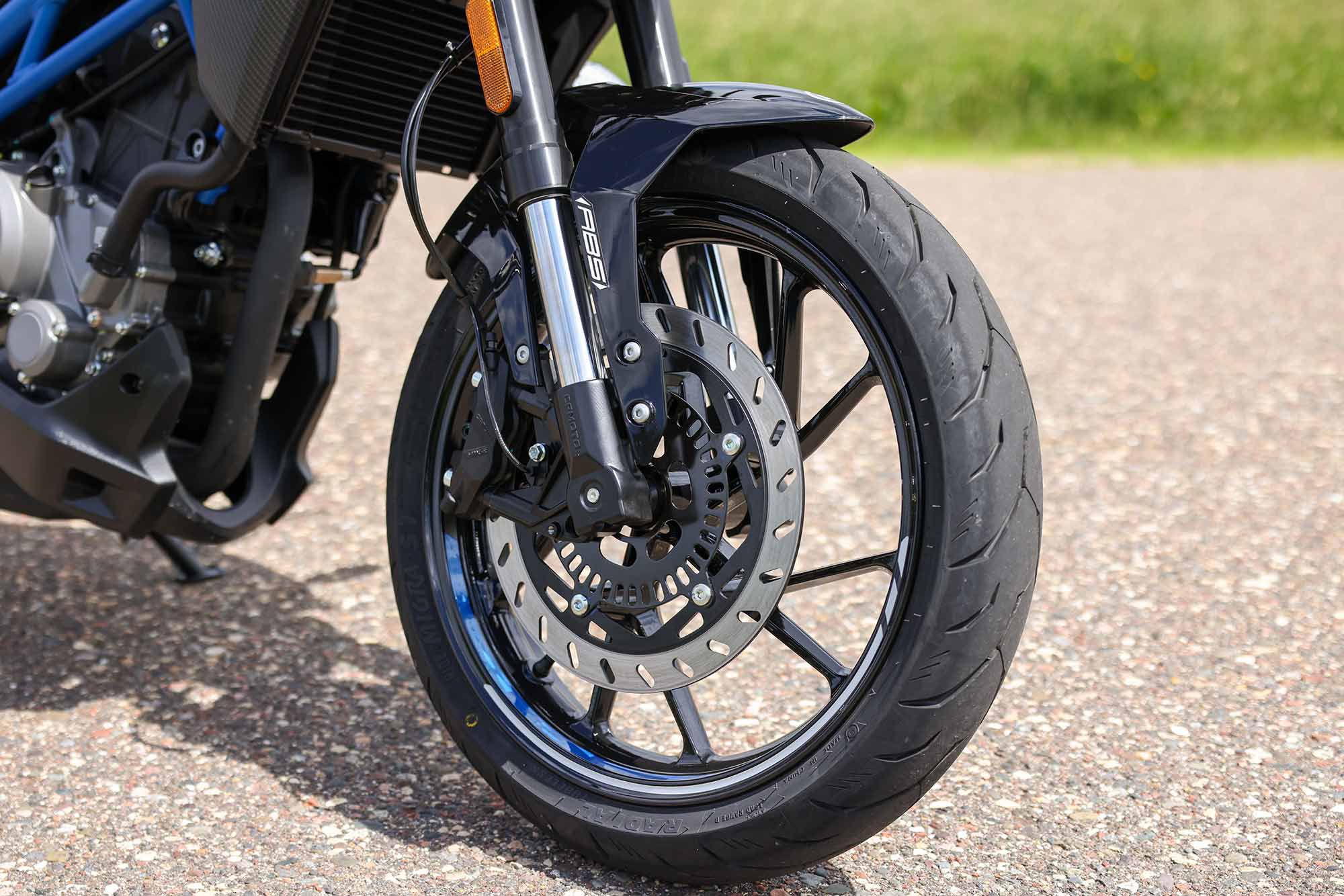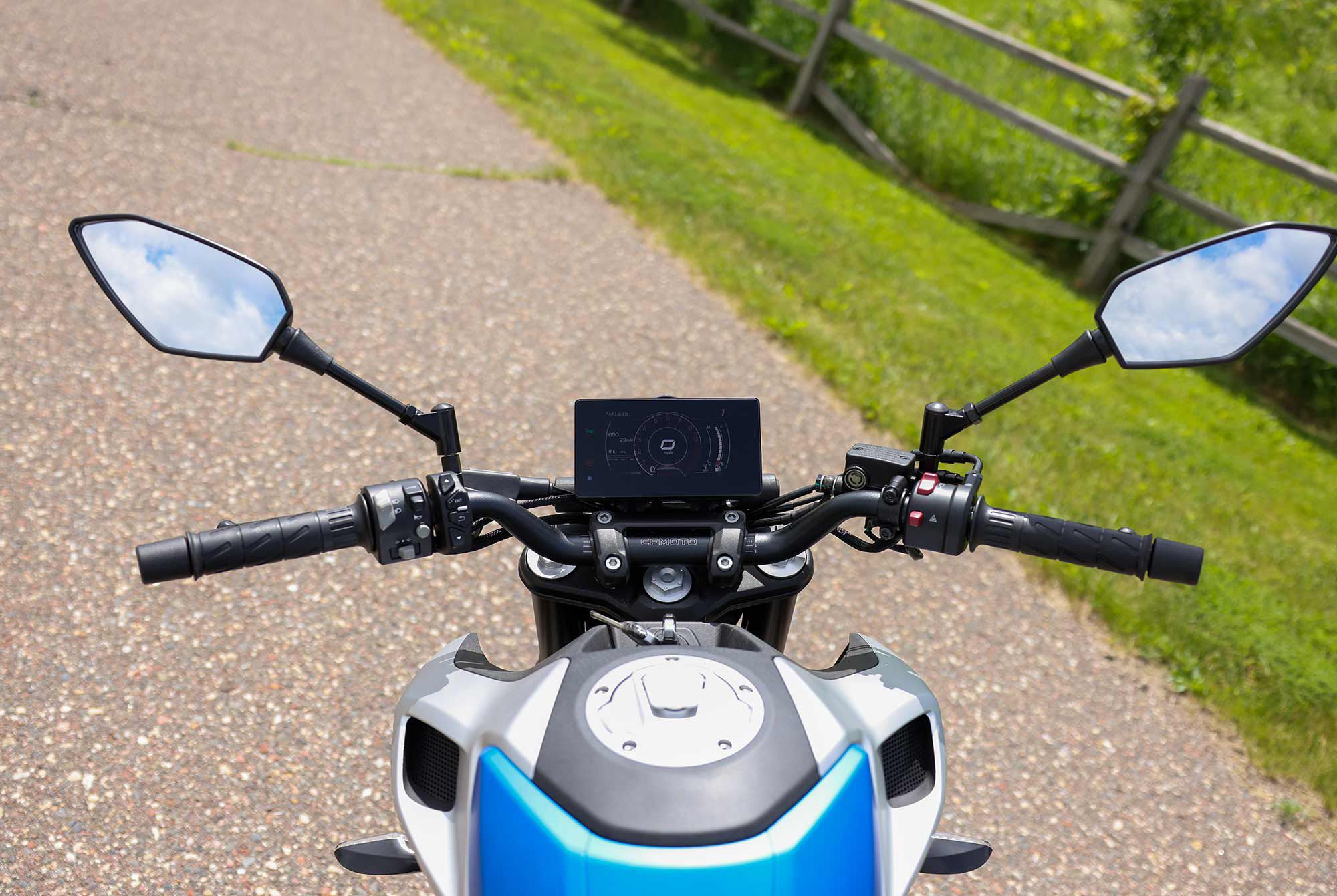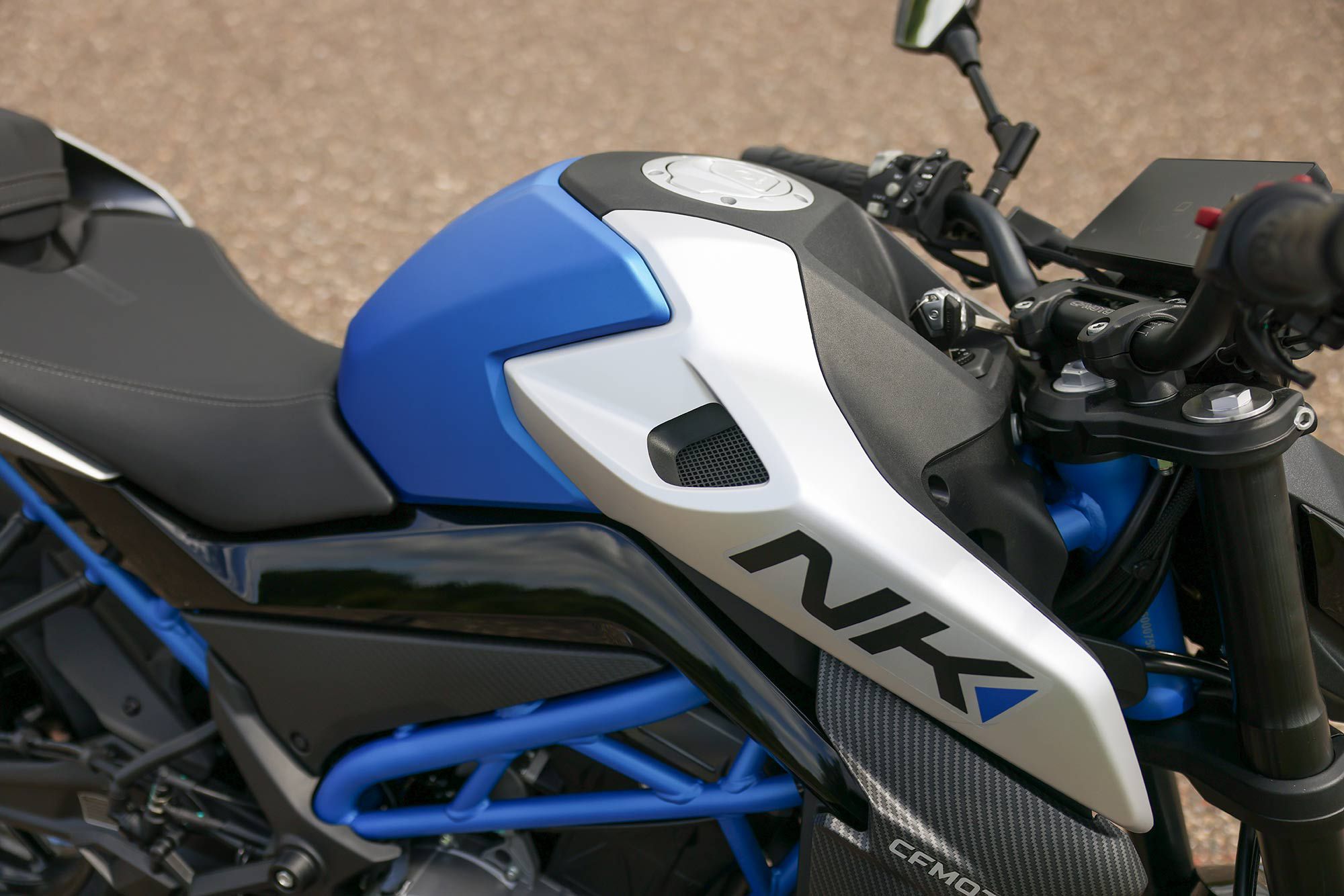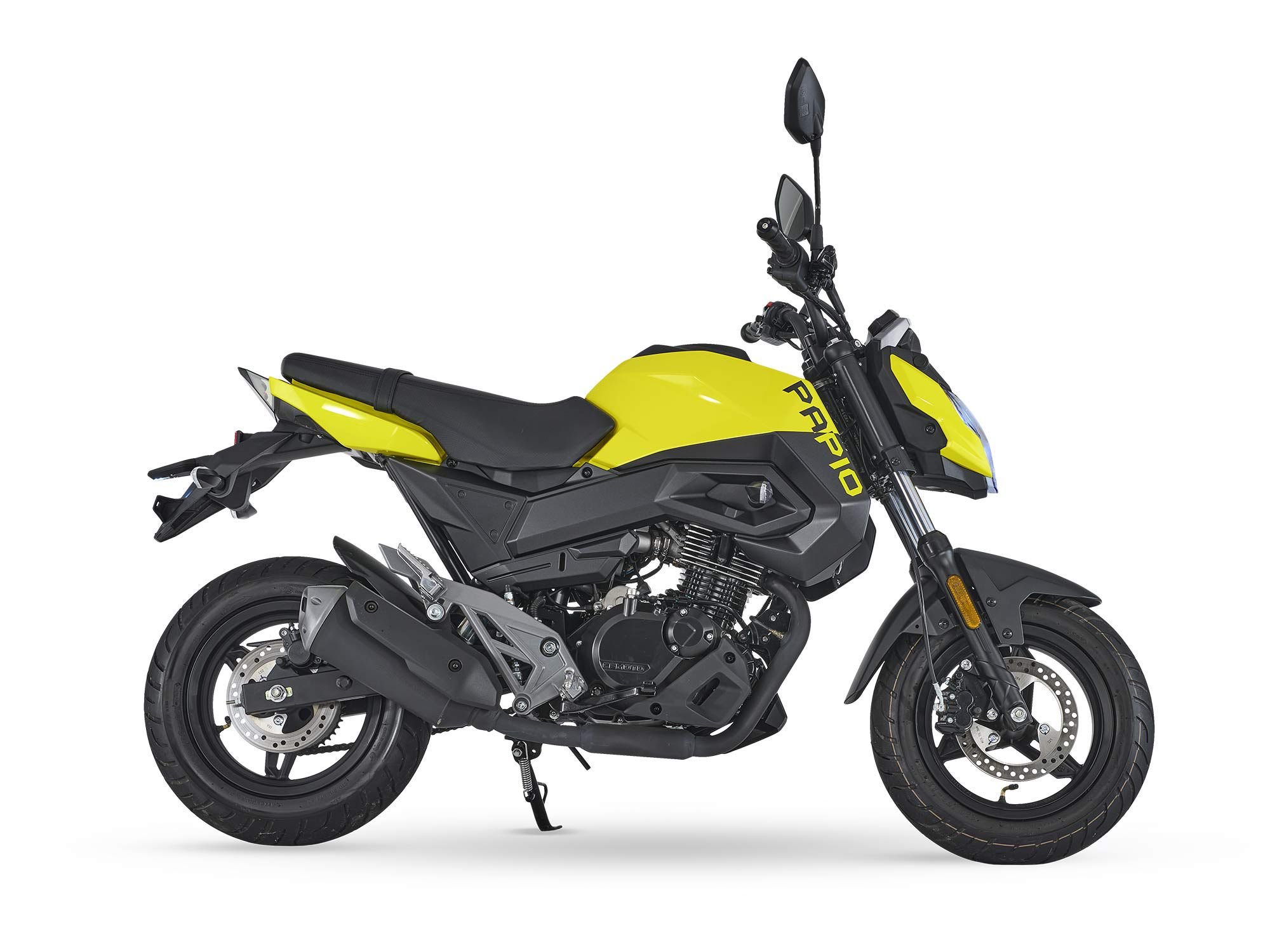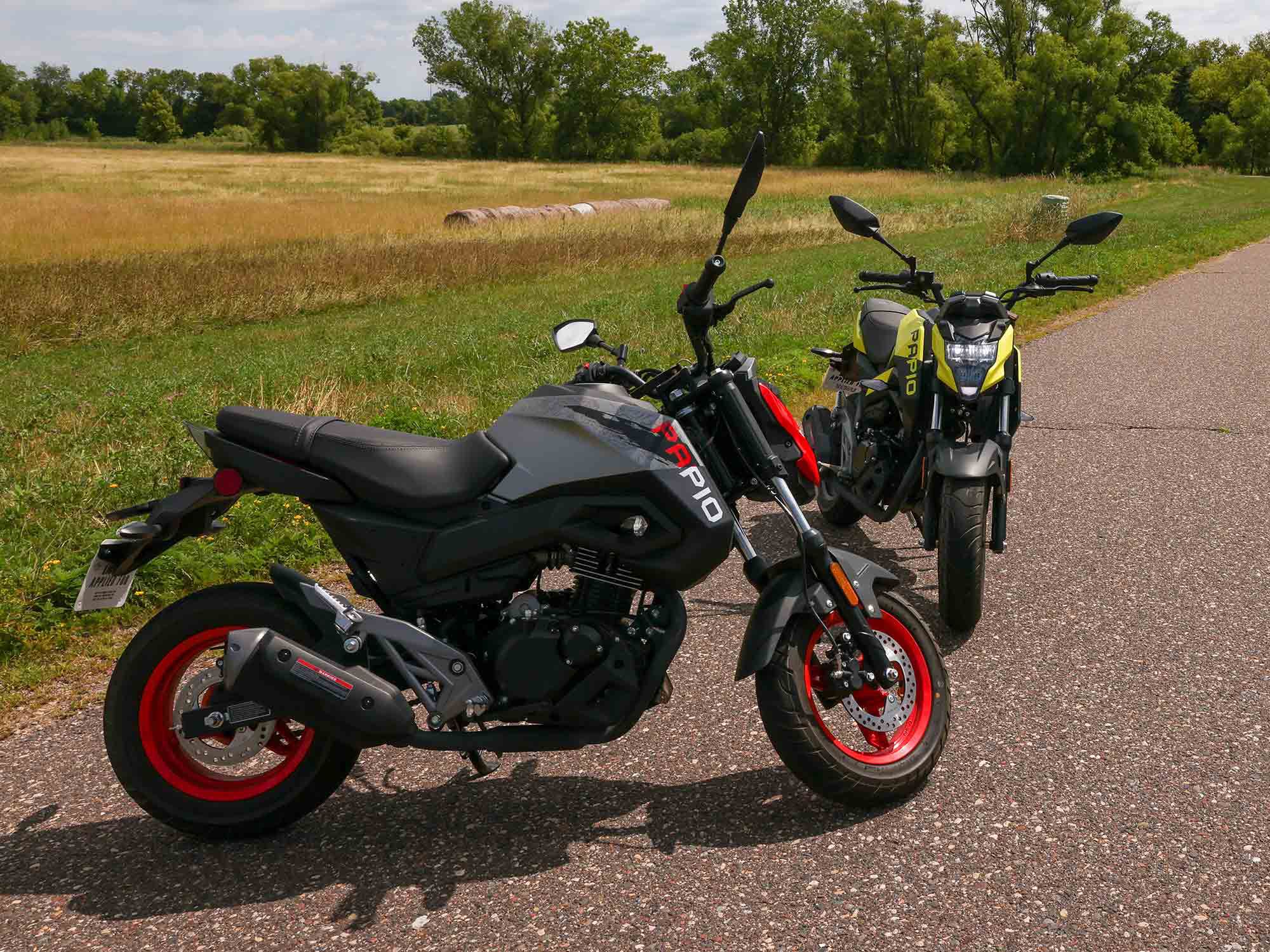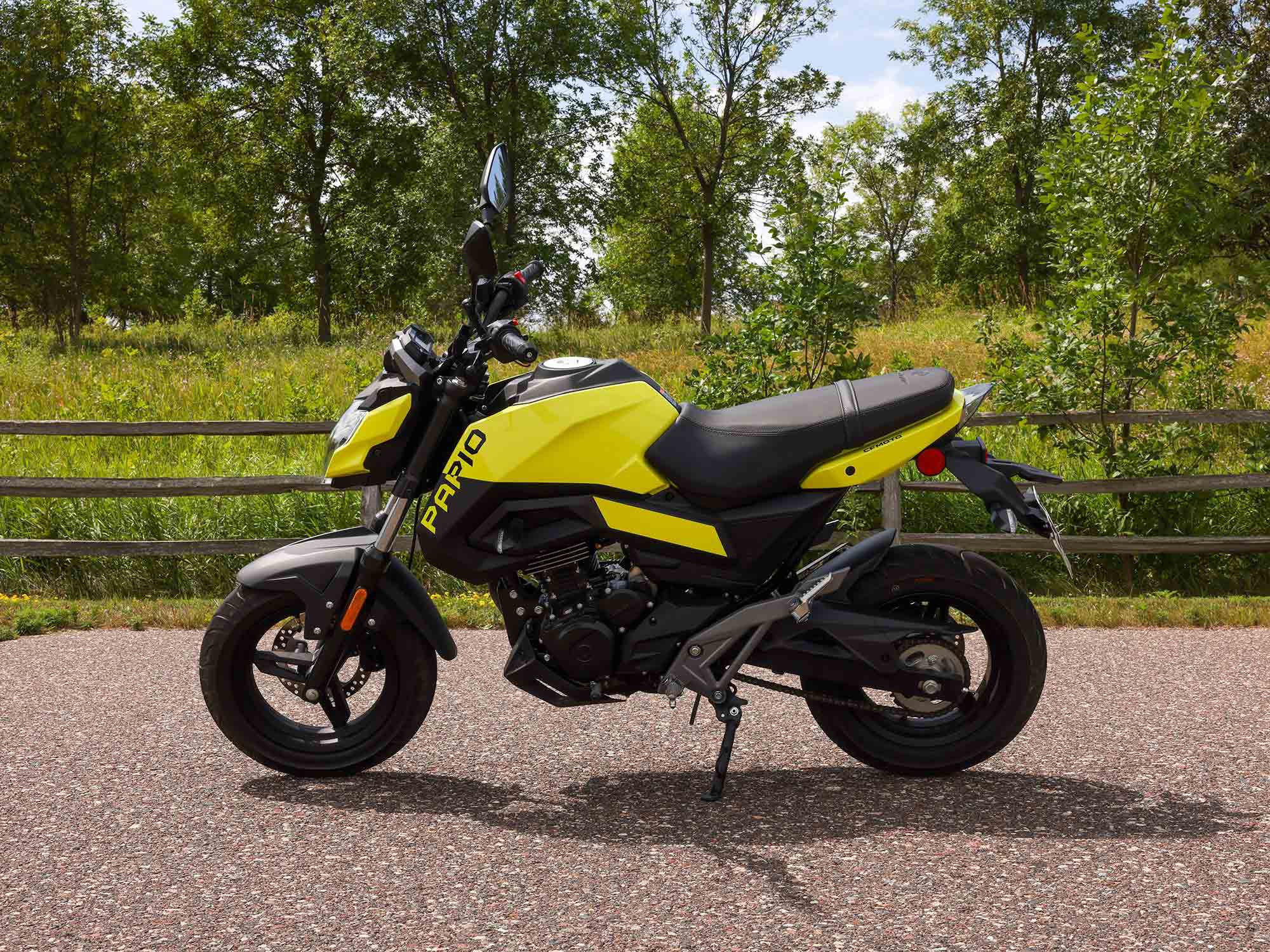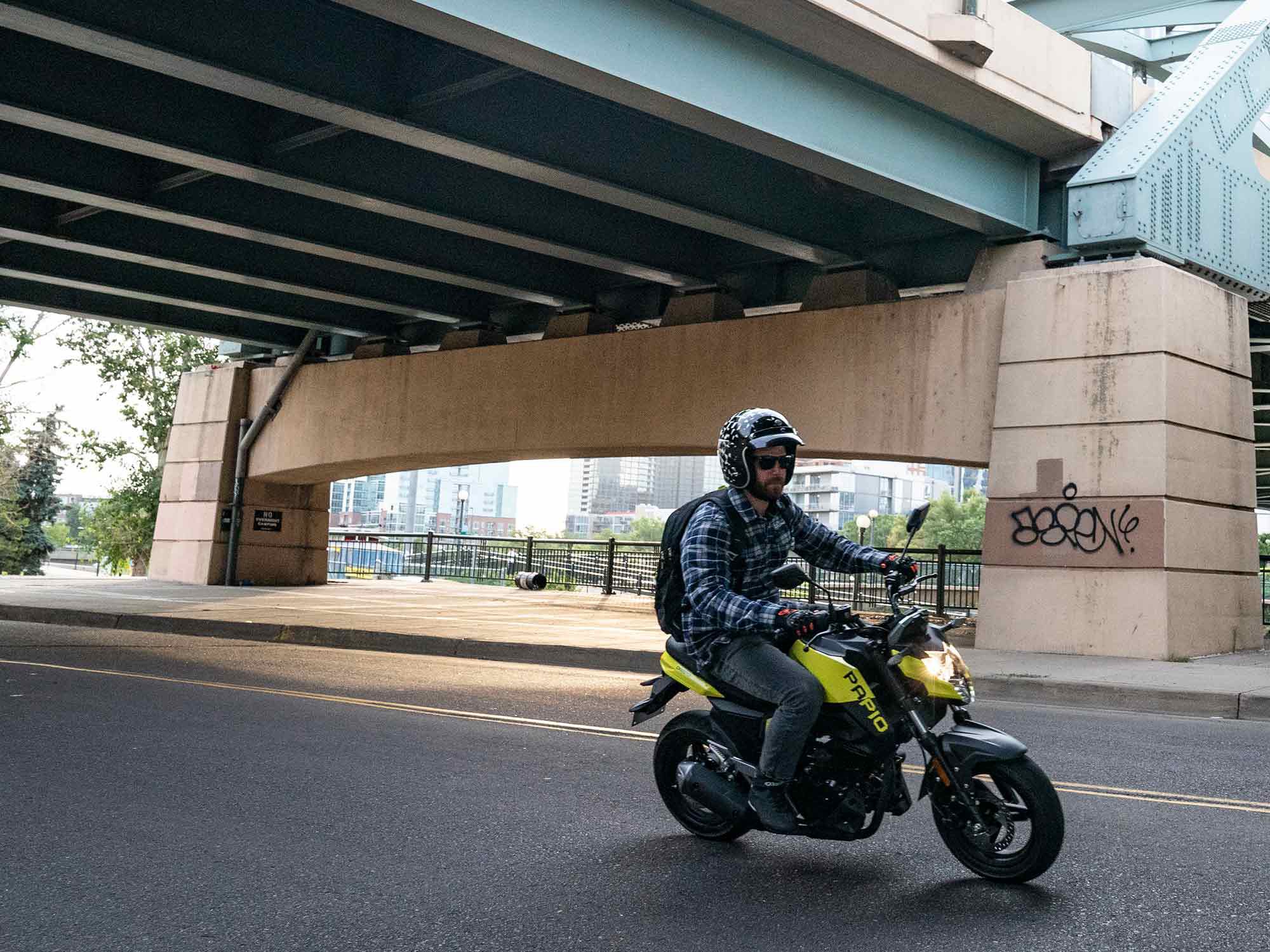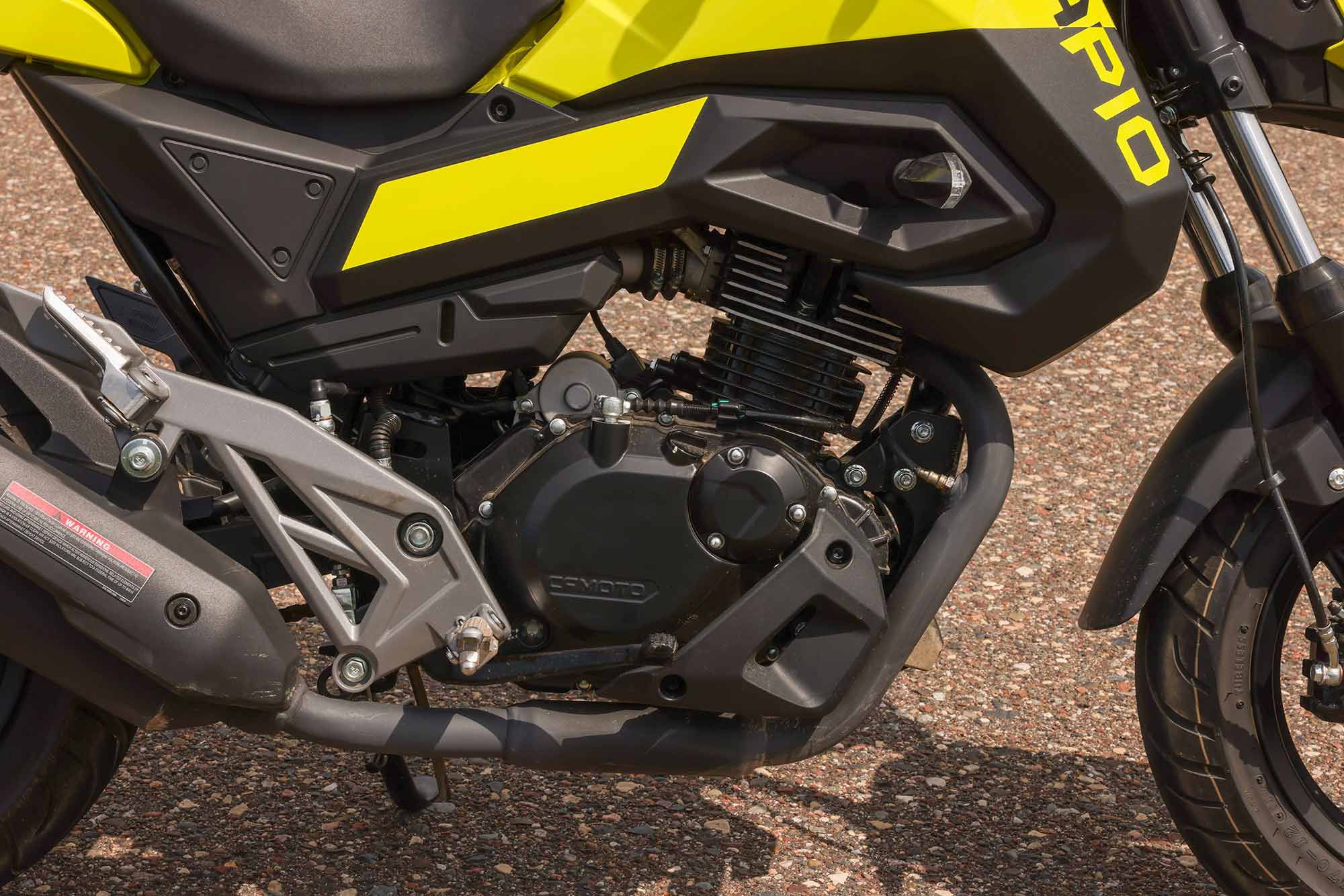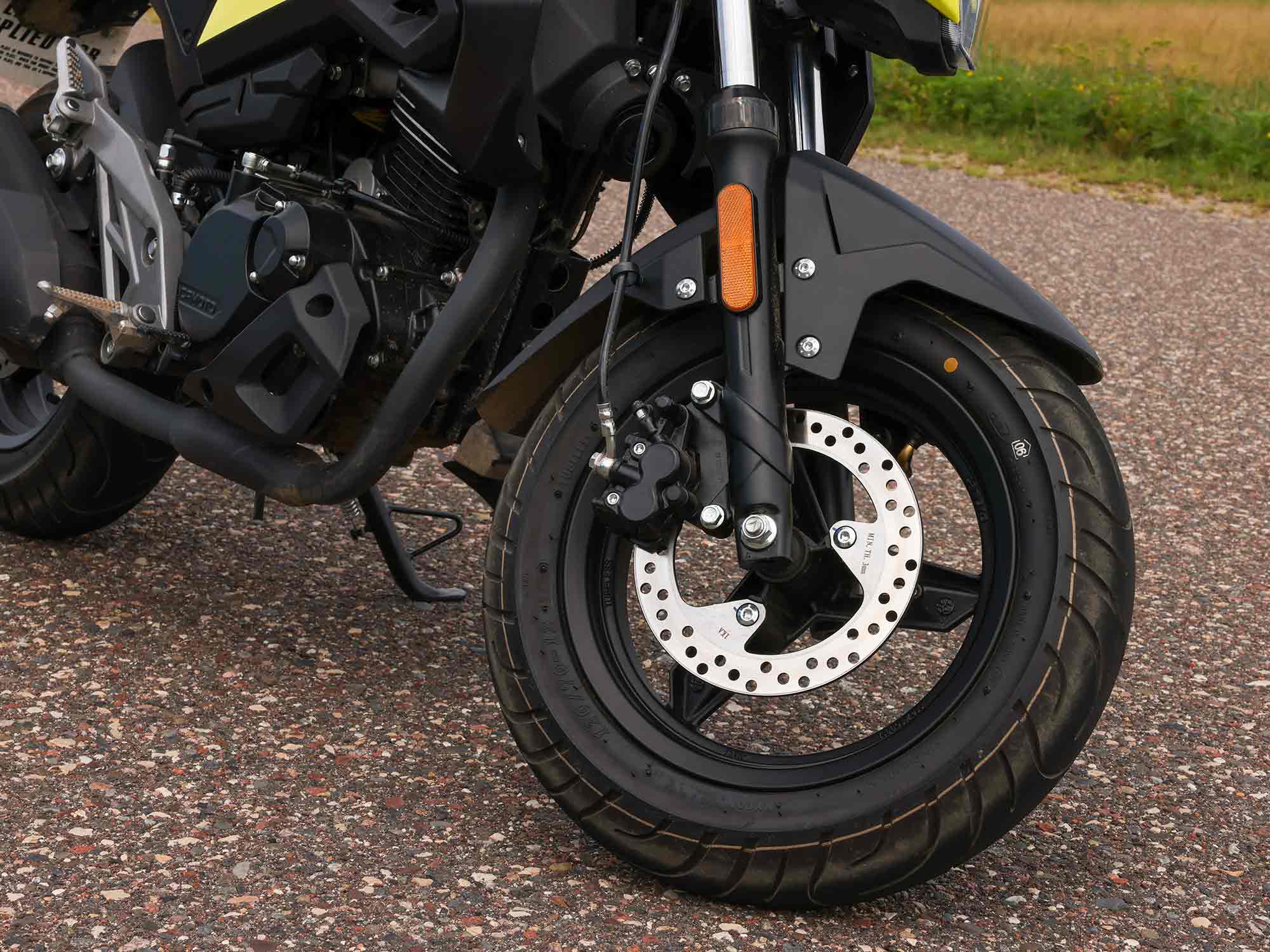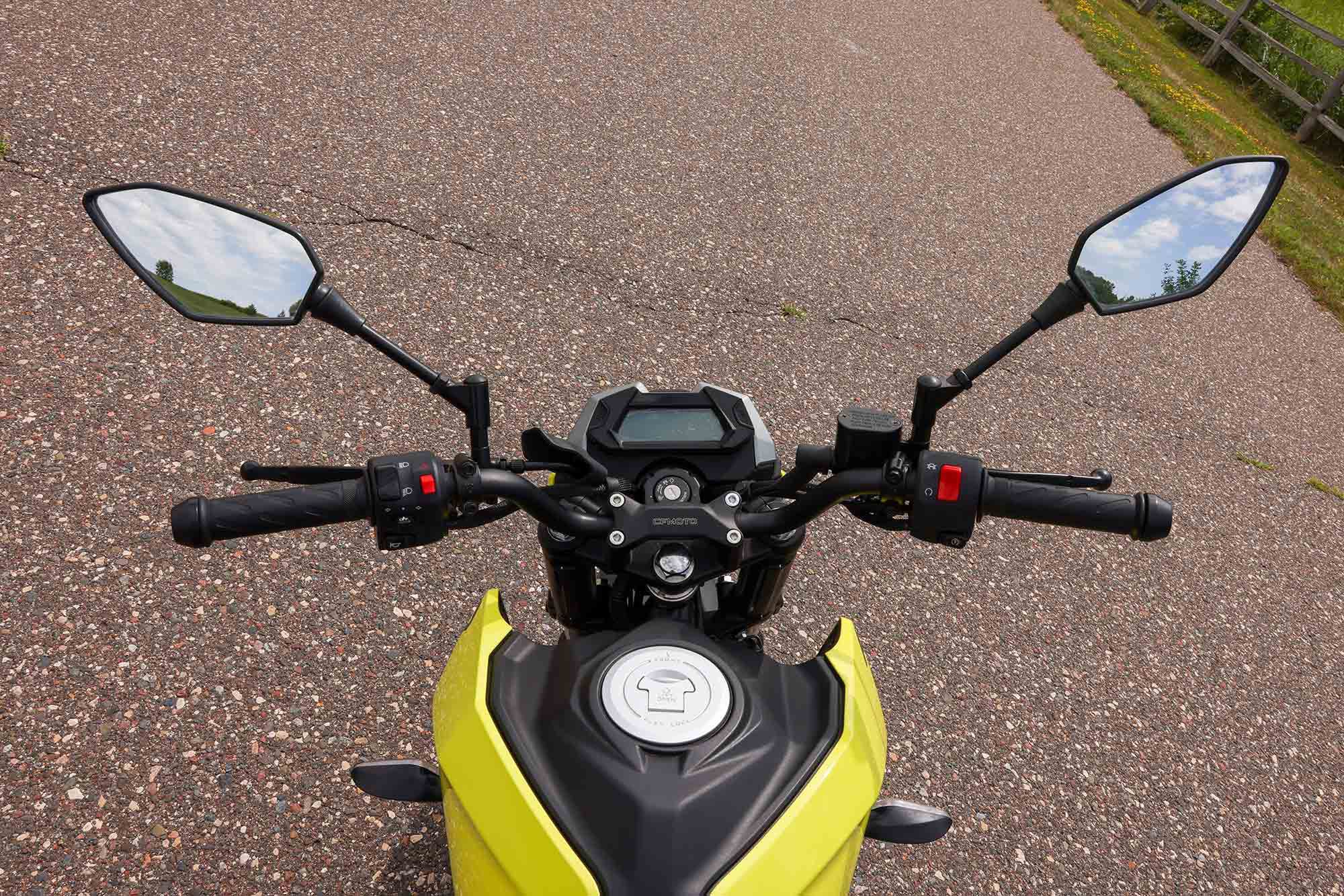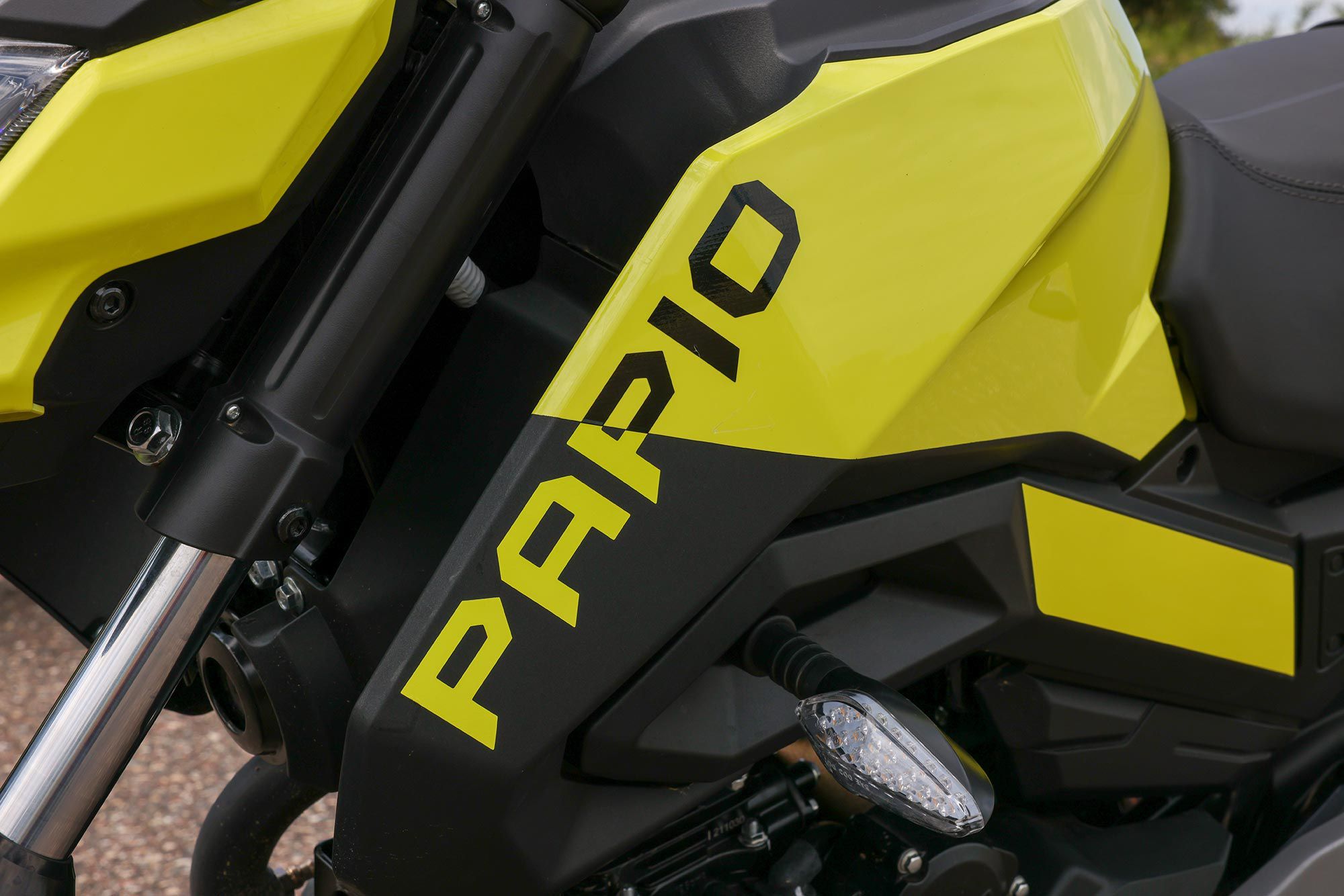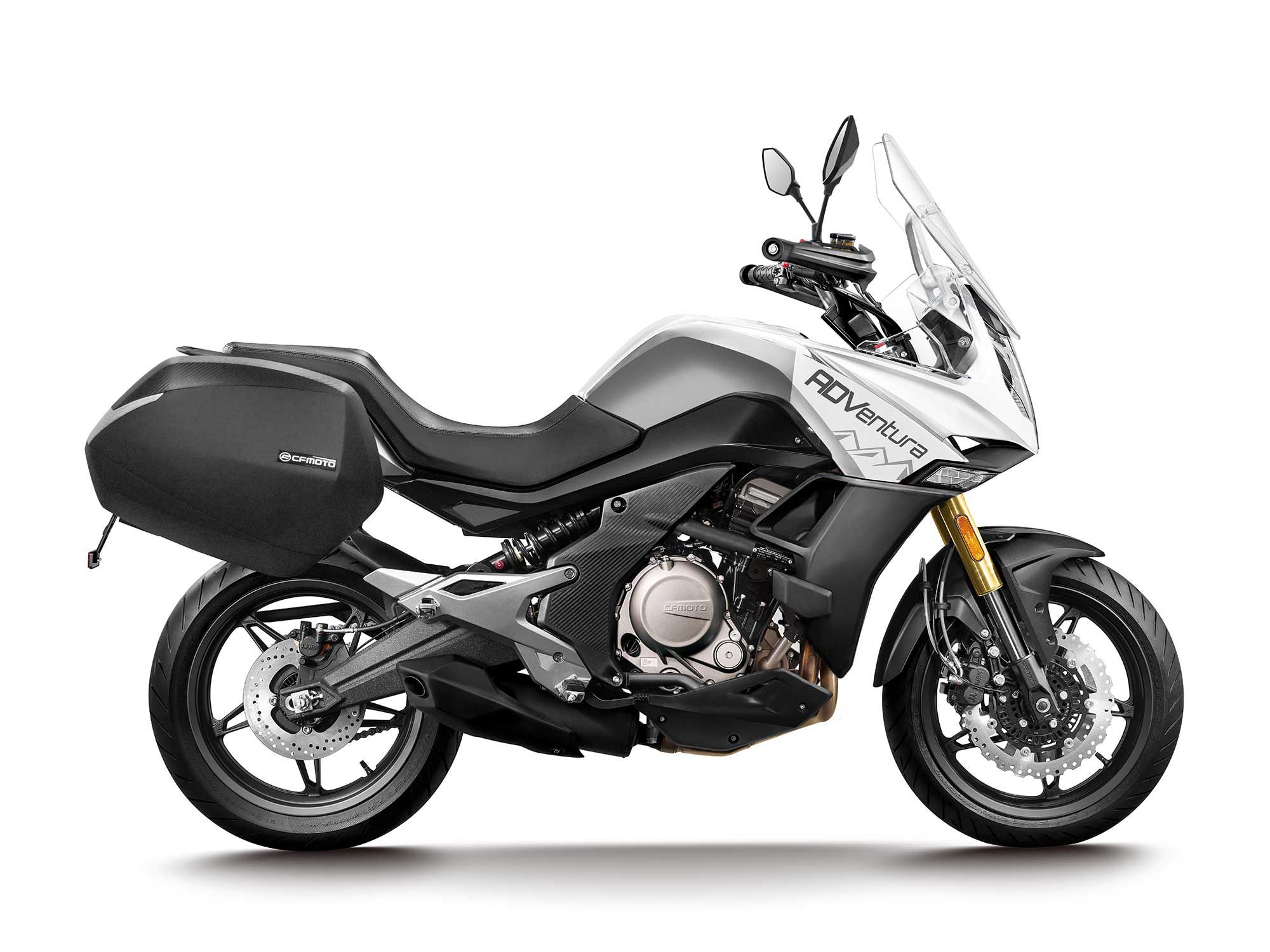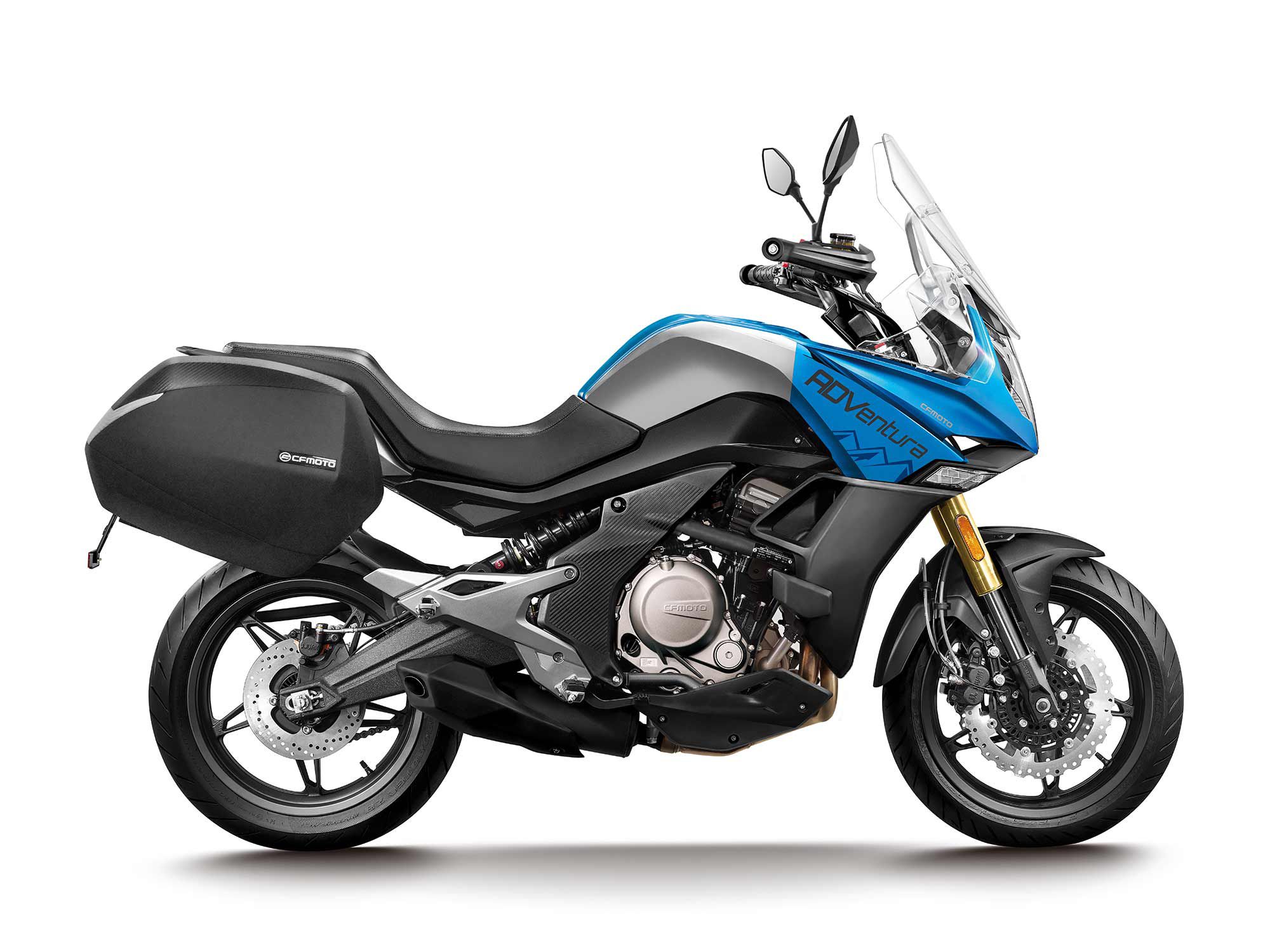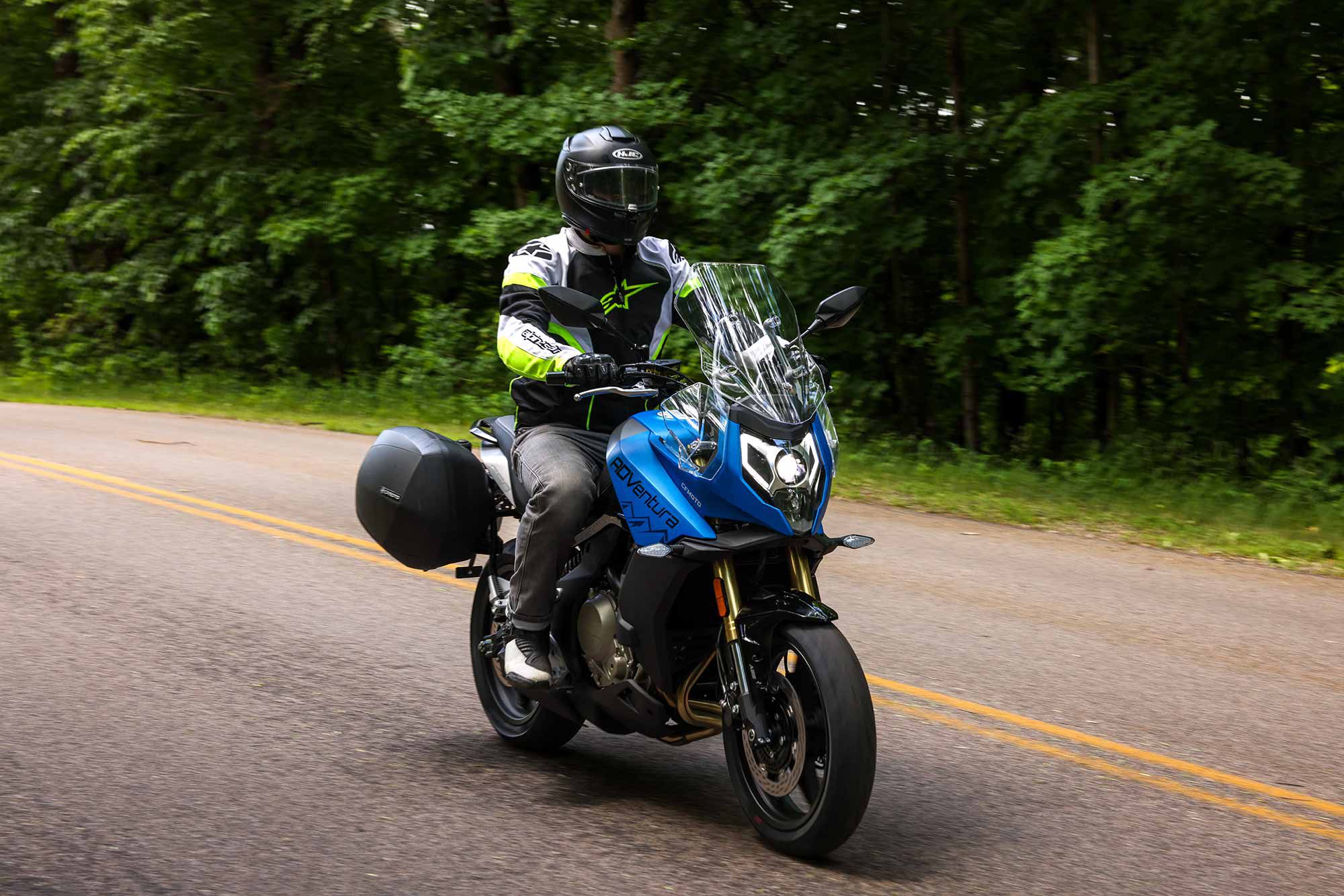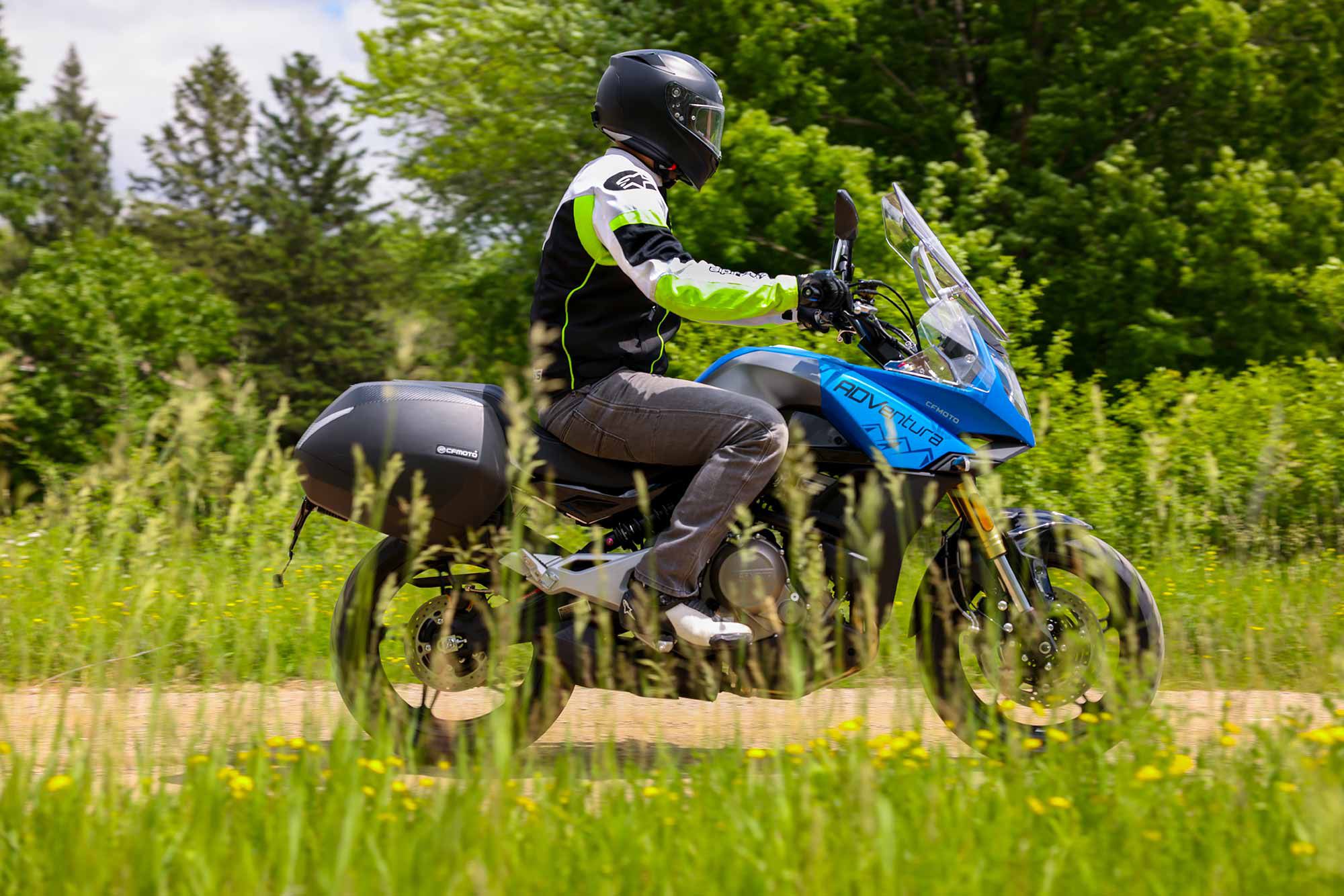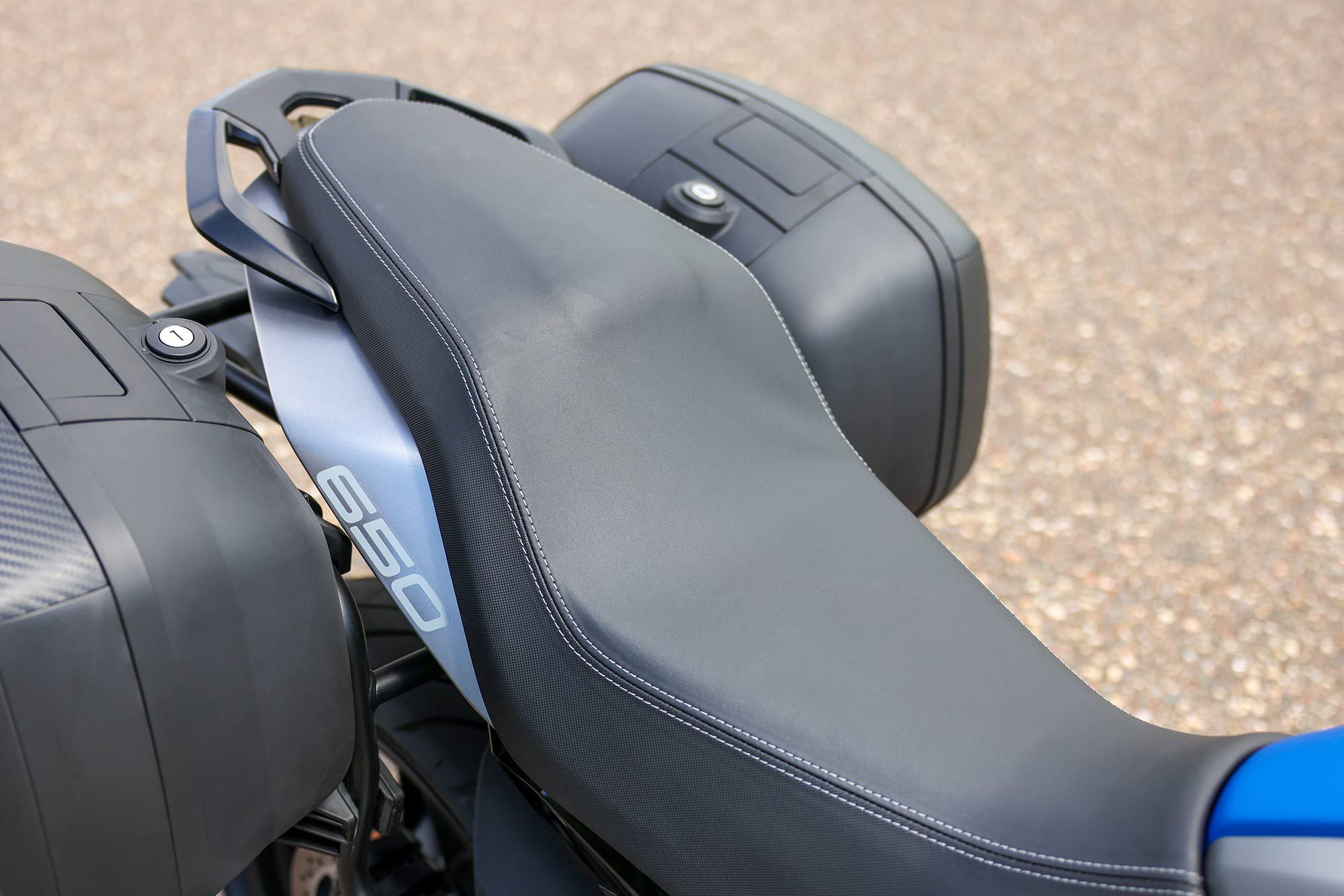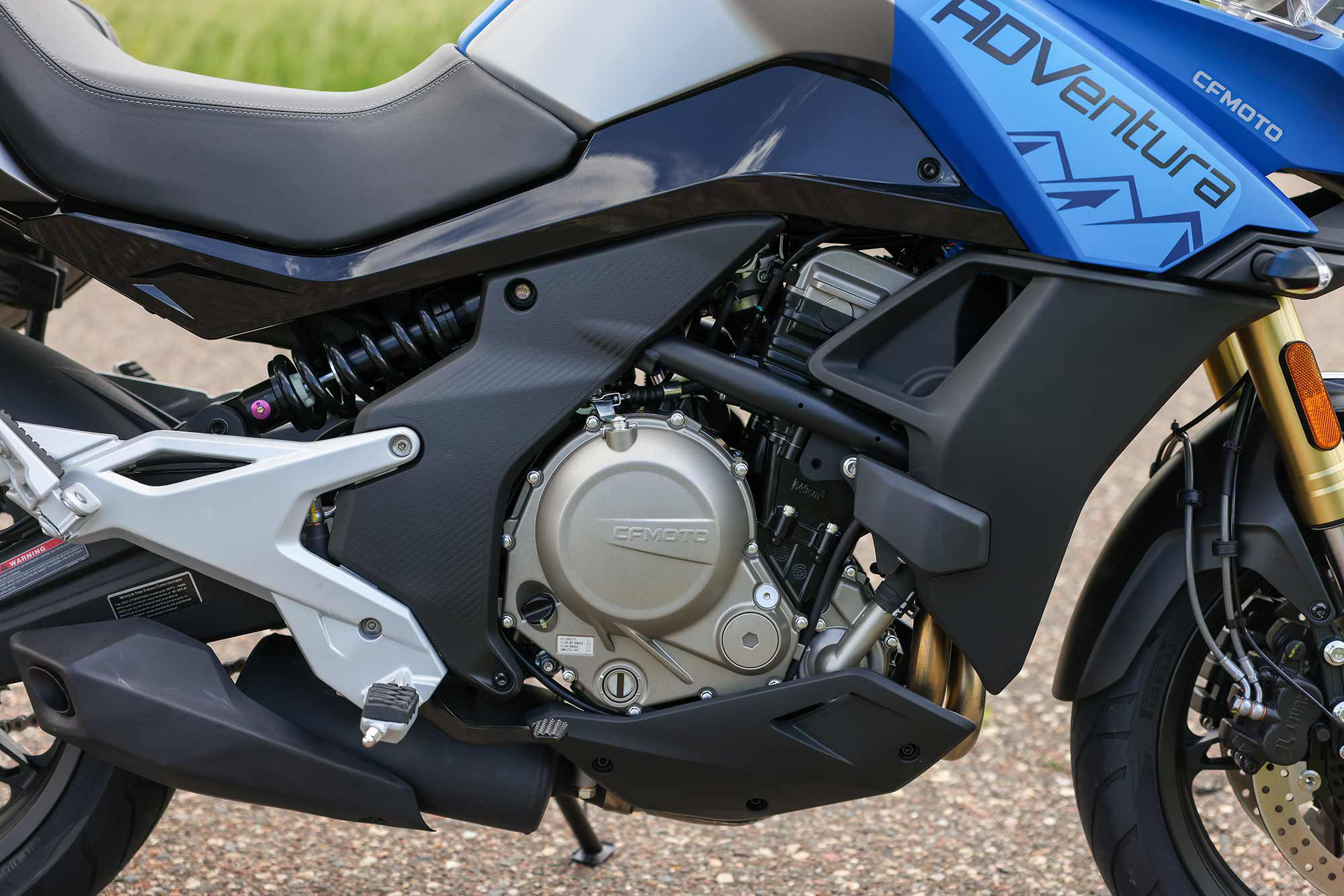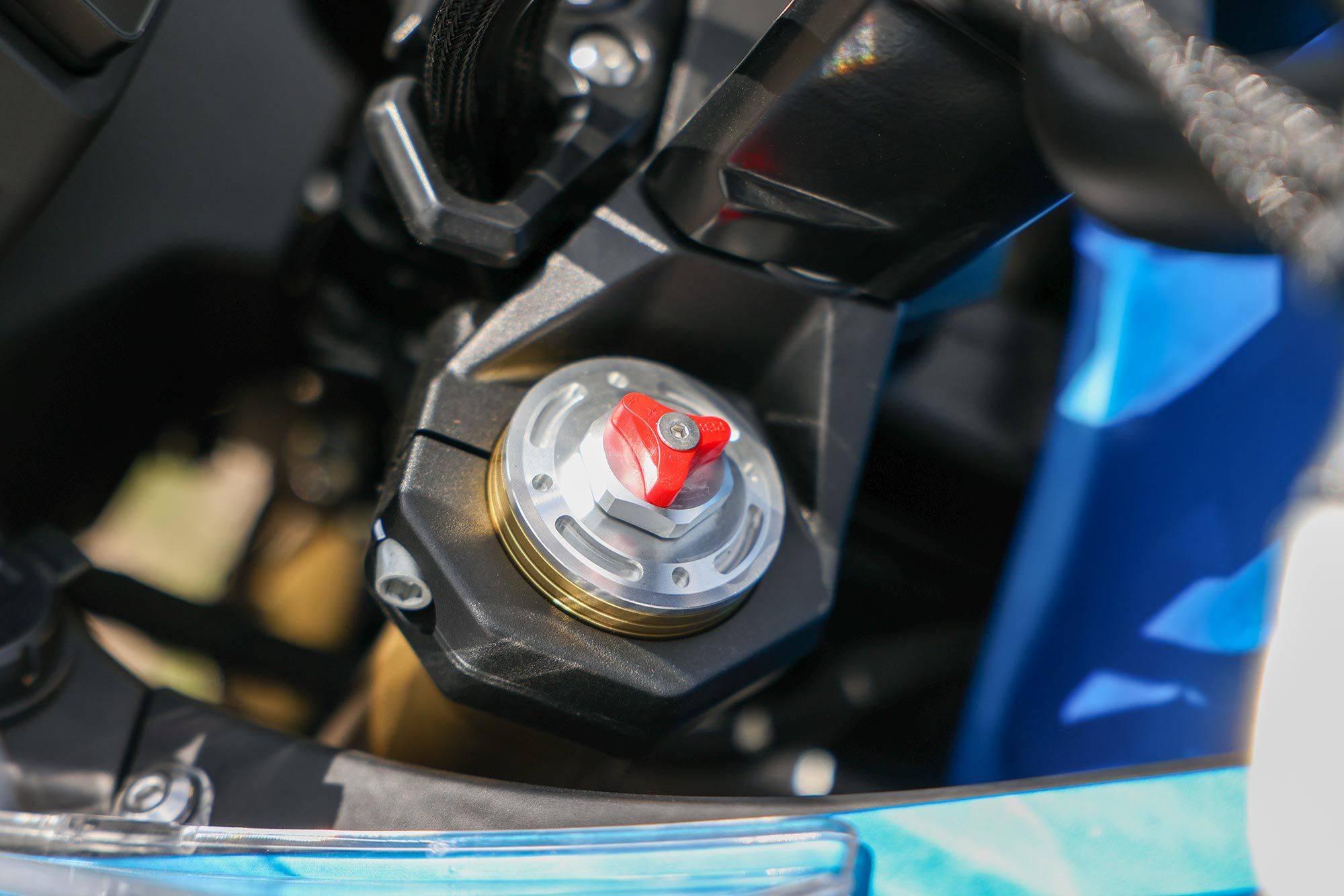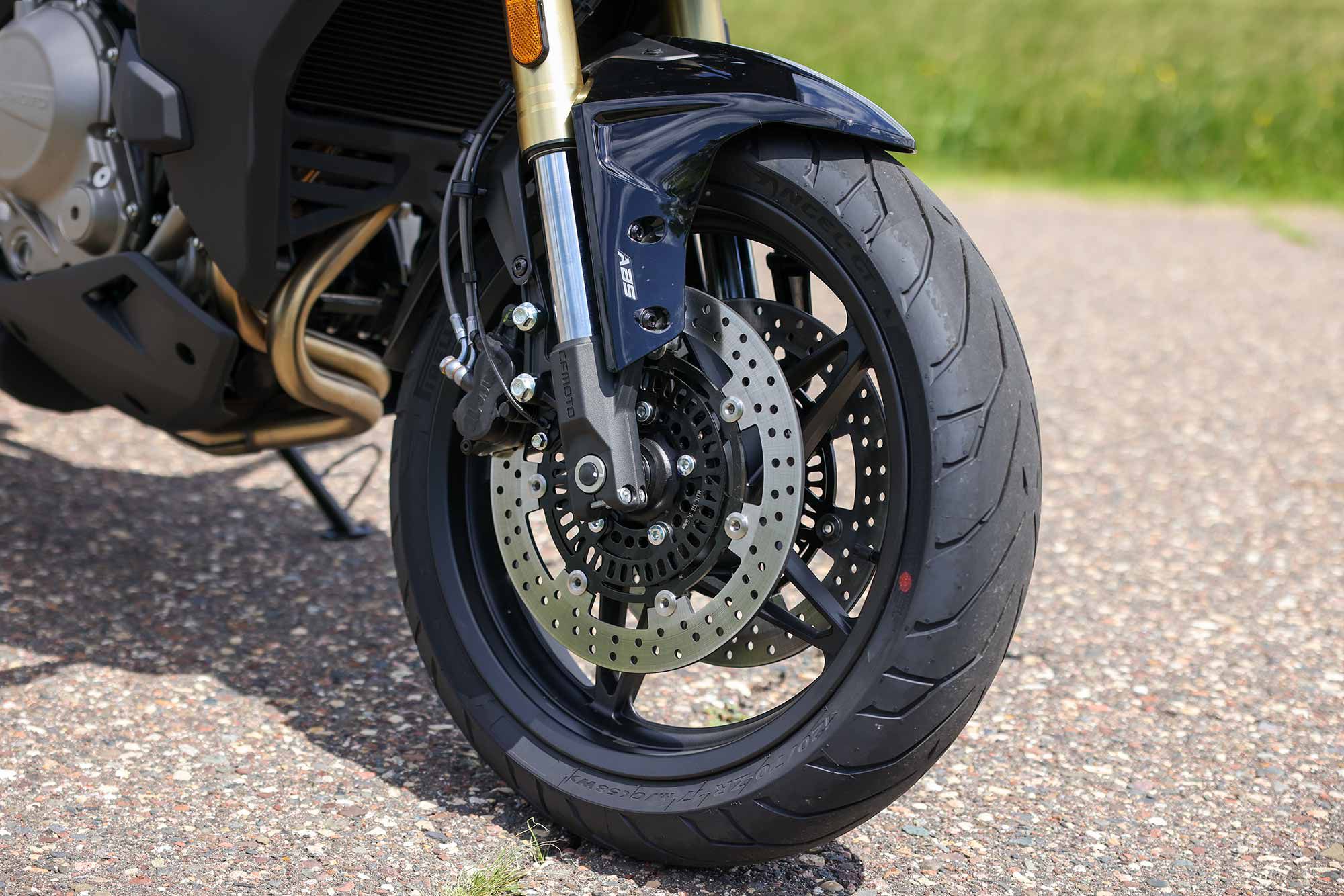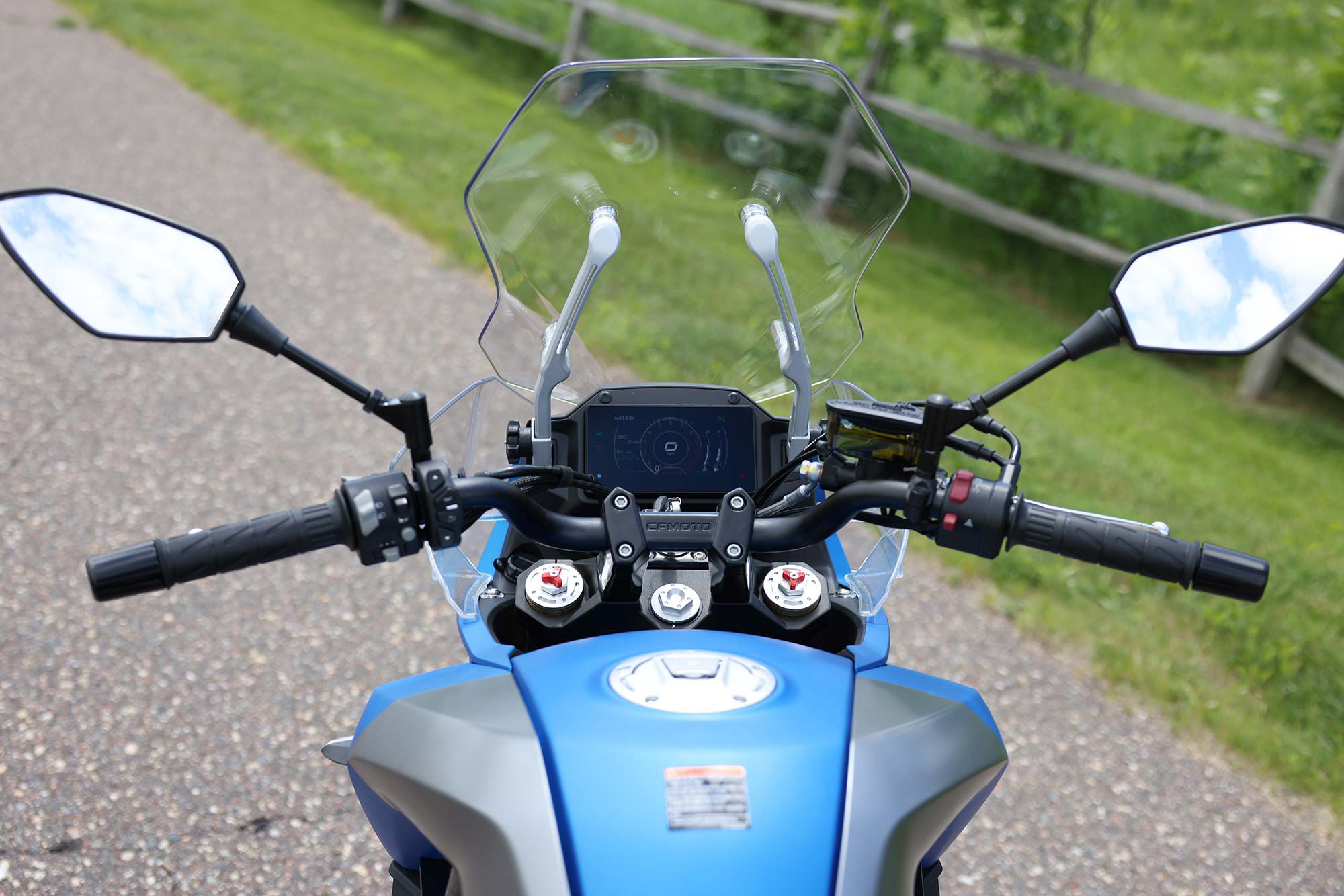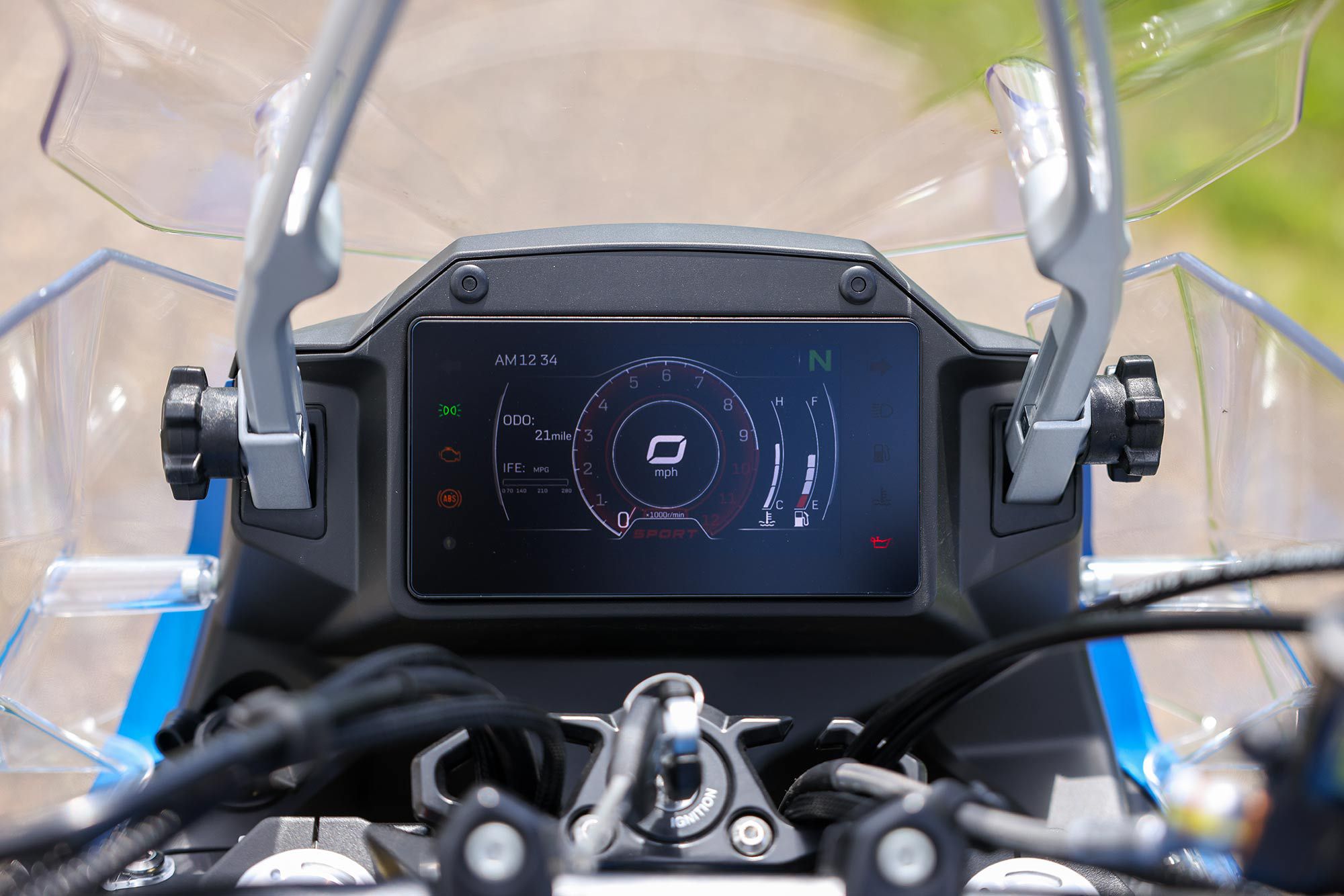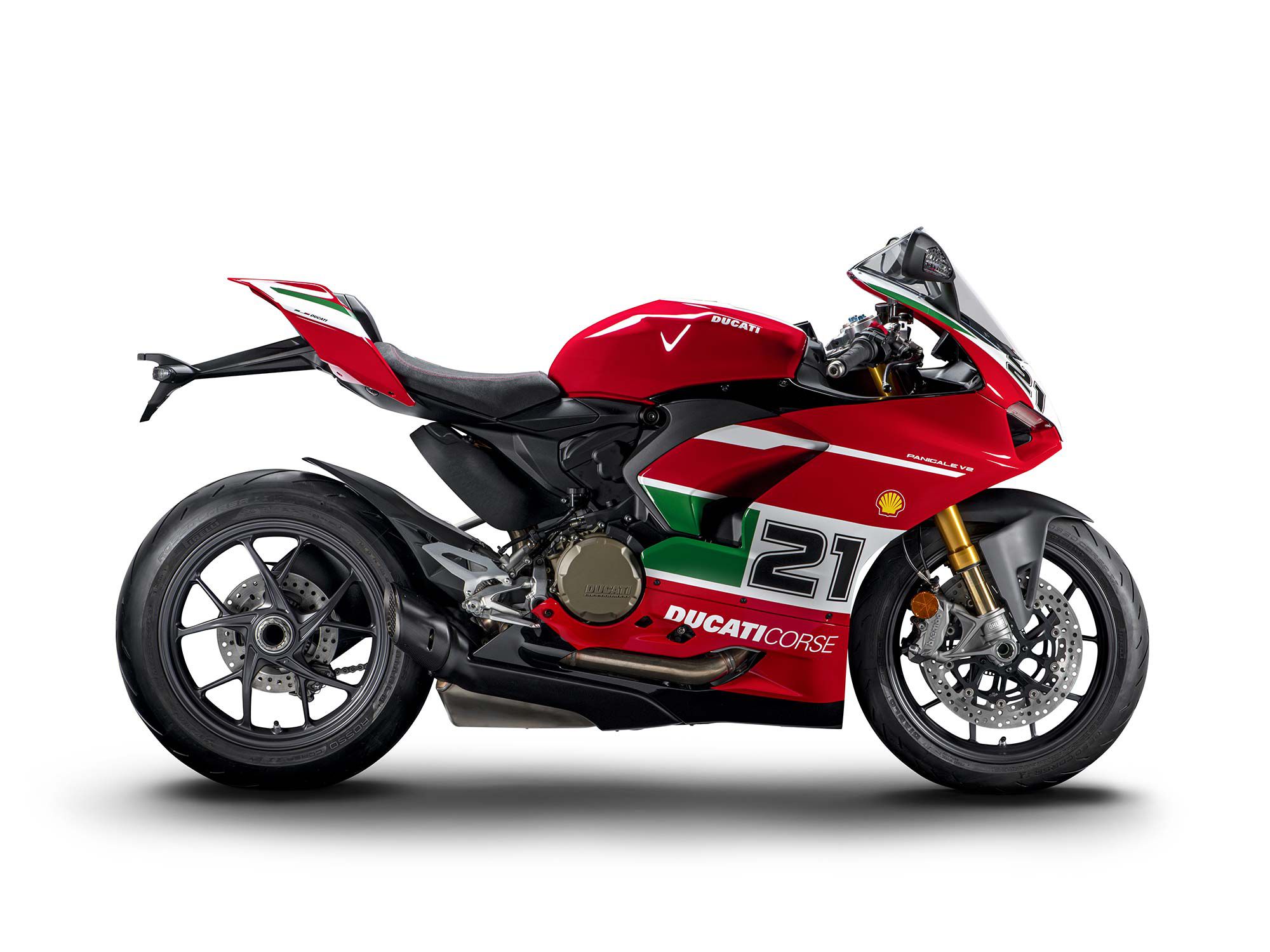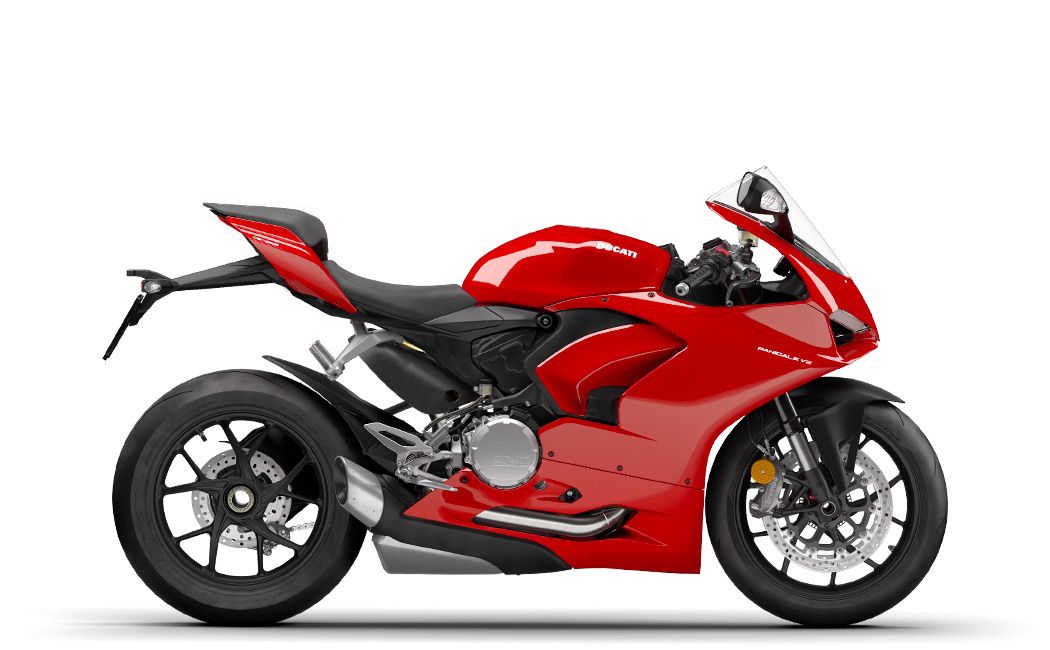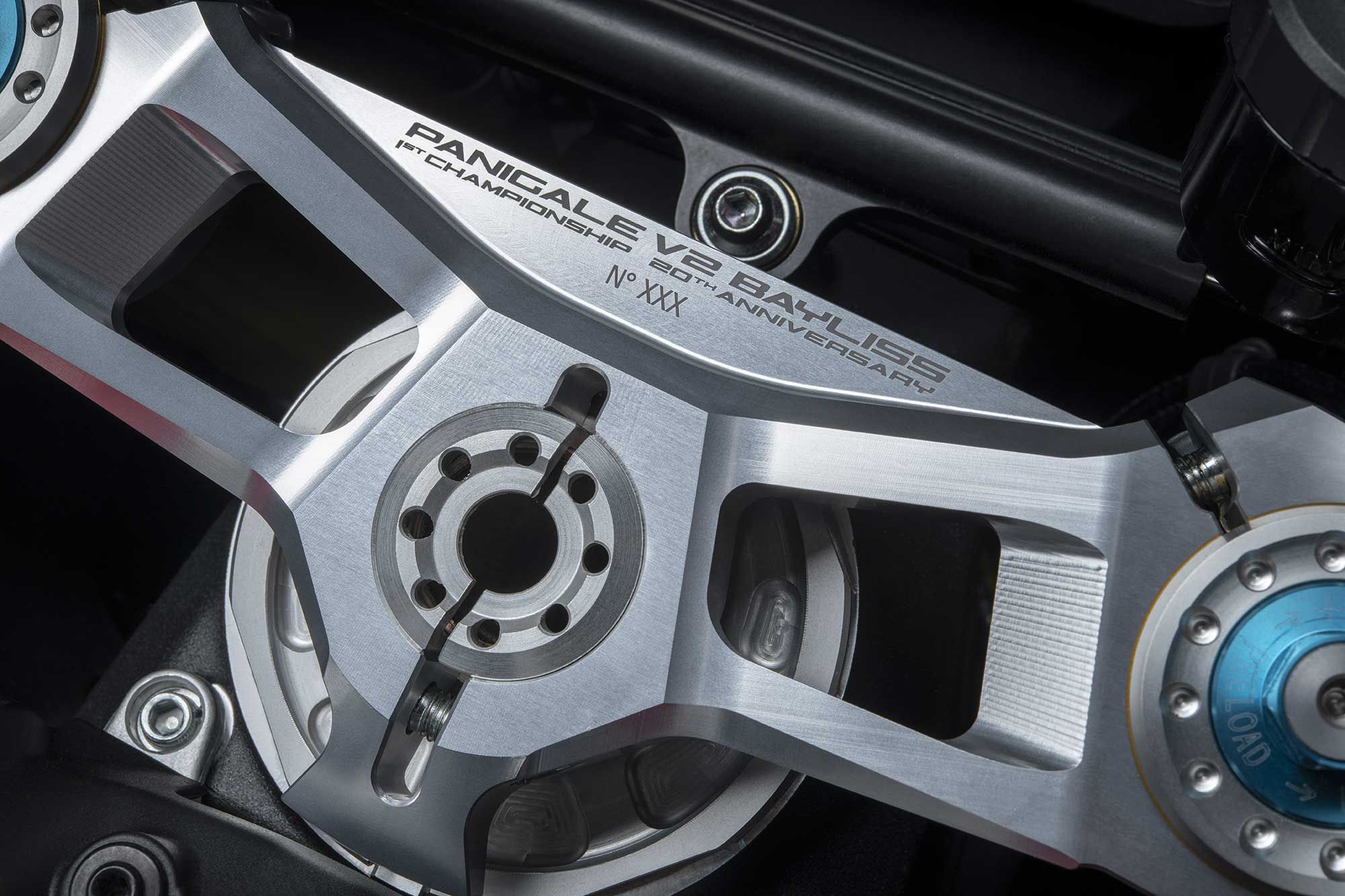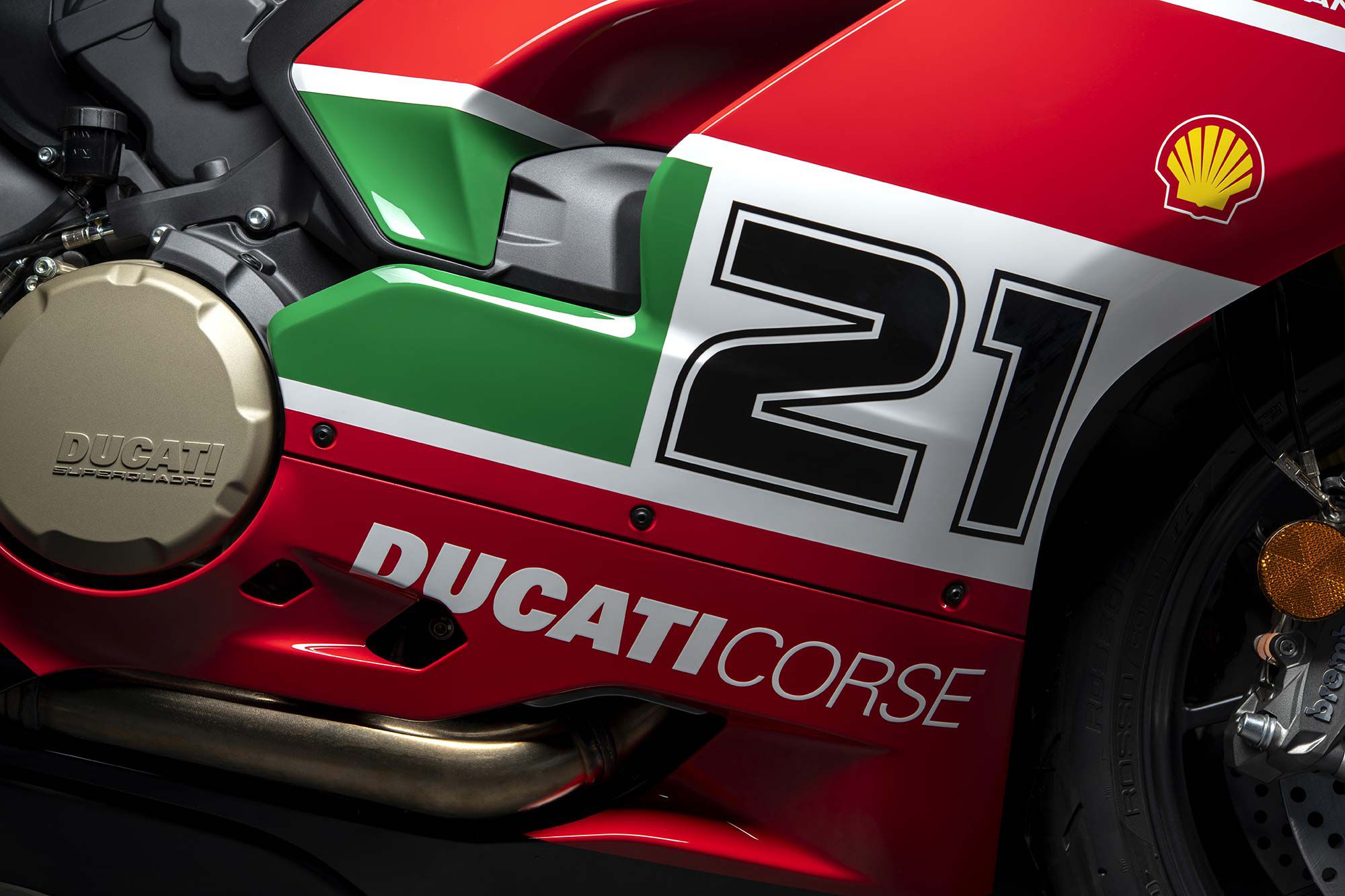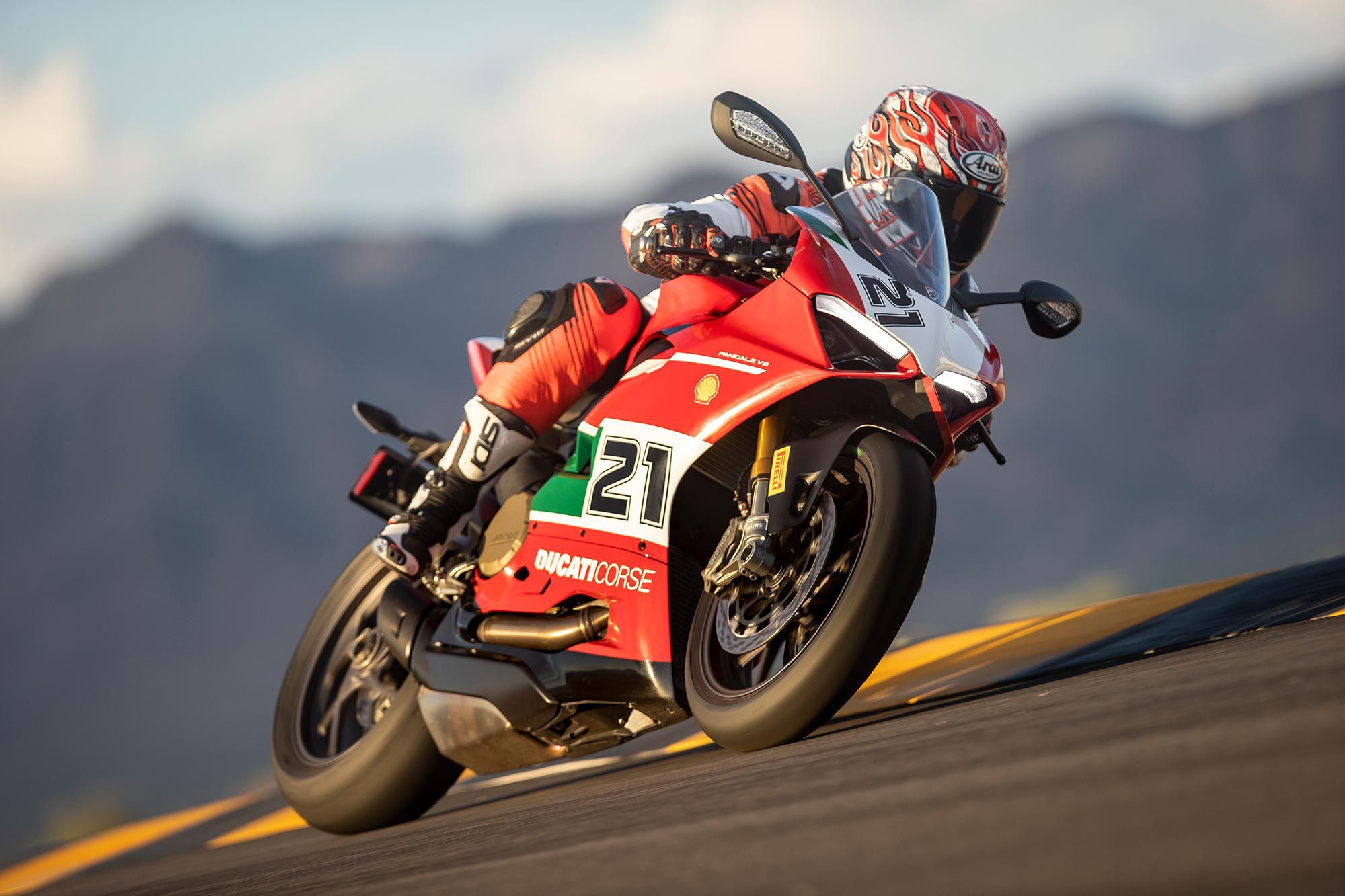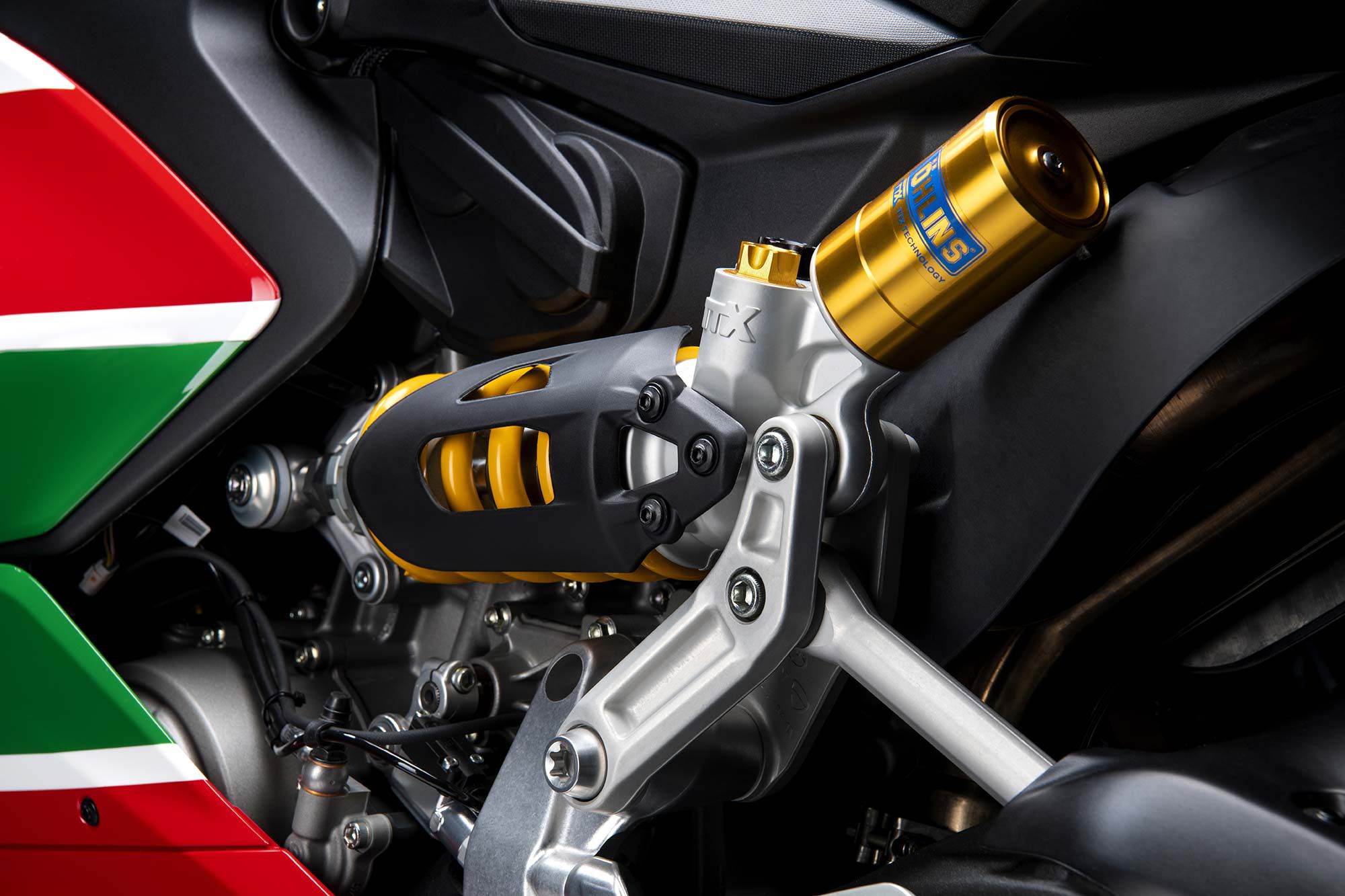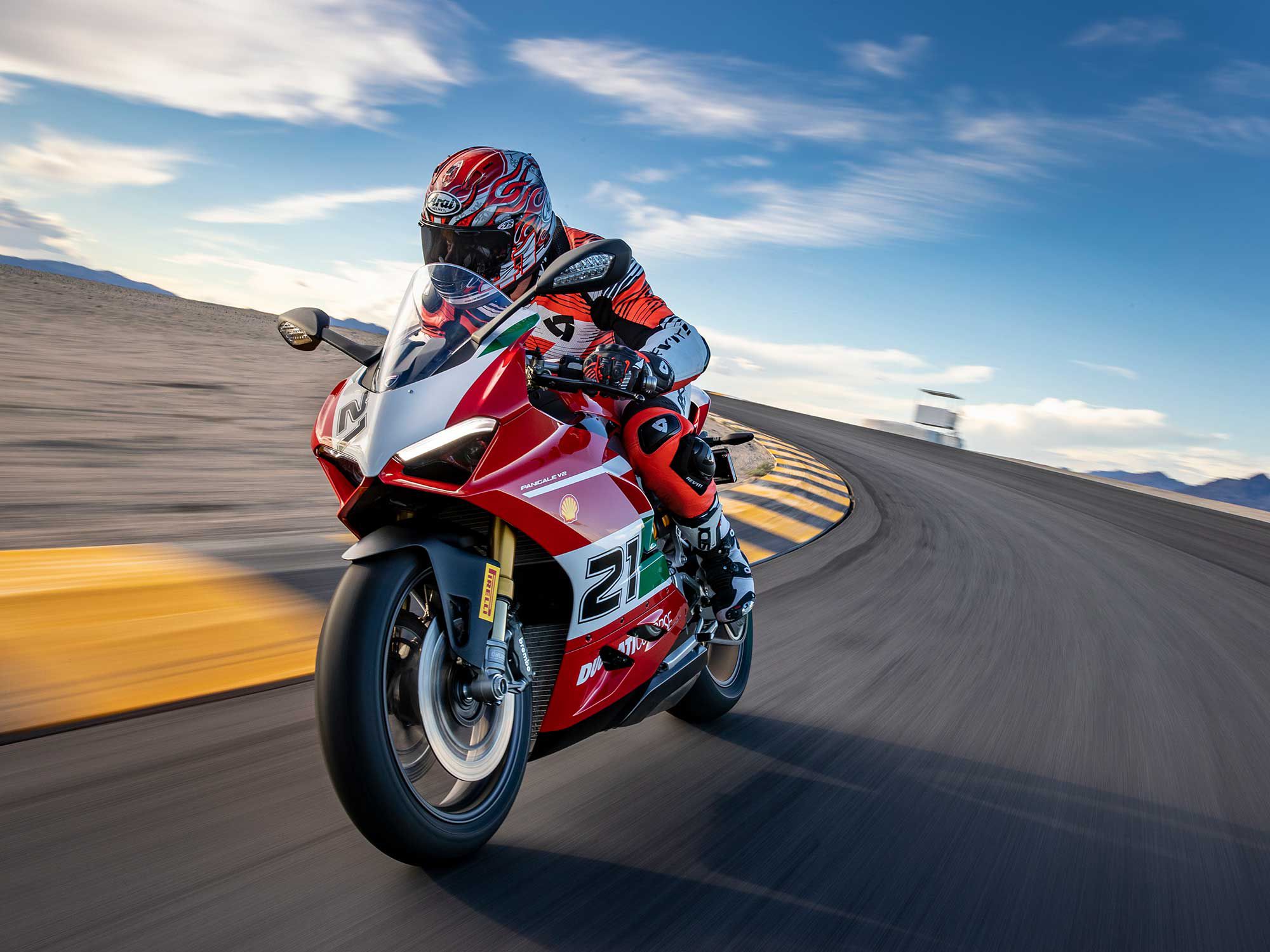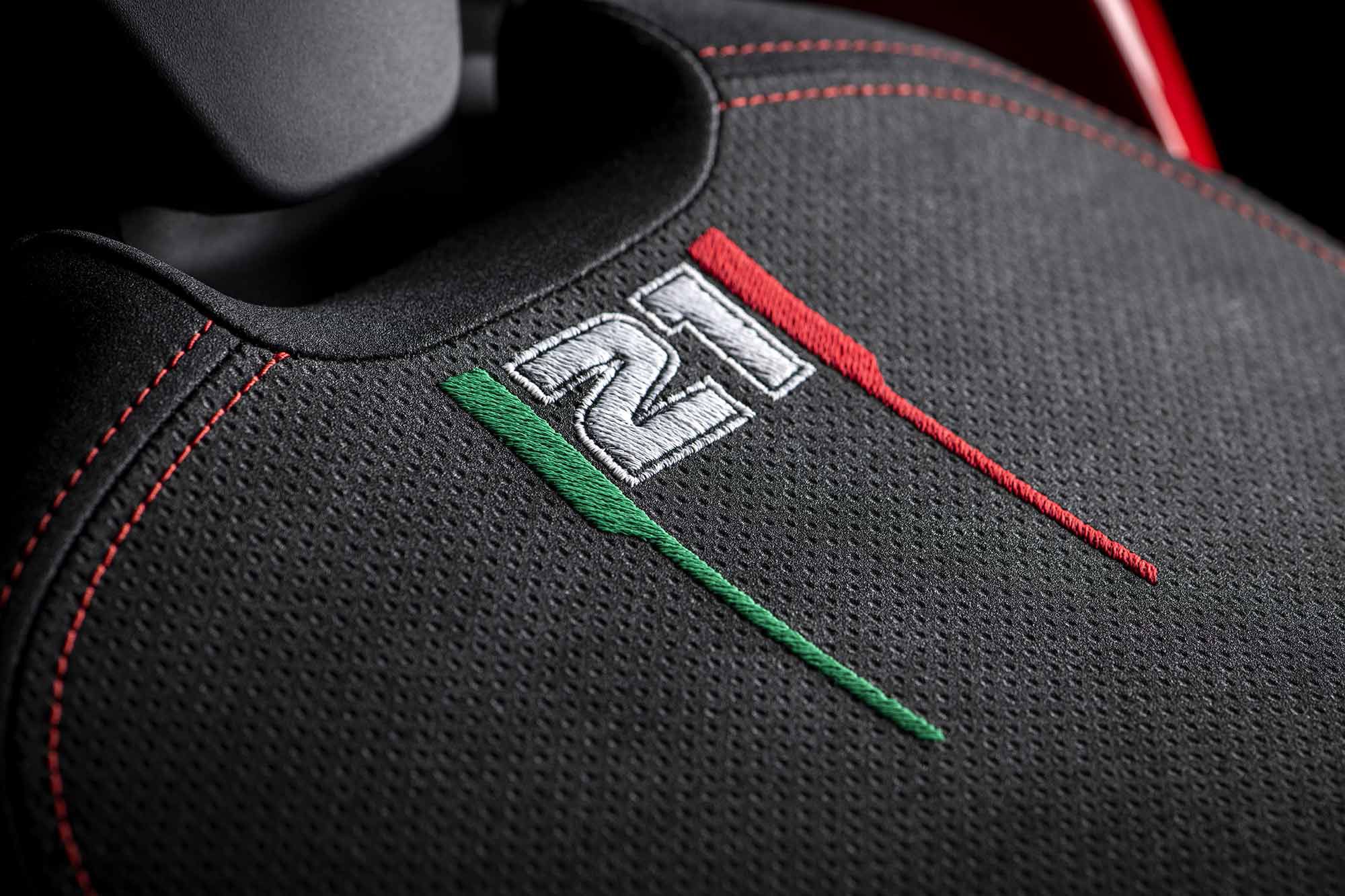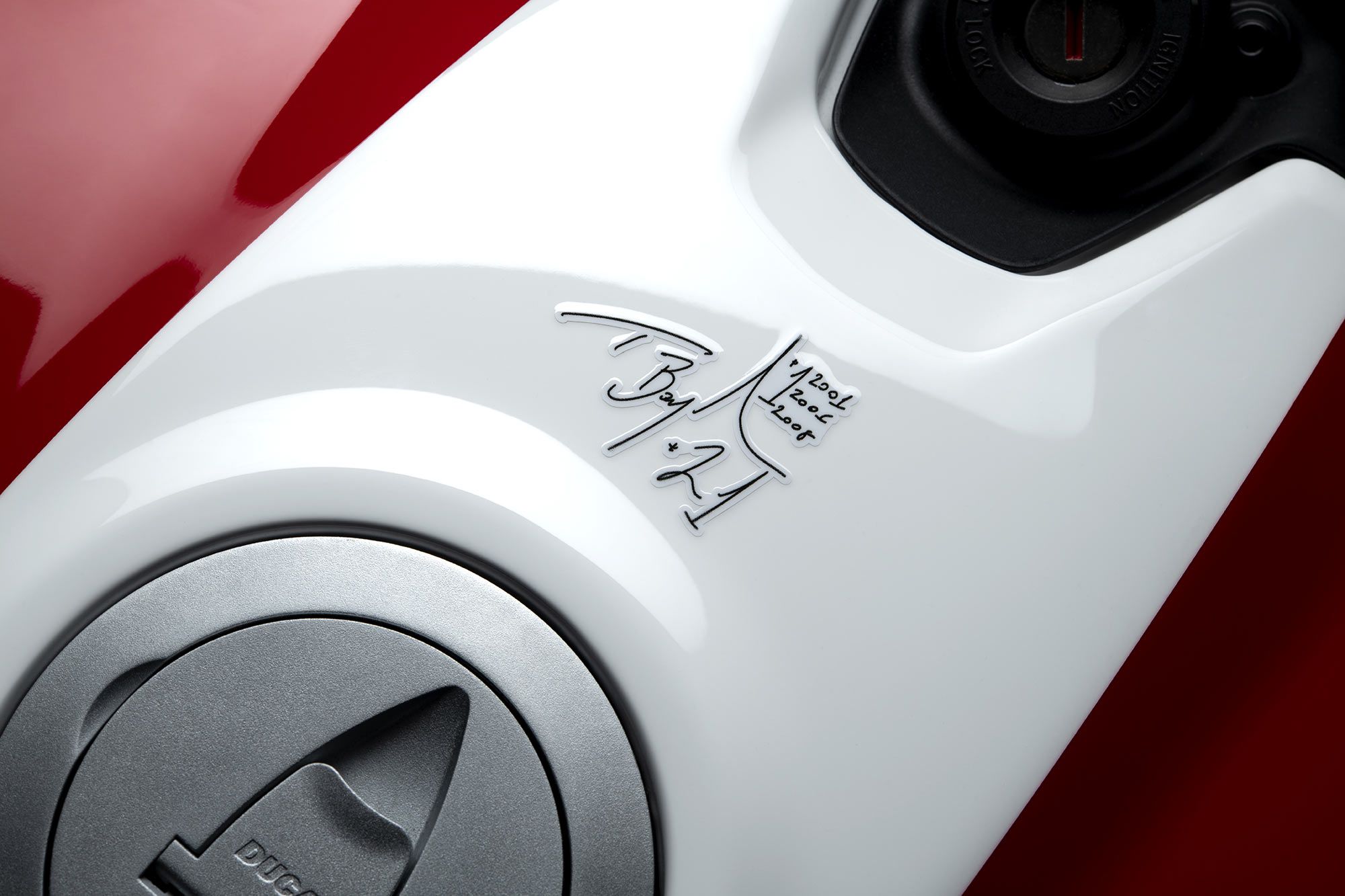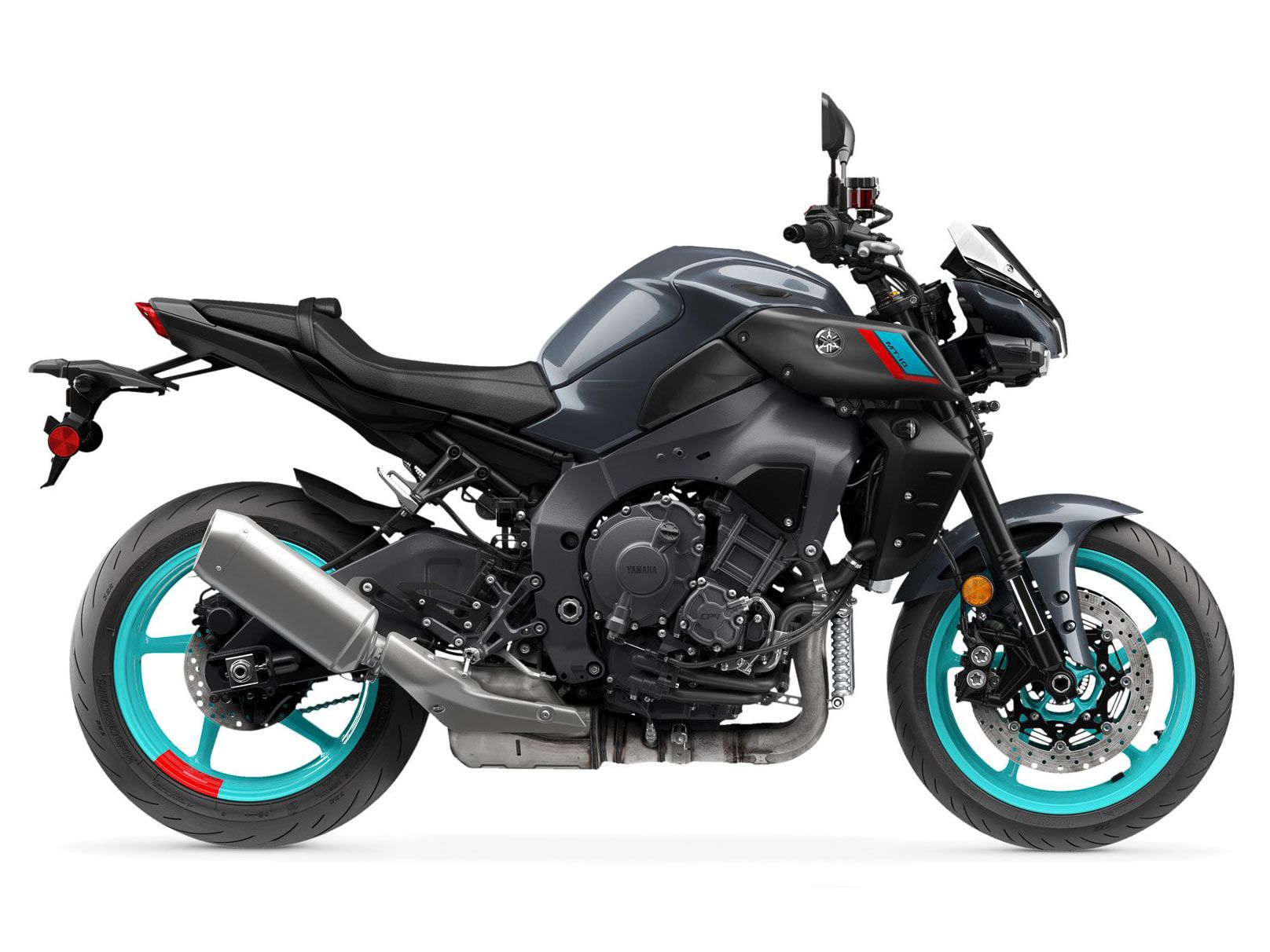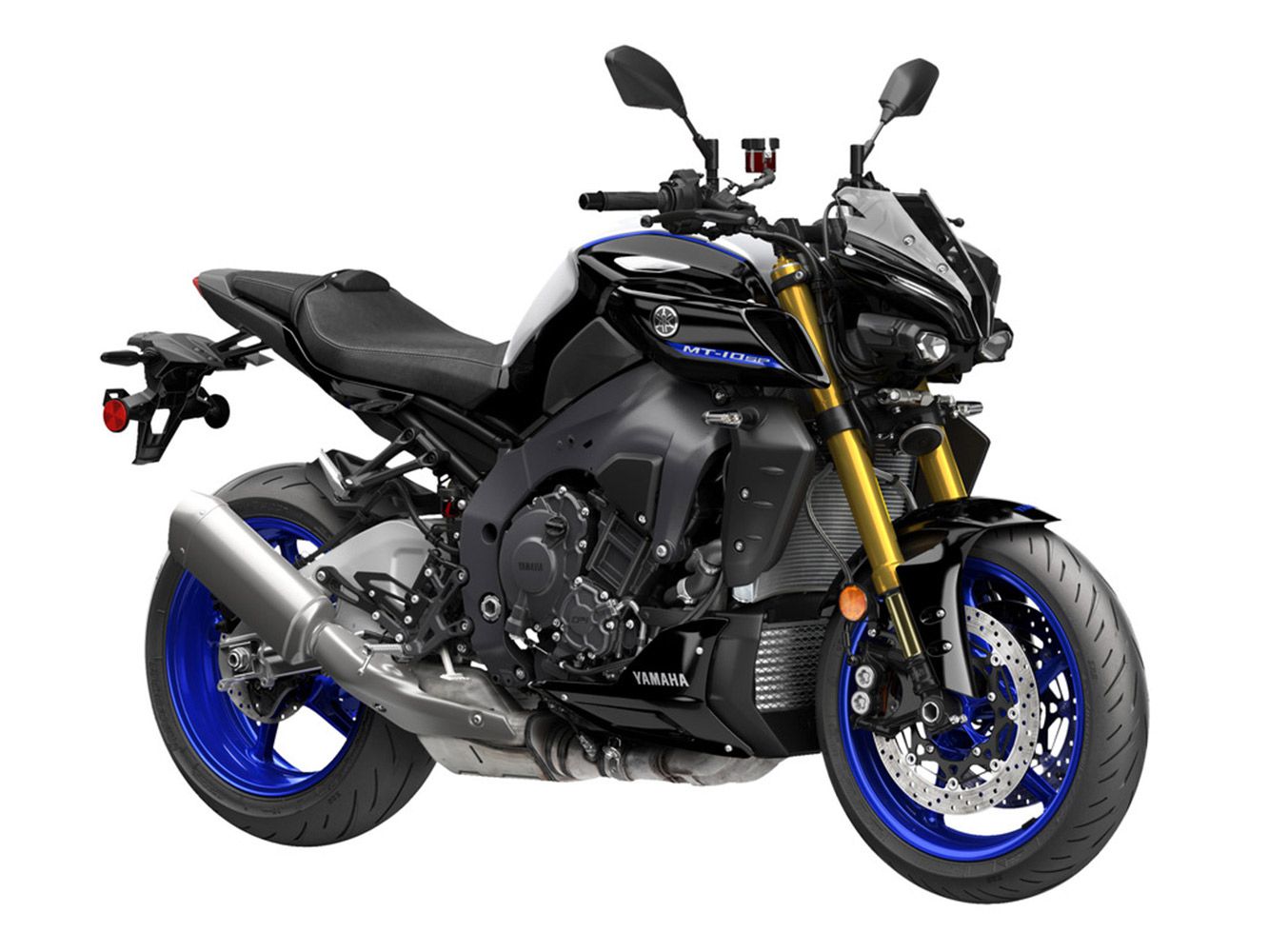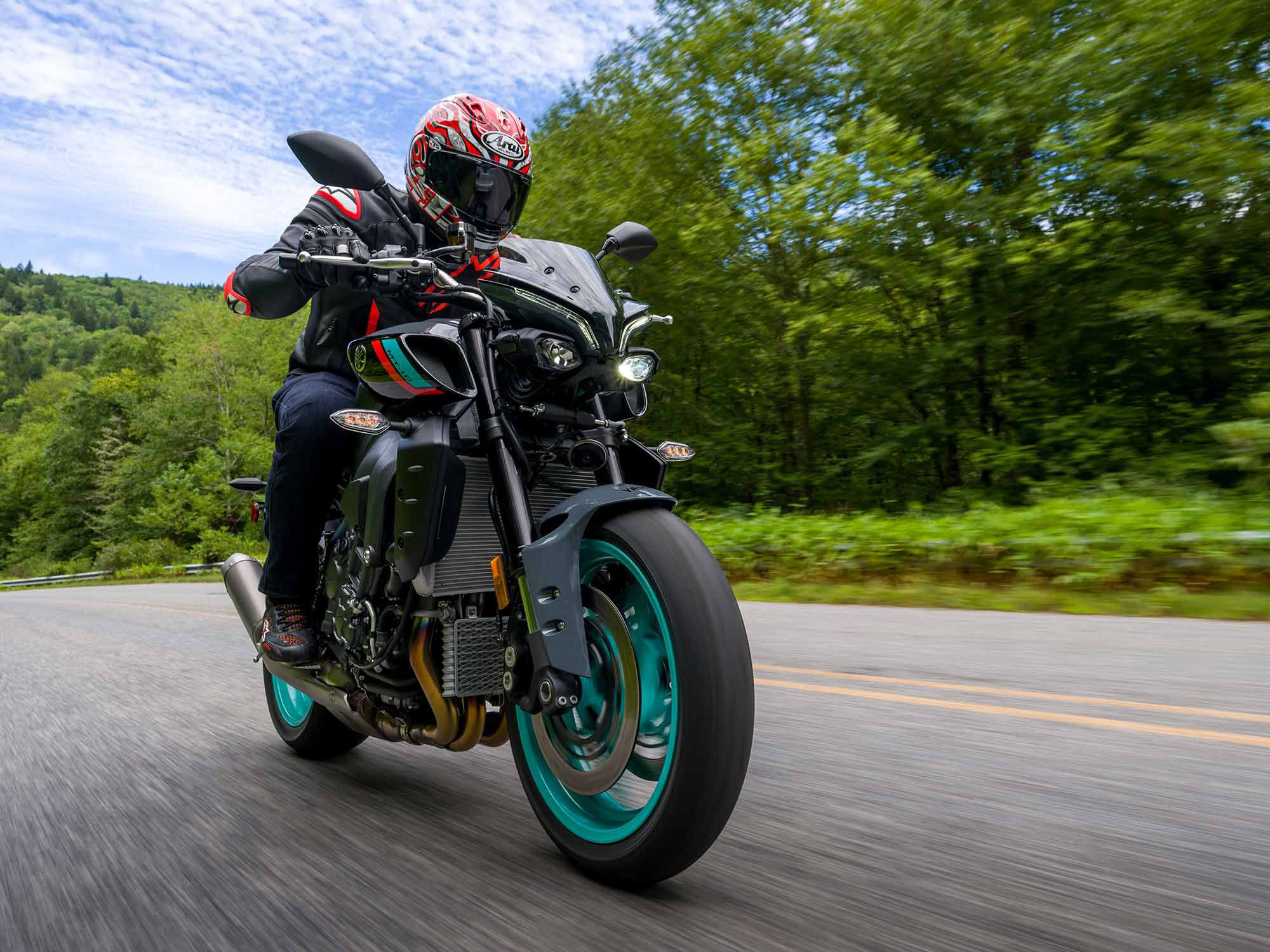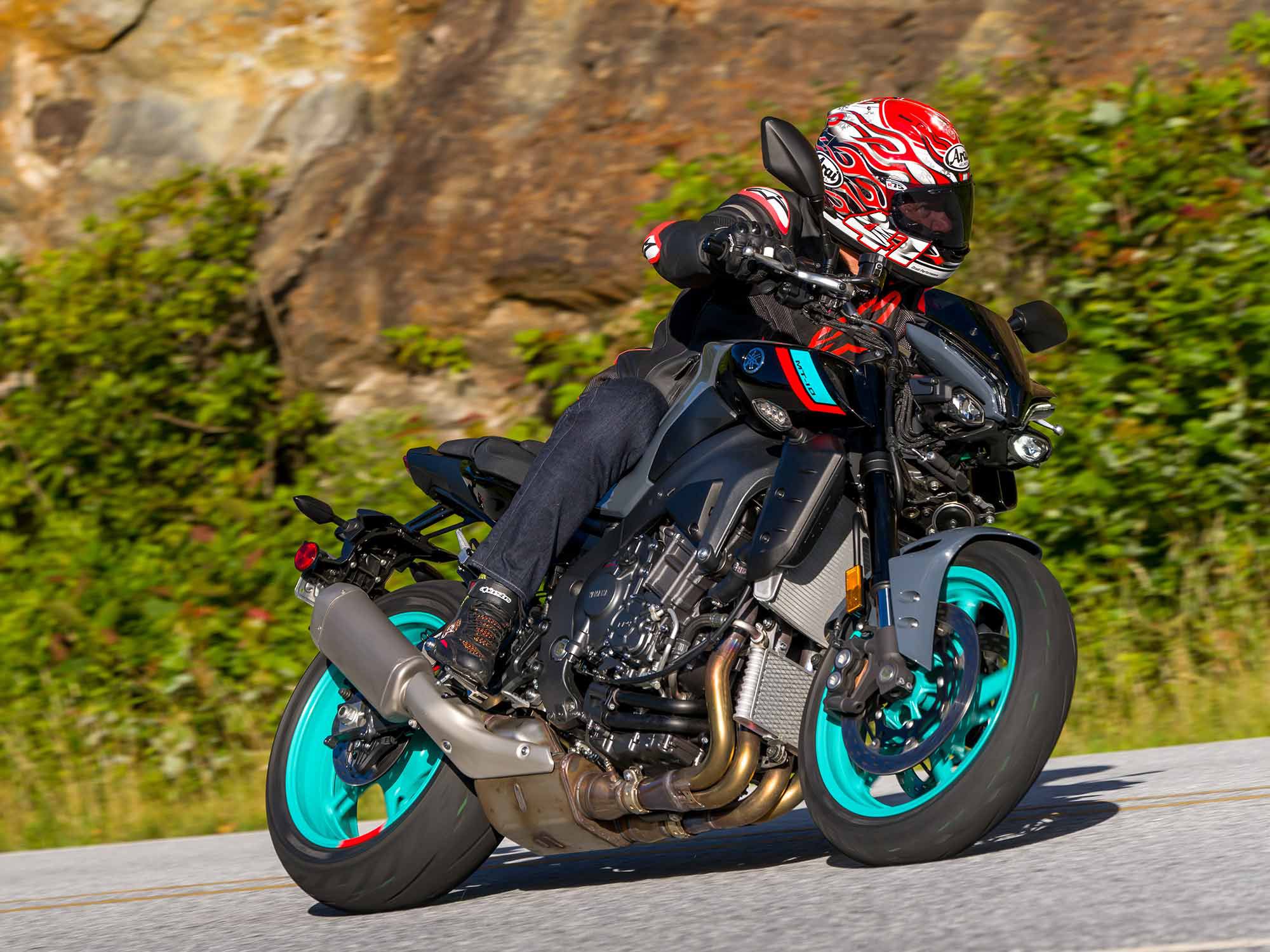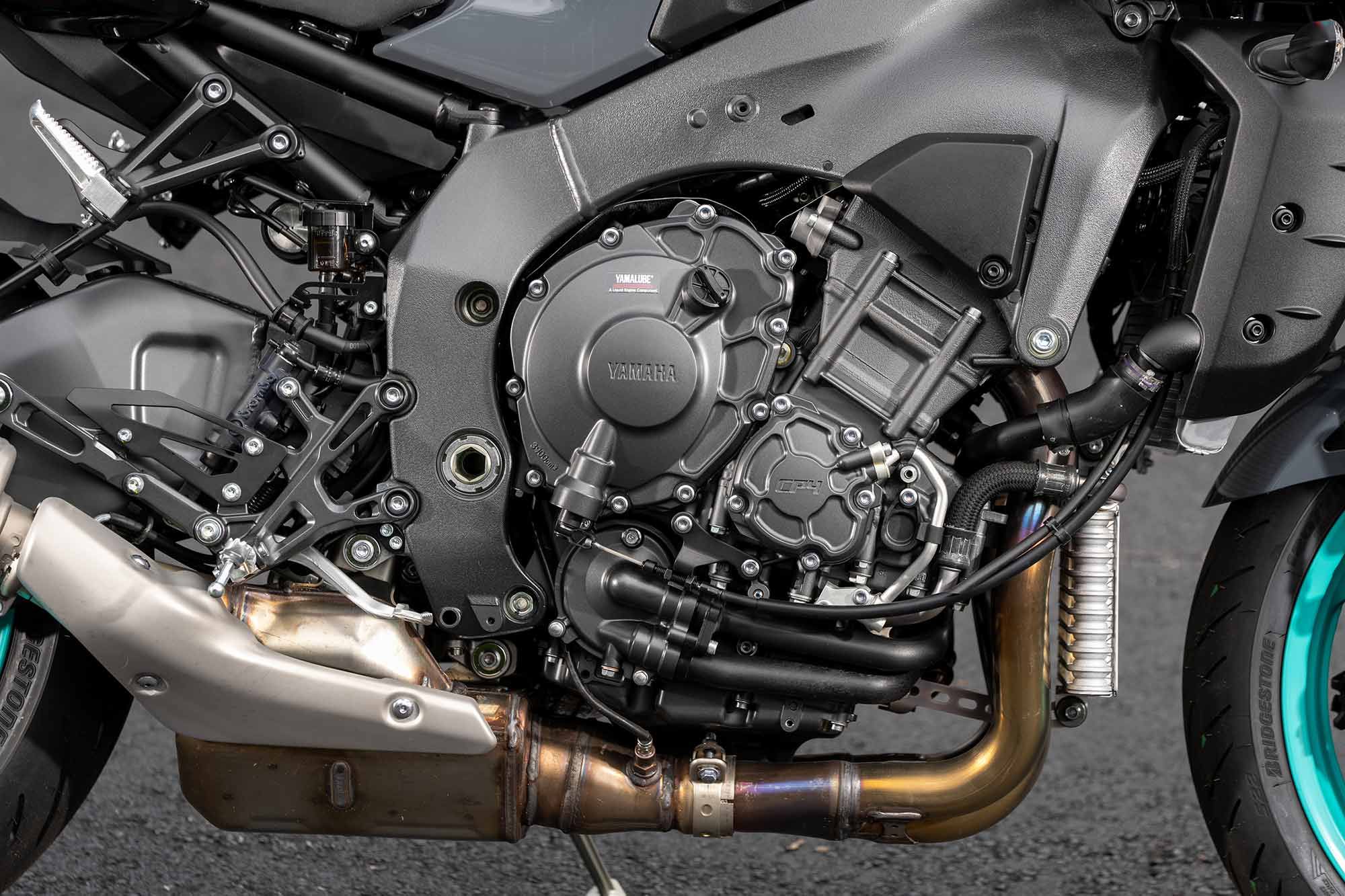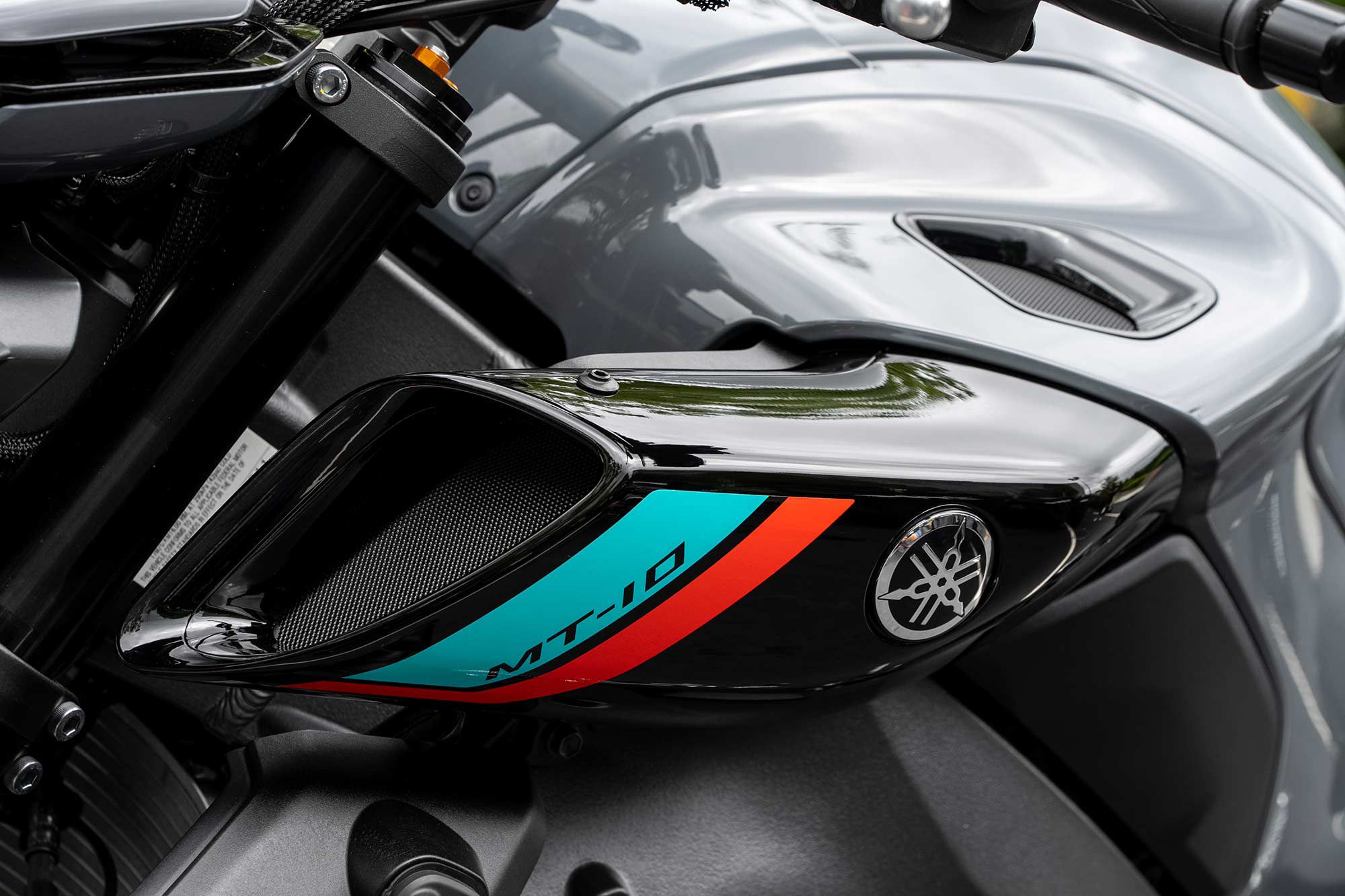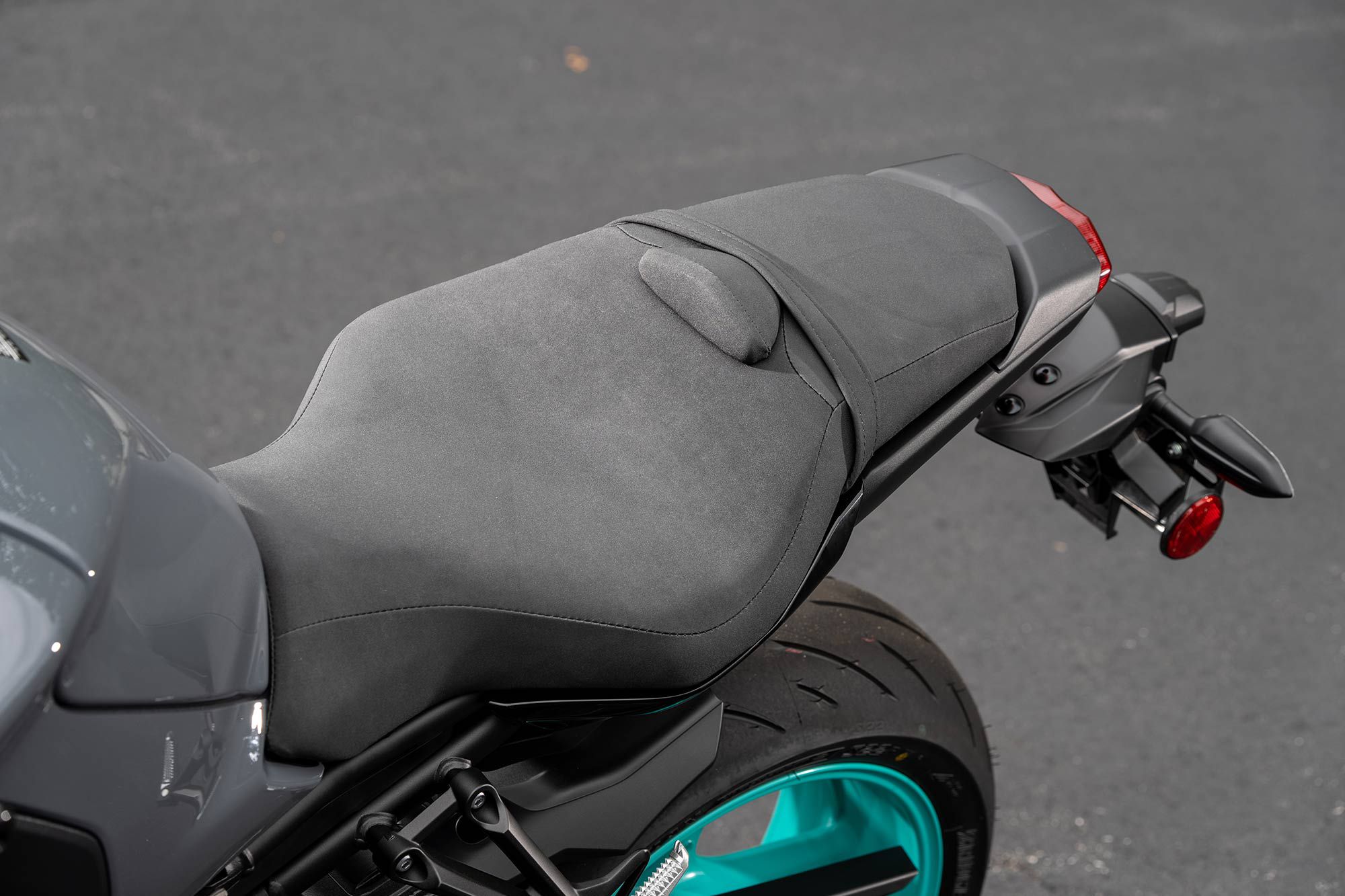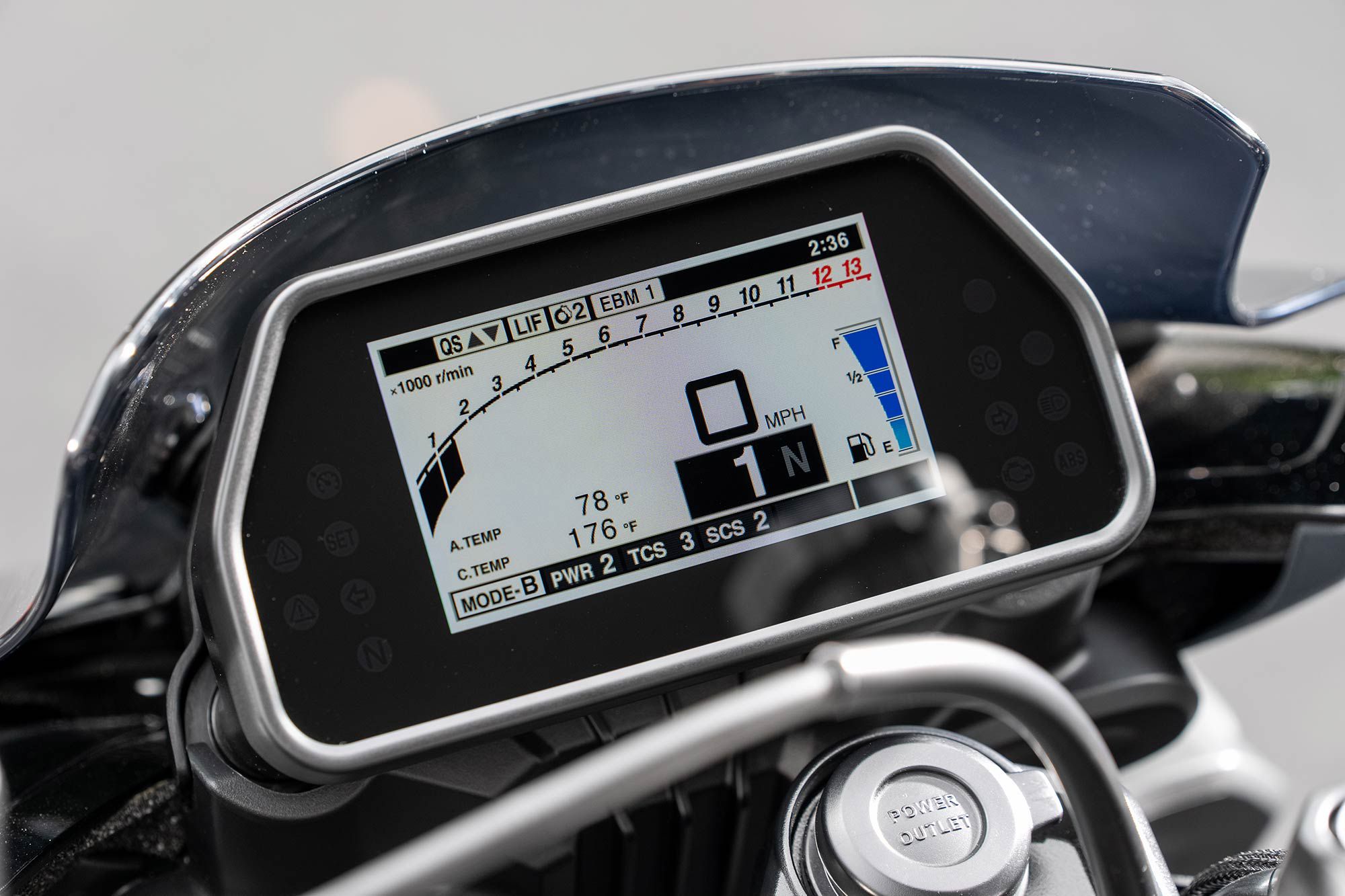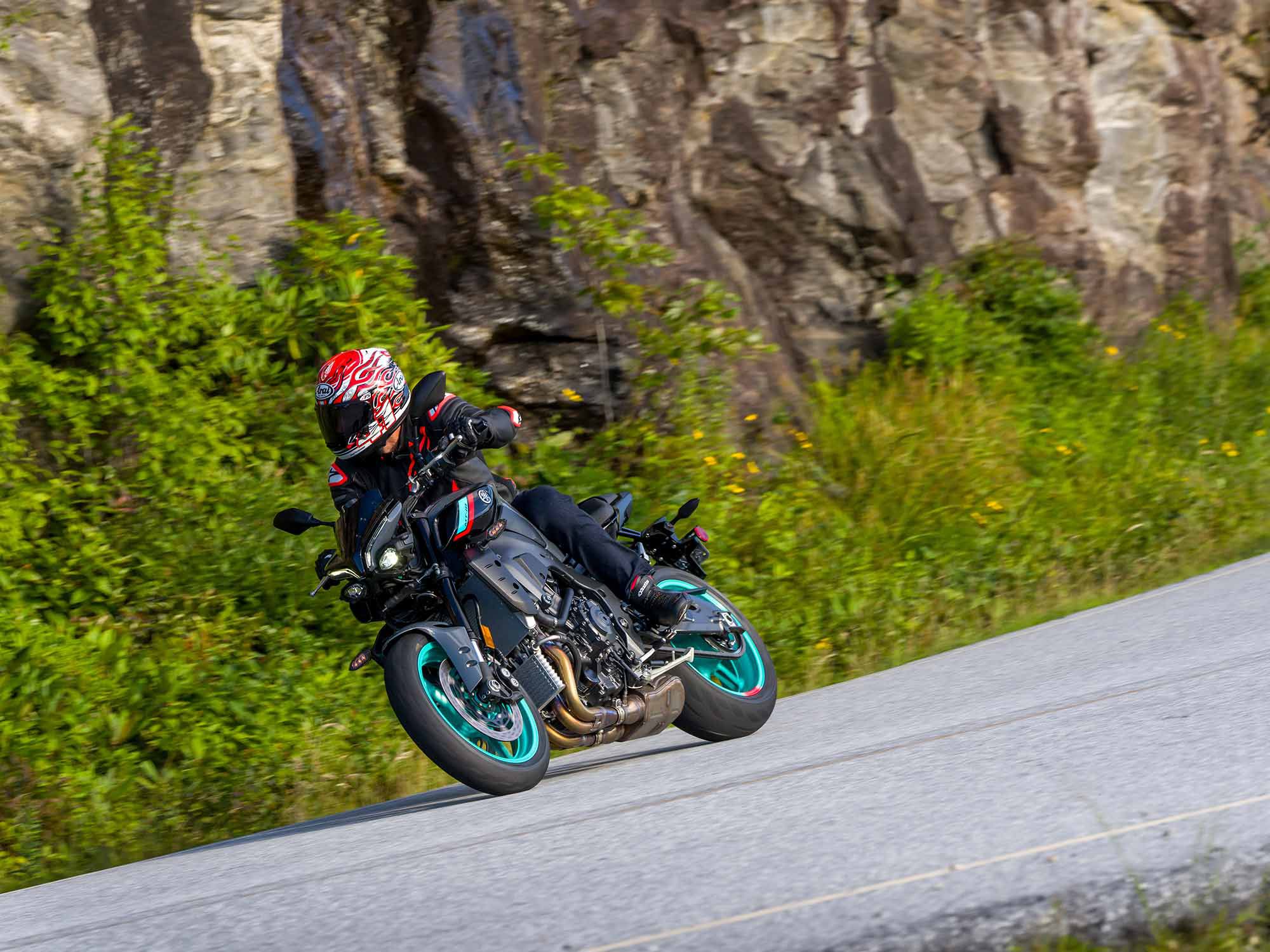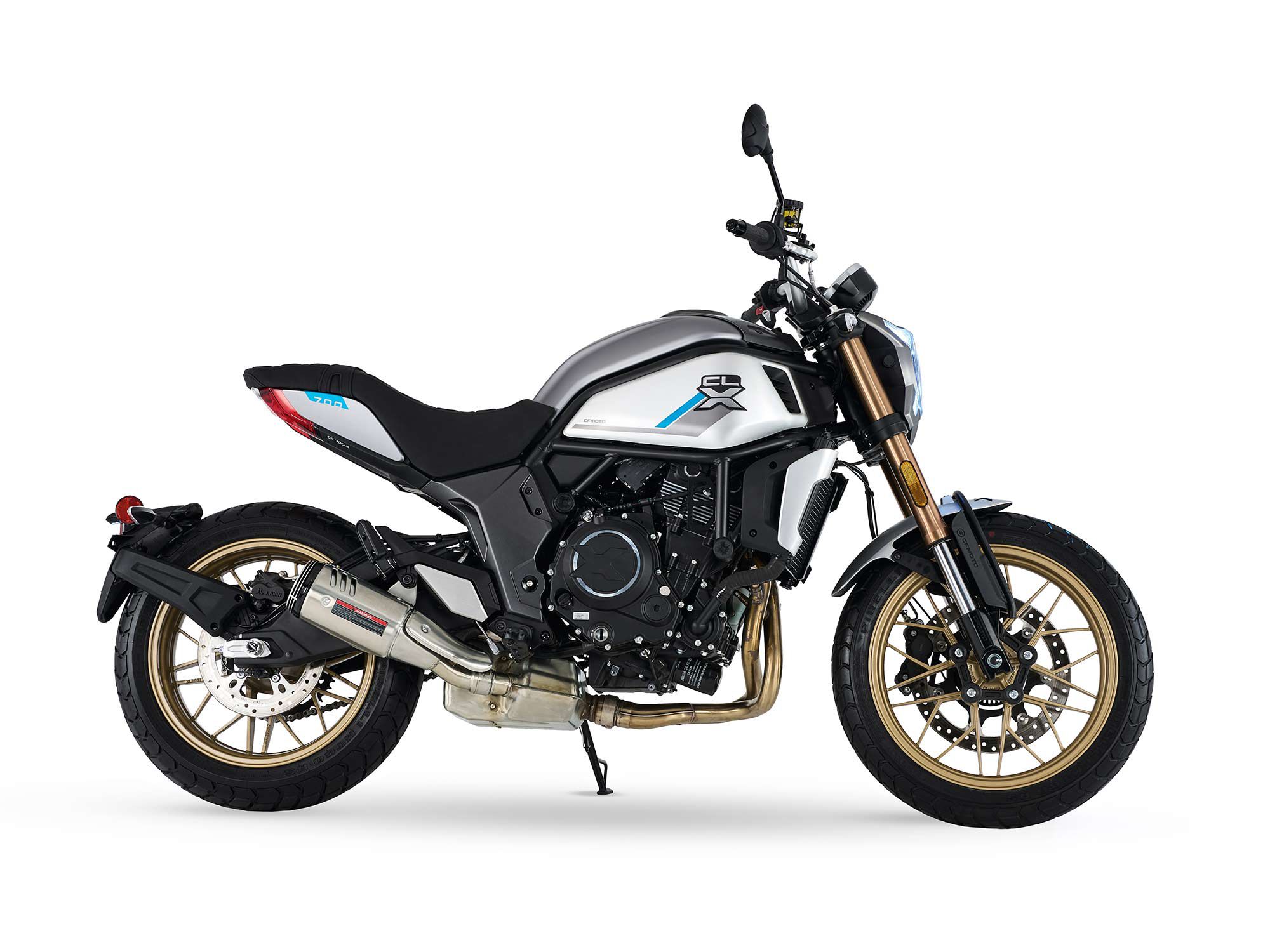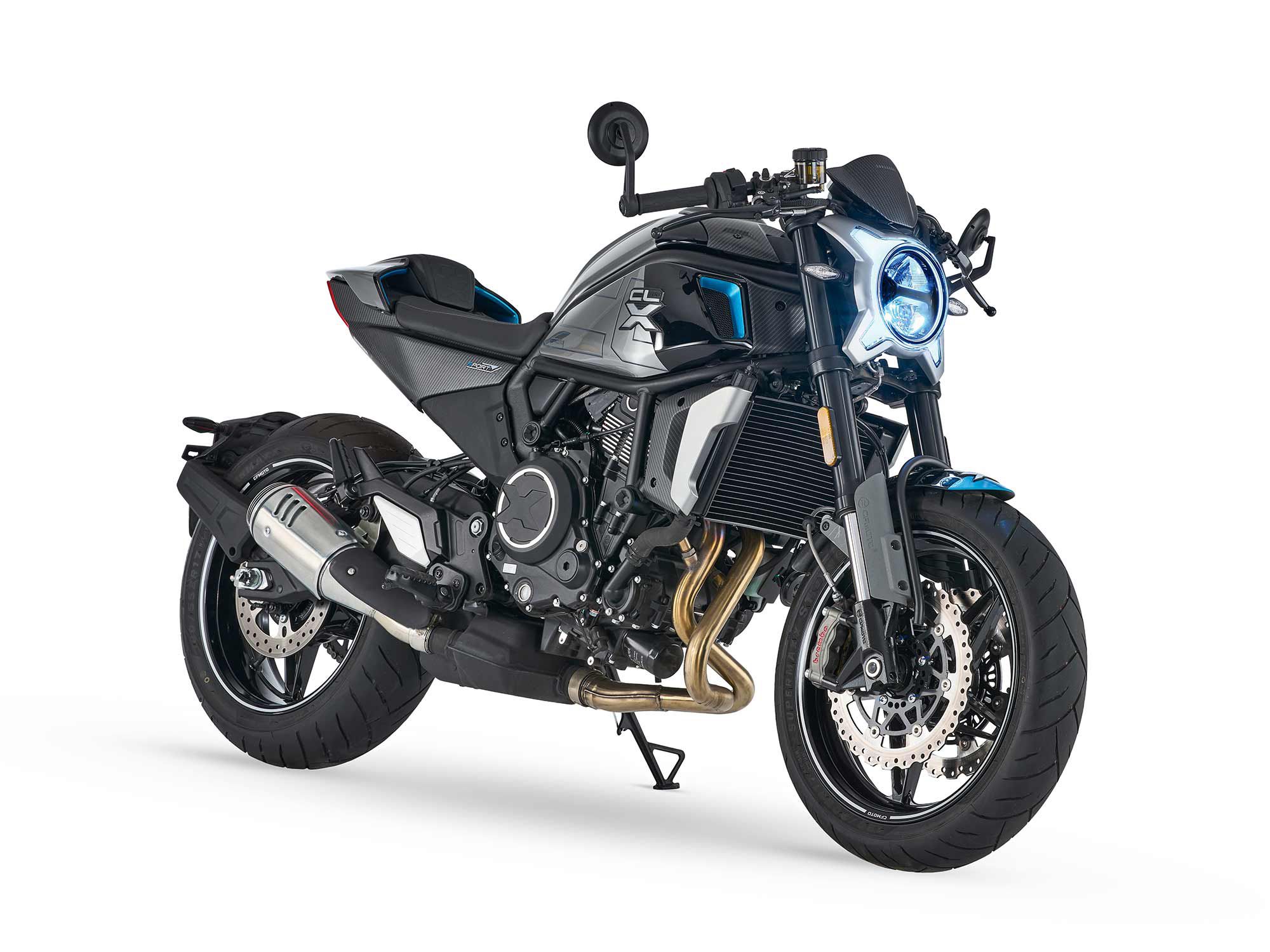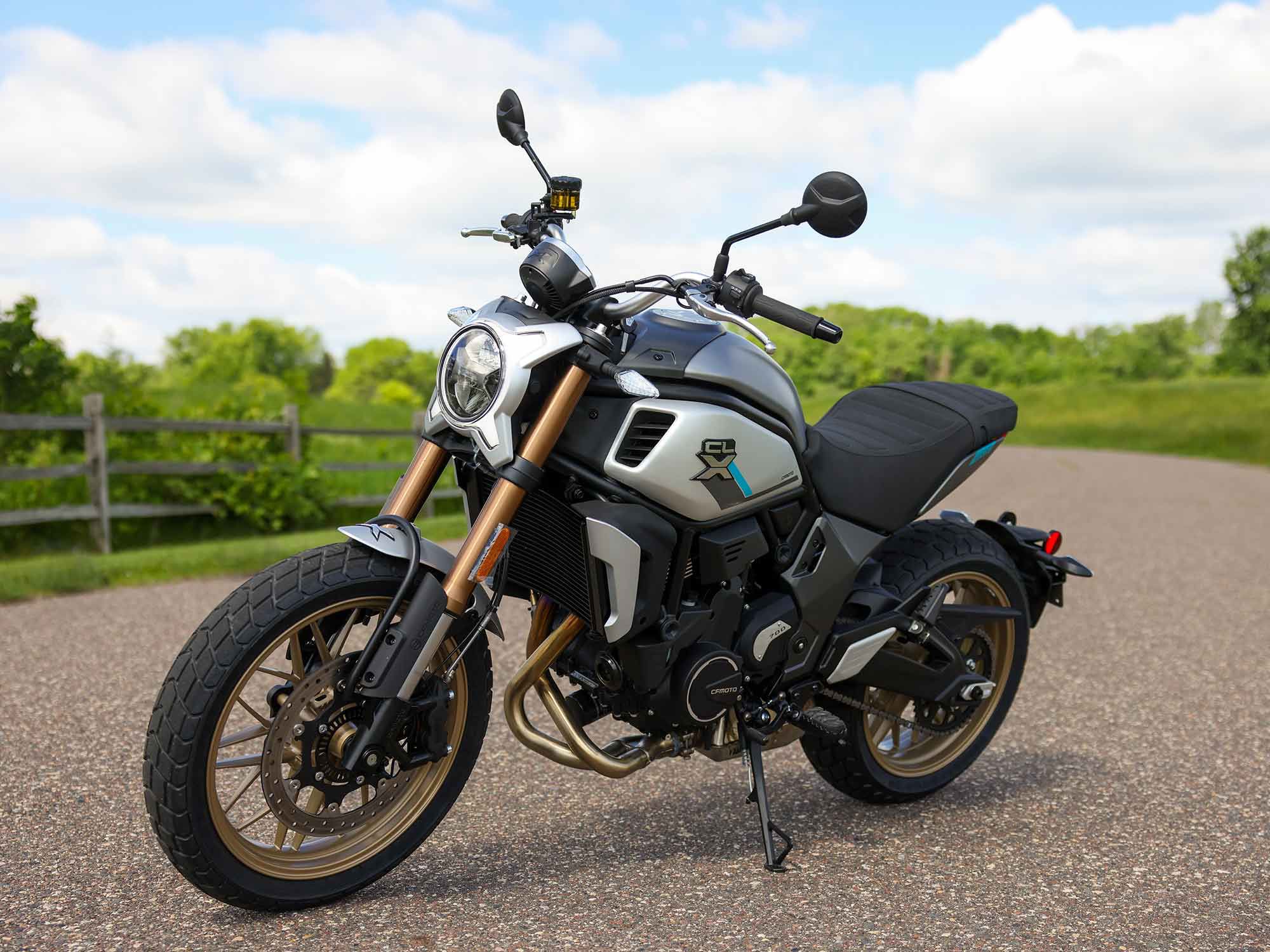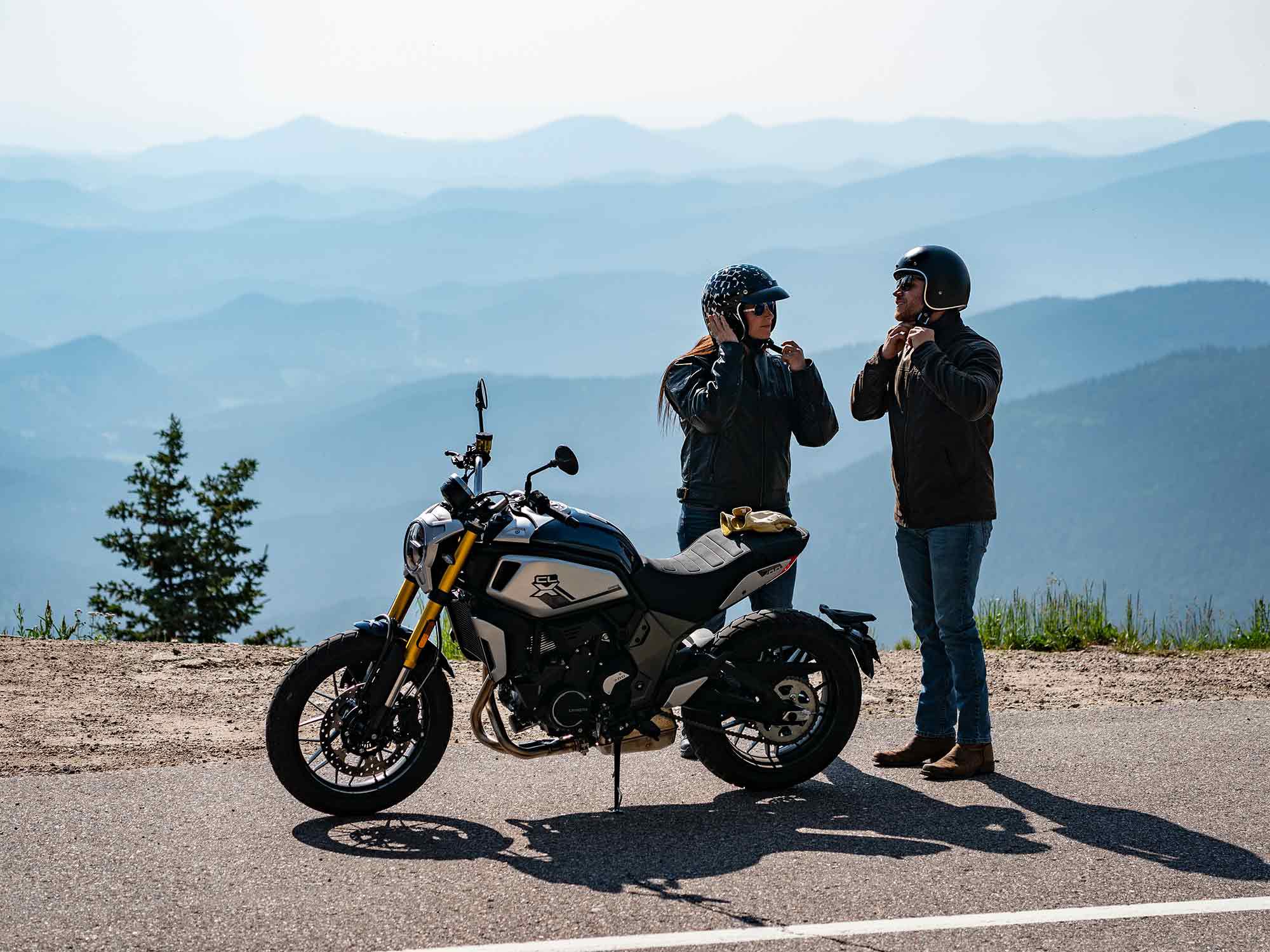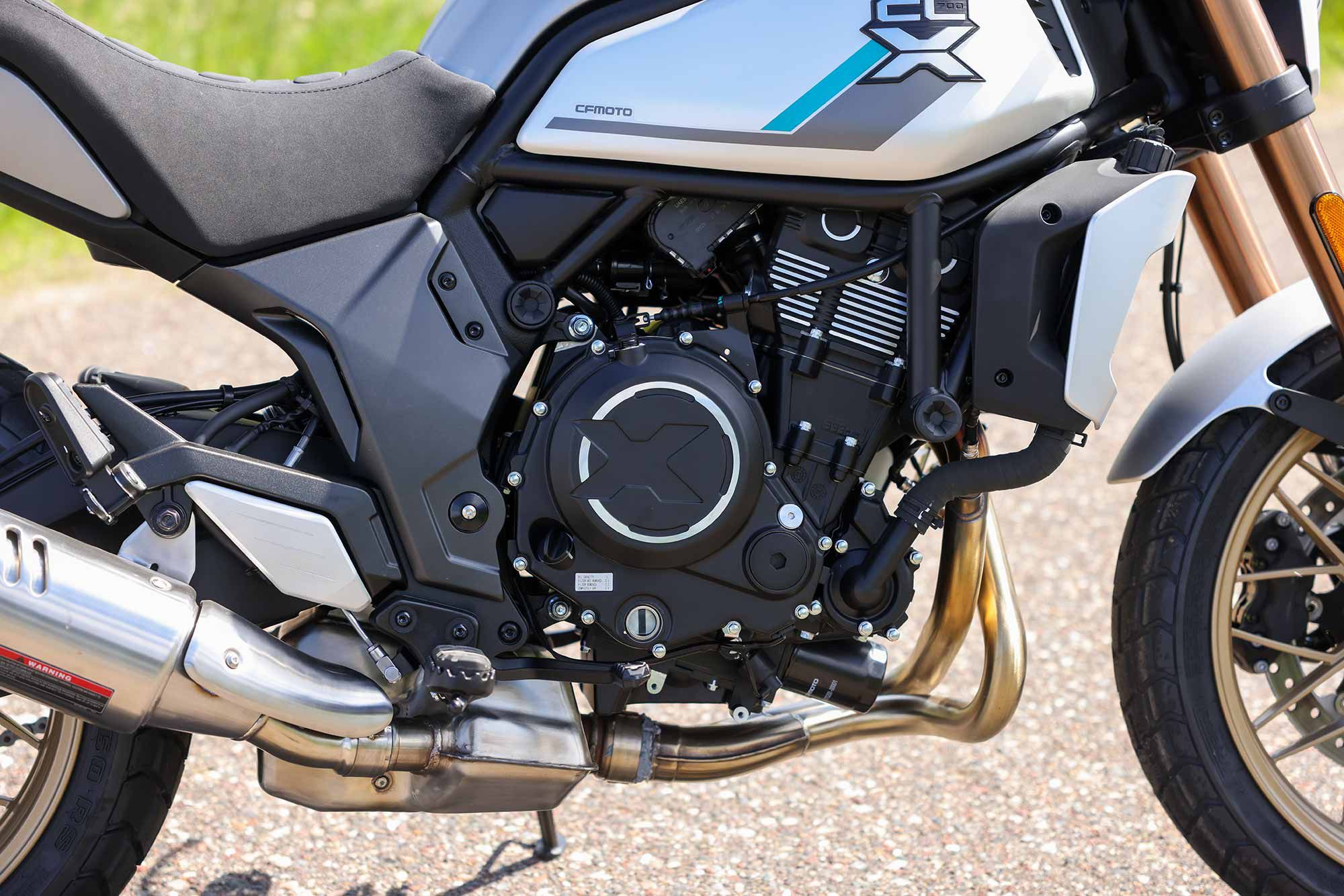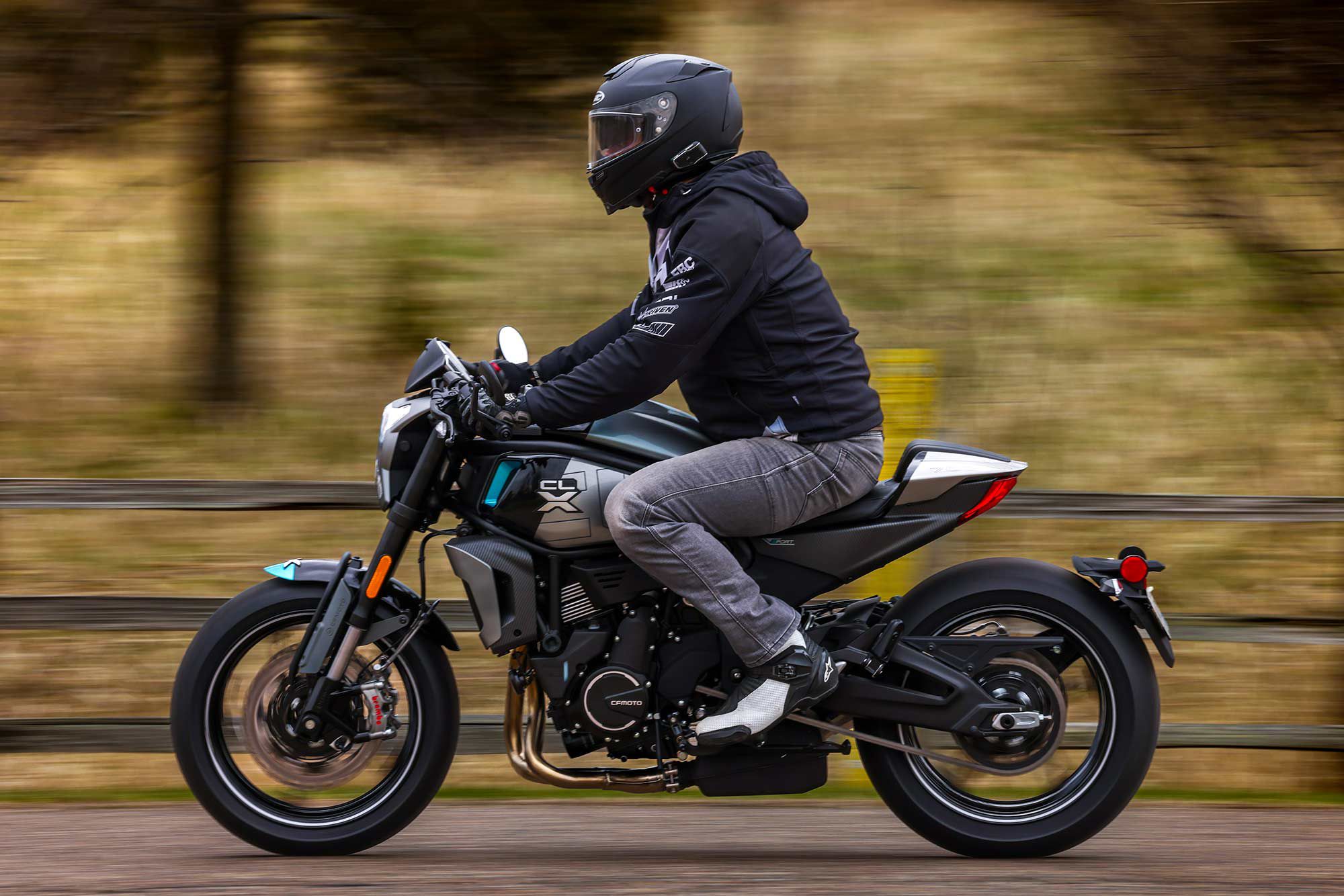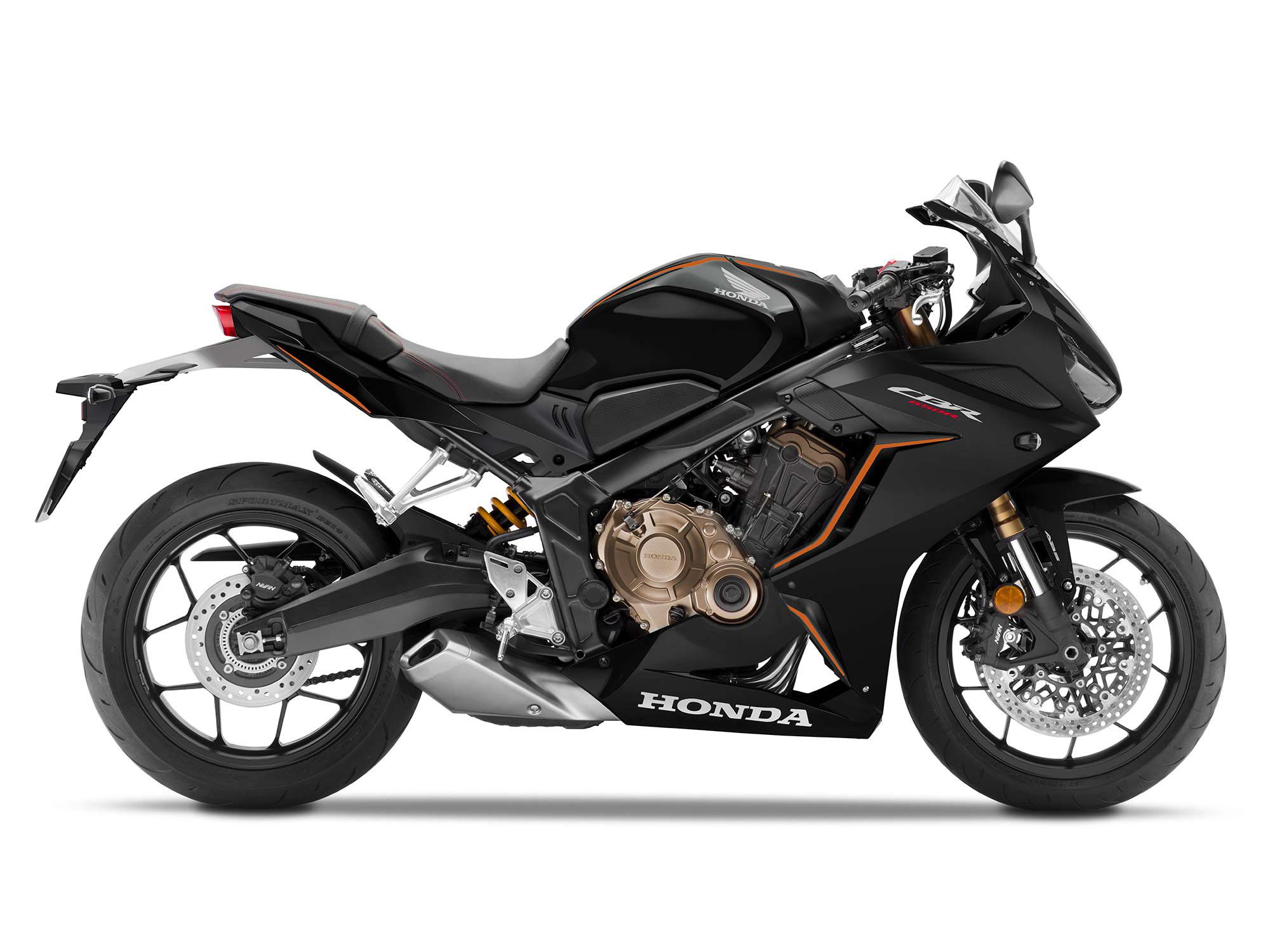
Ups
- Smooth inline-four engine
- Not overly sporty, which makes it great for daily riding
- Who can say no to Fireblade-like styling?
Downs
- Only comes in Matte Black Metallic
- Limited suspension adjustment
- Higher MSRP than some middleweight twins
Verdict
Riders looking for a bike with sportbike styling and handling but an extra dose of practicality will be interested in the CBR650R. An inline-four engine offers more performance than comparable middleweight twins, and it’s hard to argue with the build quality of a Honda.
Overview
The CBR650F hit US shores in 2014 and served as Honda’s bridge between the beginner-friendly CBR500R and the track-oriented CBR600RR. The bike was renamed the CBR650R in 2019, after receiving ground-up revisions and upgrades. That was soon followed up by a move to Showa’s Separate Function Fork Big Piston (SFF-BP), new cams and intake timing, revised bodywork, revised exhaust, and improved emissions in 2021.
The CBR650R is a fully faired variant of Honda’s CB650R naked bike and draws inspiration from the supersport realm with styling cues from the CBR1000RR. Consider this an easy-to-live-with commuter that simultaneously dishes out decent power (for the category) and handles well when it’s time to hit the canyons.
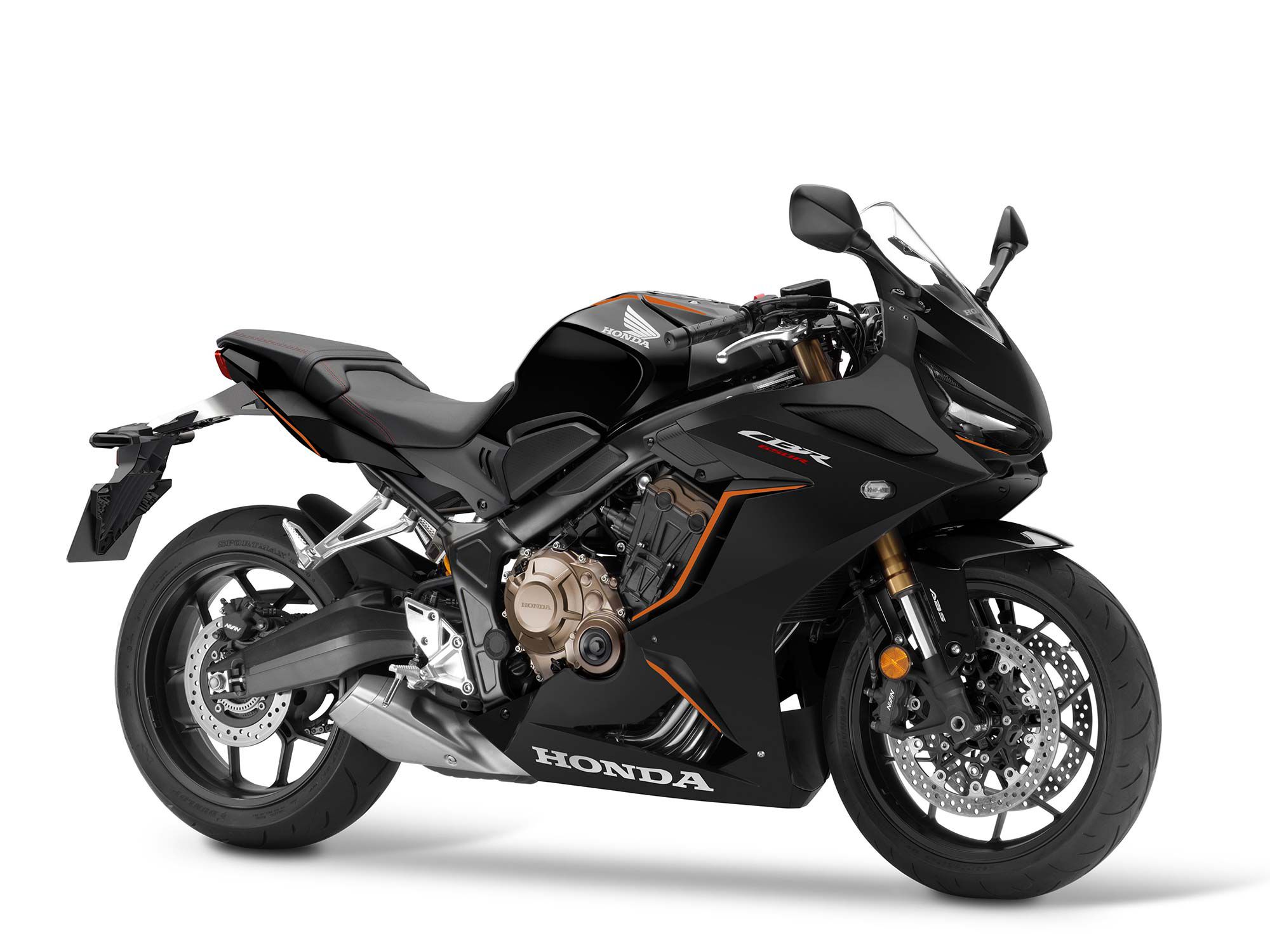
Updates for 2022
Honda revised the CBR650R in 2019 and 2021, and therefore left the 2022 model untouched. There was, however, a $100 price increase. Matte Black Metallic returns as the main color; keen eyes will notice the striping has changed colors though.
Pricing and Variants
The 2022 Honda CBR650R is available in just the one trim, with an MSRP of $9,799. Keep in mind that Honda does offer the CB650R naked bike with similar hardware, but a different look and feel for those not drawn to the CBR’s sportbike styling.
Competition
There’s no shortage of mid-displacement sportbikes on the market today, and each offers a little something different. Engine configurations, hardware, and intended use all vary in this space, meaning there’s something for everyone.
The CBR’s biggest competitor is the Kawasaki Ninja 650 ($7,999), but the naked Suzuki SV650 ($7,399) should also be considered. Want something a little more track oriented? Yamaha has the YZF-R7 ($9,199), while Aprilia offers the RS 660 ($11,399).
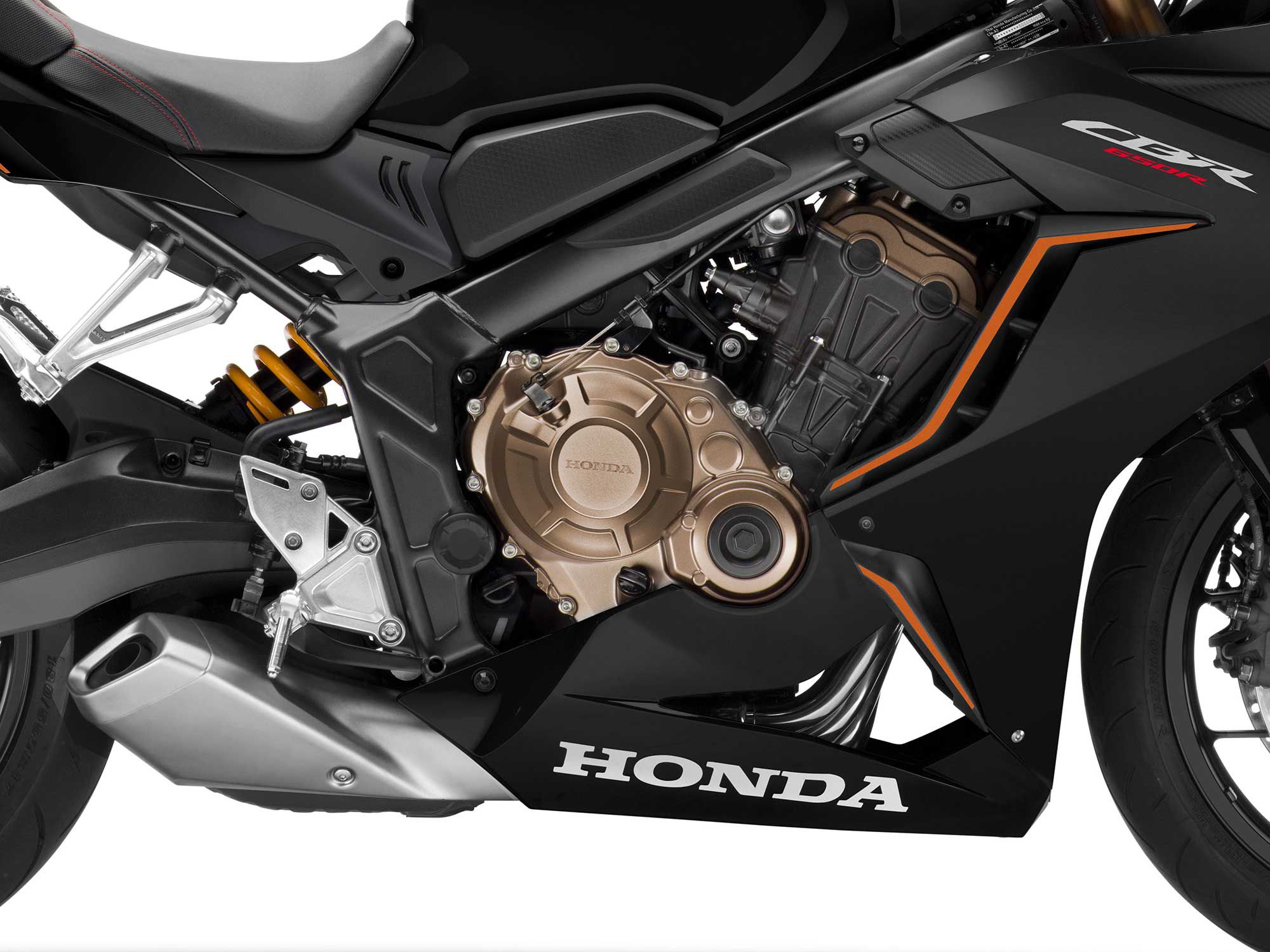
Powertrain: Engine, Transmission, and Performance
The CBR650R shares an inline-four engine with its naked cousin, the CB650R. Balancing performance and rideability, the powerplant has a throaty intake sound as it spools up to its peak 80.1 hp and 41.73 lb.-ft. of torque (both of which were measured on our in-house dyno). There aren’t any power modes, but that’s okay as the engine delivers ample power up top, while being docile enough in the lower revs and feeling very flexible.
The slip-assist, cable-actuated clutch is claimed to lighten clutch operation by 12 percent compared to pre-2019 models, making managing the clutch easy and less tiring. Although the gearbox is easy to work, we did find that the six-speed transmission occasionally slipped into neutral when shifting between first and second gear at high rpm. There’s no ride-by-wire throttle, but the throttle is well calibrated.
This is an overall easy motorcycle to ride, thanks to the smooth fueling, light clutch, and decent power.
Chassis/Handling
Honda switched from the Showa SFF fork to SFF-BP fork in 2021. The suspension provides a firm and sporty ride, with great front-end feel. A caveat to this is that the fork can feel a bit jarring when coming across larger sharp-edged bumps. Obviously Honda still wanted to pump some sportbike DNA into this bike.
The Showa shock is refined and composed and works well when compared to other non-linkage setups.
The steel diamond frame utilizes pressed swingarm pivot plates and twin elliptical spars tuned to be stiffer around the headstock and more flexible in the spar sections for balanced handling and feedback, says Honda. The CBR’s rider triangle also puts the rider in a commanding position that makes it great for flicking the bike through corners. The CBR is ready to play when you are.
Brakes
Radial-mount four-piston Nissin calipers bite onto a pair of 310mm floating discs up front. This setup is complemented by a Nissin single-piston caliper and 240mm disc out back. ABS is standard at both ends, but cannot be disabled. The lever and pedal provide easy-to-understand communication and there’s adequate bite at the discs for street use.
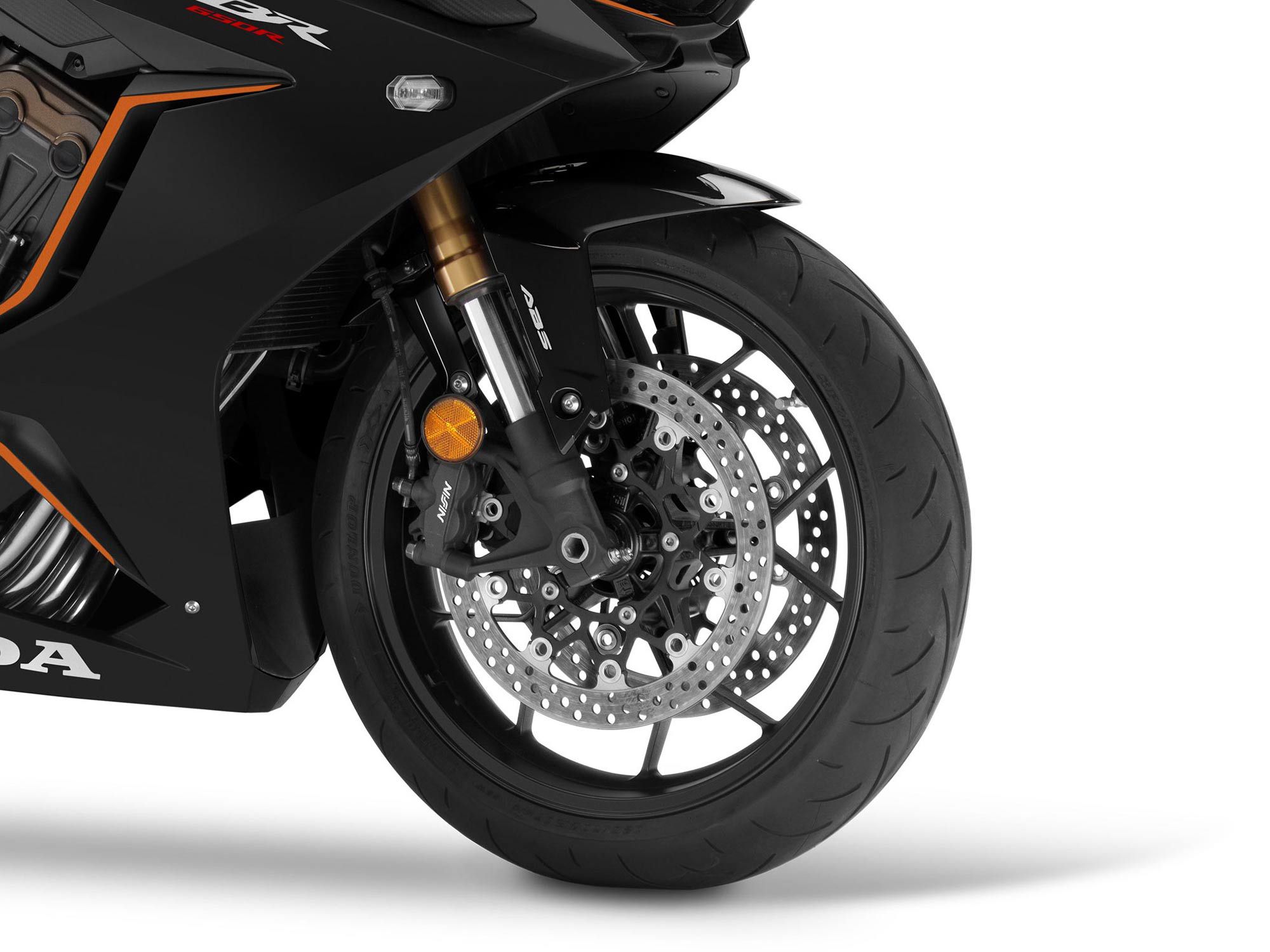
Fuel Economy and Real-World MPG
In testing, the CBR650R returned an average of 39.5 mpg.
Ergonomics: Comfort and Utility
Clip-on handlebars are mounted beneath the top triple clamp but rise up for a more relaxed riding position when compared to a true supersport.
Unlike its naked sibling, the CB650R, the CBR is equipped with a full fairing and windscreen for deflecting wind from the rider. The windscreen could be a tad taller for better wind protection, but that’s nothing the taller windscreen in the Honda OE accessory catalog won’t fix. Both the rider and passenger seats are wide and well padded for all-day comfort. Seat height is 31.9 inches.
Electronics
Electronics are limited to ABS and Honda Selectable Torque Control (HSTC).
HSTC can be turned off with the handlebar-mounted switch. And while it’s unlikely you’ll push the CBR hard enough to put the system through its paces (this is a city-oriented bike after all), it’s nice to have the extra level of safety.
Dual LED headlights and an LCD dash are standard equipment.
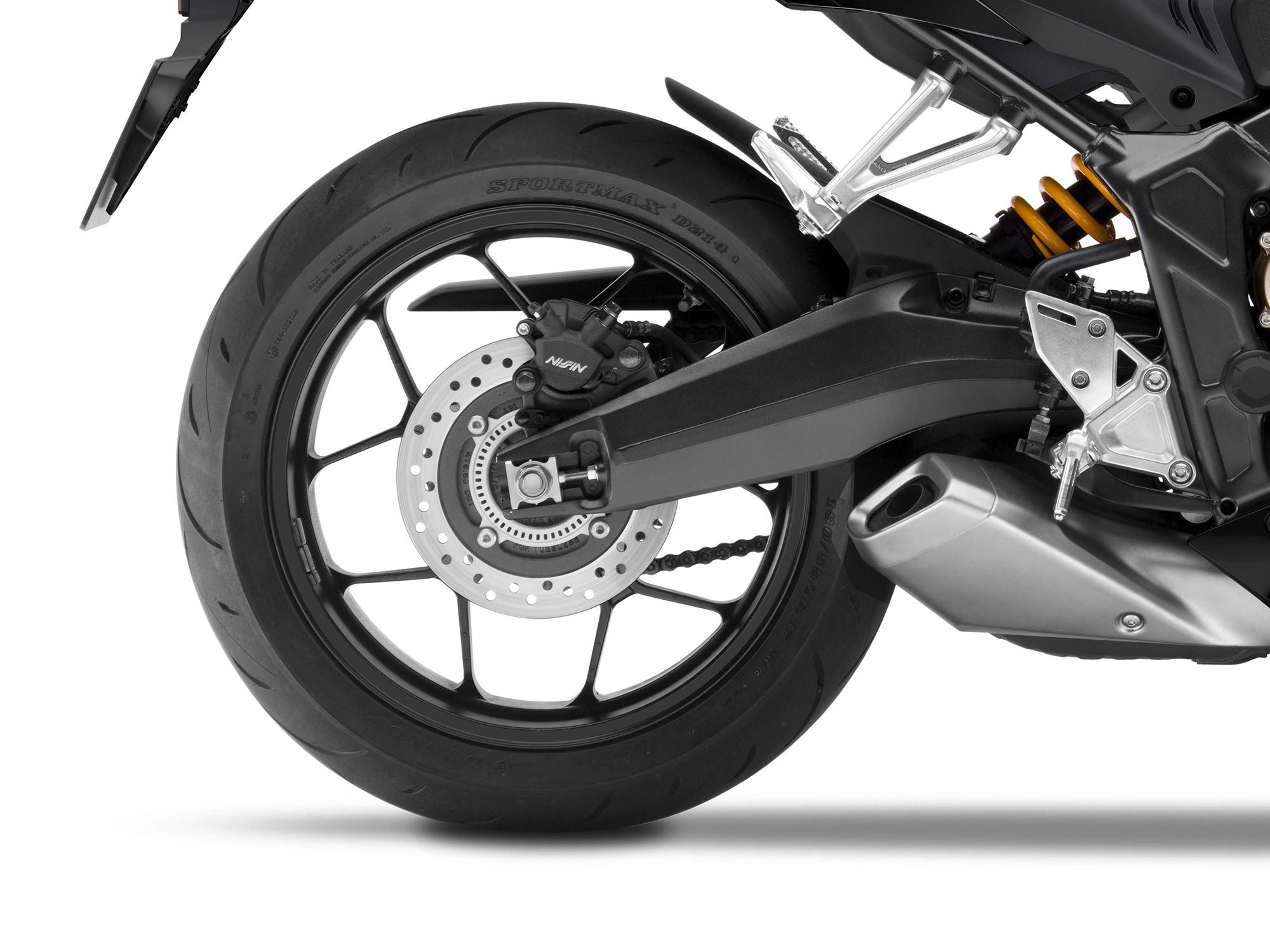
Warranty and Maintenance Coverage
Honda offers a one-year, unlimited-mileage warranty for the CBR. Coverage can be extended with the HondaCare Protection Plan.
Quality
The CBR has sharp, angular bodywork that contributes to its polished appearance. And while assembled in Thailand, the CBR650R lives up to the high standards of the Japanese manufacturer.
2022 Honda CBR650R Claimed Specs
| MSRP: | $9,799 |
|---|---|
| Engine: | 649cc, DOHC, liquid-cooled inline-four; 4 valves/cyl. |
| Bore x Stroke: | 67.0 x 46.0mm |
| Transmission/Final Drive: | 6-speed/chain |
| Fuel Delivery: | PGM-FI fuel injection w/ 32mm throttle bodies |
| Clutch: | Wet, multiplate slipper/assist |
| Engine Management/Ignition: | Full transistorized |
| Frame: | Steel diamond |
| Front Suspension: | 41mm Showa SFF-BP fork; 4.3 in. travel |
| Rear Suspension: | Showa shock, preload adjustable; 5.0 in. travel |
| Front Brake: | Dual radial-mounted 4-piston Nissin hydraulic calipers, floating 310mm discs w/ ABS |
| Rear Brake: | 1-piston caliper, 240mm disc w/ ABS |
| Wheels, Front/Rear: | Y-spoke aluminum, 17 in. / 17 in. |
| Tires, Front/Rear: | 120/70-17 / 180/55-17 |
| Rake/Trail: | 25.3°/4.0 in. |
| Wheelbase: | 57.0 in. |
| Ground Clearance: | 5.2 in. |
| Seat Height: | 31.9 in. |
| Fuel Capacity: | 4.1 gal. (0.8 gal. reserve) |
| Claimed Wet Weight: | 456 lb. |
| Contact: | powersports.honda.com |
Source: MotorCyclistOnline.com

